NatureDiary » Blog » Travel Guides » Information

Long-Lasting Food To Carry While Travelling In India
Getting proper food is one of the biggest concerns during long journeys in India , especially if you’re travelling by train. Unlike road travel, you can’t stop at dhabas and restaurants for your meals. In case you are travelling on a flight , you have plenty of options at the airport.
During train travel, IRCTC provides food and catering for certain travel classes, but everyone is not a fan of railway food. I myself prefer to carry homemade food while travelling or buy food before boarding the train.
Fresh food cooked in the pantry cars is available only to first-class travellers, while passengers in 2A and 3A coaches receive food loaded from kitchen setups at different stations.
Being an avid traveller myself, I’ve learned the pain of not getting proper food during train travels . While I’m not very picky about food, there are obvious health concerns to worry about. With that said, the purpose of this article is to guide you on different ideas for Indian food to carry while travelling . I’ve tried to be as inclusive as possible to accommodate different food preferences.
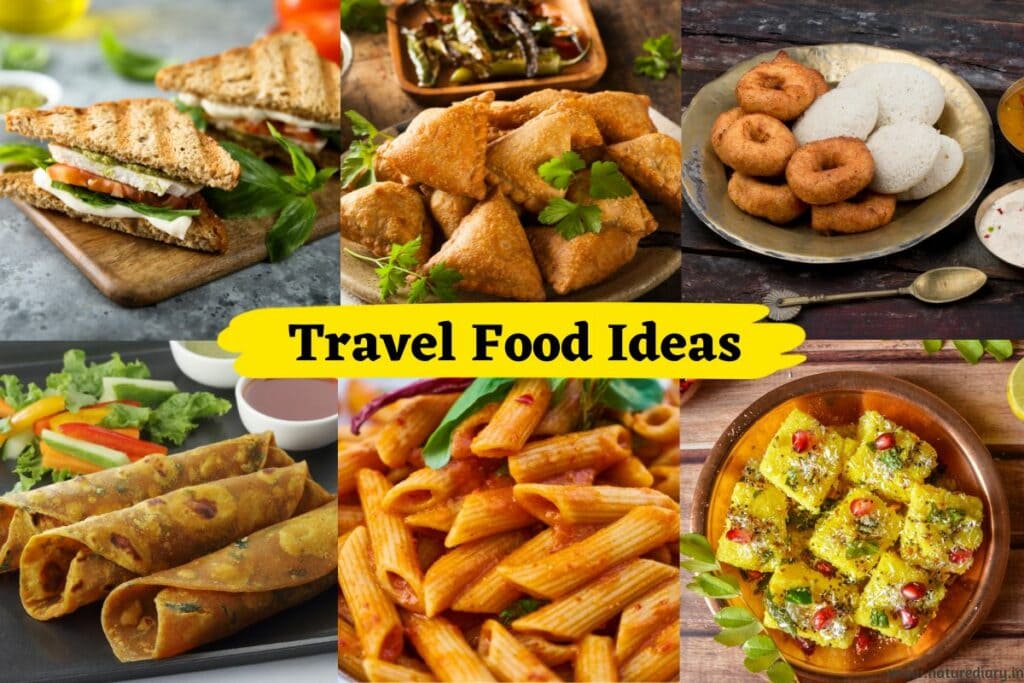
Breakfast Ideas During Travel
Let’s start with breakfast since nobody loves to start the day in a ruined mood. You may either buy your breakfast from vendors or at stations or carry homemade breakfast items. Here are the best breakfast ideas, some of which I personally carry during my train travels.
1. Sandwiches – The Best Option
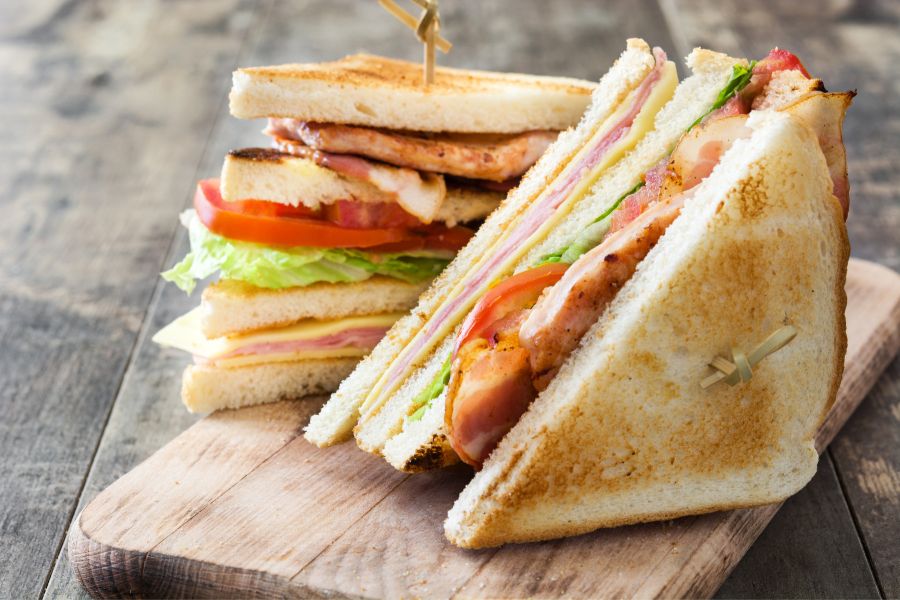
When it comes to readymade food for travel , sandwiches are one of your easiest options. Not only are they mess-free, but there are plenty of sandwich ingredients that won’t go bad quickly.
Besides, one can make sandwiches with anything from fresh vegetables and dairy products to cooked fillings . This makes it a suitable breakfast item for travellers with dietary or religious restrictions.
The only issue with carrying sandwiches for long periods is that the bread can turn soggy. You may have to carry the bread and the other ingredients in separate containers to prevent this. Sandwiches made with some ingredients like cheese, jam, or cream can stay for a few more hours without getting soggy. You can check and prepare various Indian sandwich recipes for your next trip.
2. Fruits – Essentials To Stay Healthy
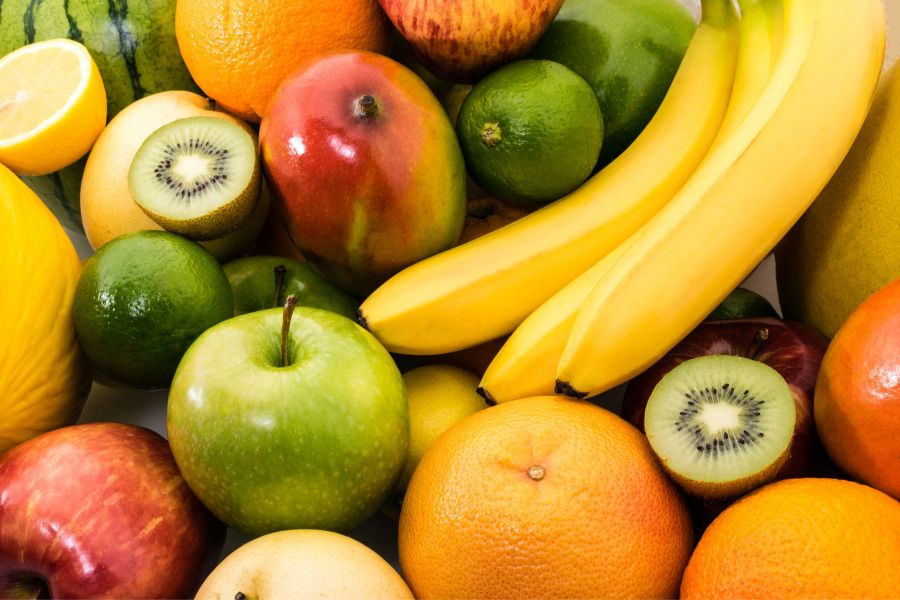
Fruits are always a good choice if you’re trying to stay on a healthy diet . You may either carry them from home or buy them from vendors during your travels. Apart from the fruit sellers at almost every major railway station, vendors boarding the trains sell bananas, apples, oranges, and other fruits too. Just grab a good mix of different fruits and start your day with a healthy breakfast.
3. Egg or Butter Toast – Your Personal Choice
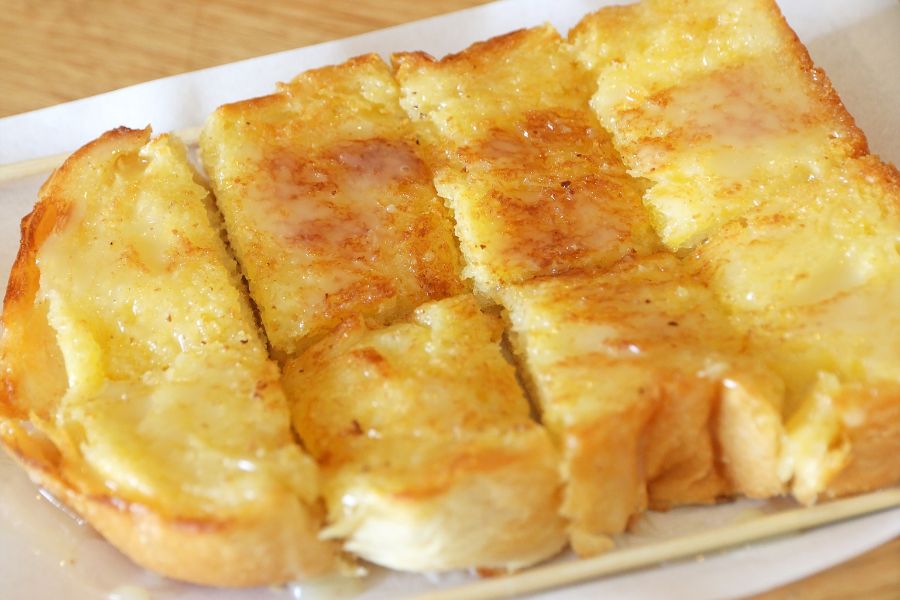
These are one of the most common items available on Indian trains during breakfast hours. A hot and fresh egg toast or simply bread toast with an omelette can make a delicious breakfast too. In case you’re a vegetarian and don’t eat eggs, you can always go for butter toast instead. Besides being simple and healthy, this is very affordable food for train journeys.
4. Idli And Vada – The Long Laster
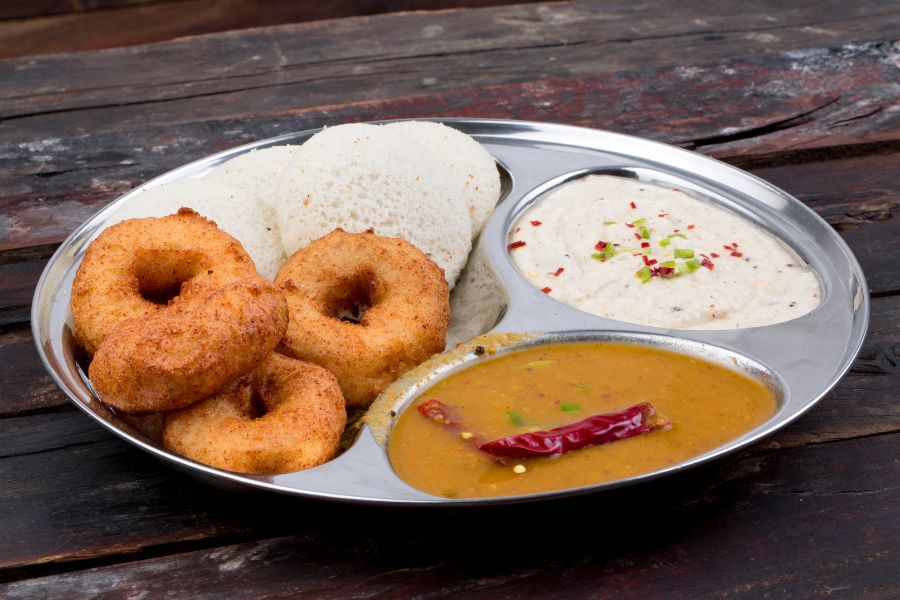
If you’re fond of South Indian food, idli and vada are among the best long-lasting Indian food for travel on trains. Neither of the two would get spoiled any time soon as long as you pack them properly in foils and airtight containers. Carrying the sambar might be a problem, but focan simply eat them with chutneys instead.
5. Kachori – Most Popular Indian Travel Food
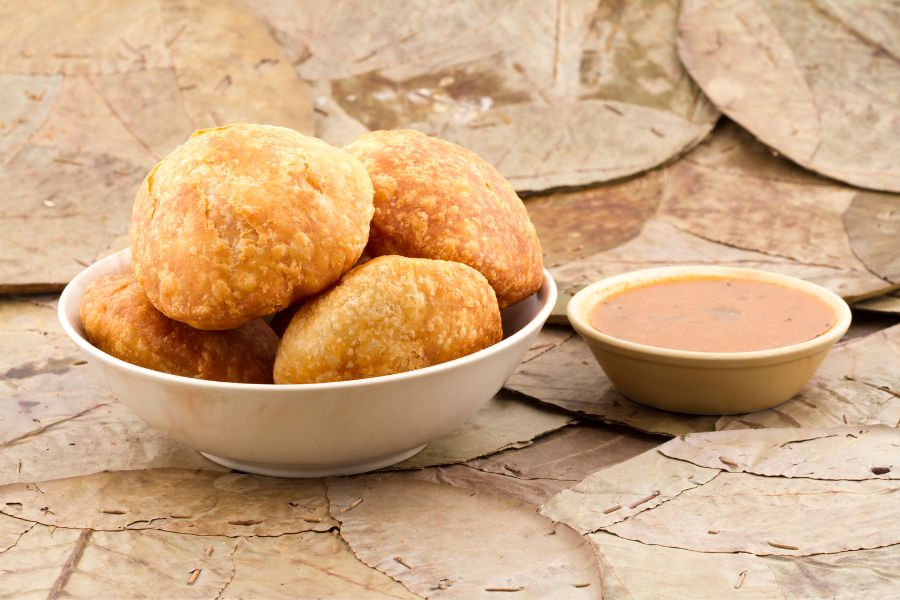
It is a popular food that most of us love, and commonly available on trains. Kachori vendors board trains at various times of the day, especially in the morning. Unless you’re on a diet or don’t want to eat any sort of unhealthy food from vendors, you might want to go for it.
Dry kachoris (khasta kachoris) are also a good choice if you need food to carry while travelling in India. Firstly, you can carry them for long periods without worrying about them going bad. Secondly, they’re dry items and don’t cause a mess. You may either make them at home or buy them before boarding the train.
6. Upma – Minimal Yet Nutritious
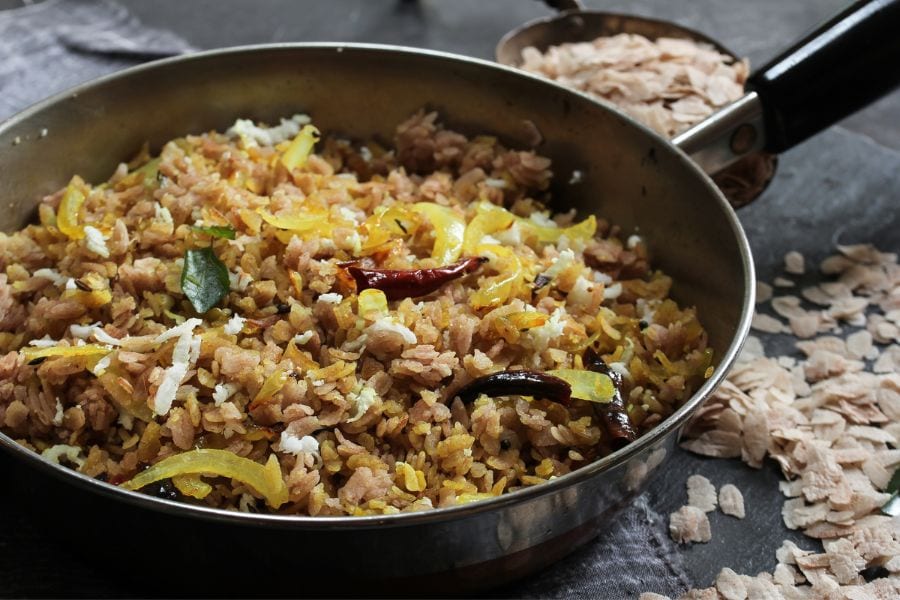
For travellers who love North Indian food, Upma is always a great choice. The dry texture of this dish makes it mess-free, and you can carry it for long periods without any problem. The light texture of upma makes it a perfect breakfast item during travel , while the ingredients make it healthy and nutritious. It’s easy to see why I listed upma among the best food for the train journey.
Lunch And Dinner Ideas For Indian Travel
Now that we have covered the breakfast items, let’s find out what you can have for lunch or dinner when travelling by train. This is often a problem as most of the common Indian meals involve gravy or curry-based foods, which might create a mess. Thankfully, there are a few relatively dry and non-messy options too.
1. Paratha And Puri – Delicious Travel Food
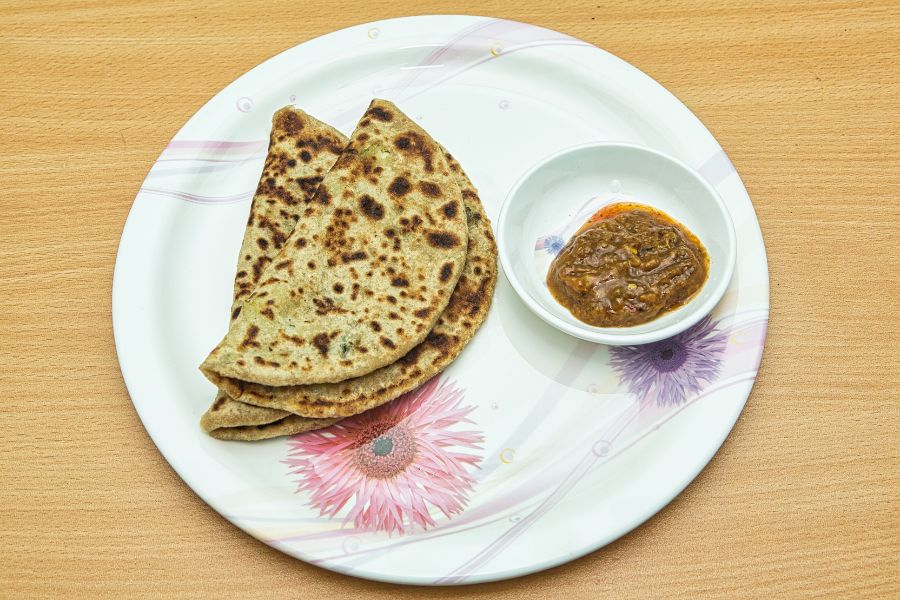
Parathas and puris are one of the most common tiffin choices in India. However, they’re also one of the best travel food recipes for lunch and dinner as they’re easy to make, can be stored for a long time, and are quite satisfactory for the stomach.
If you’re setting out in the morning and have some time, you can make parathas or puris and pack them for lunch. However, make sure the food accompanying the parathas is something dry and won’t go bad if you leave it packed for a long time.
Alternatively, you can just go for parathas made with the fillings already inside them, such as aloo paratha or onion paratha . In this case, all you’ll need is some pickle.
2. Thepla – Best Alternative to Paratha
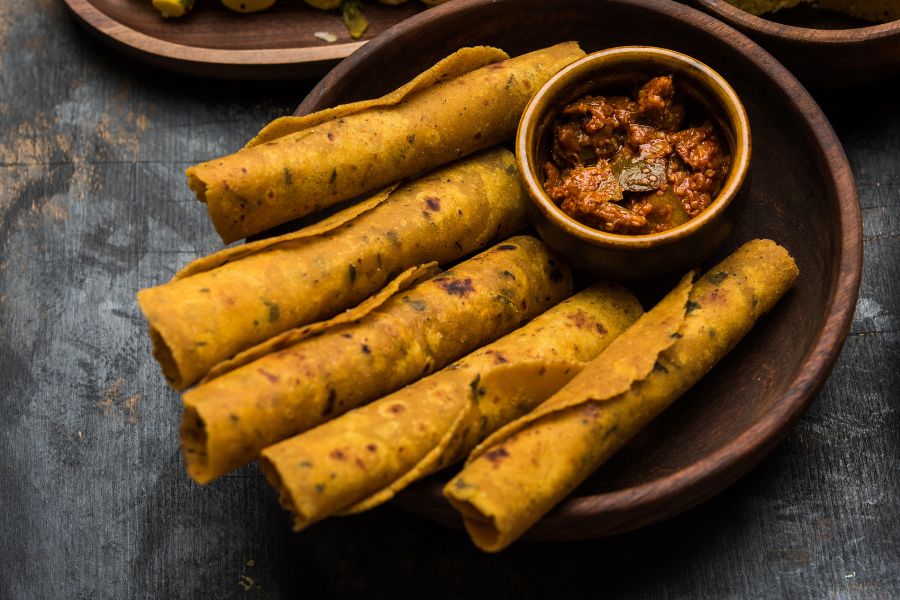
Similar to rotis and parathas to come extent, theplas are a great option for long train journeys too. For train travel, it’s better to go for different thepla variants like methi thepla , doodhi thepla , zucchini thepla etc., rather than regular theplas.
The added flavour will make up for the lack of a good side dish. In this regard, remember not to use curd when making the theplas. Curd lowers a thepla’s shelf-life , which is the exact opposite of what you need.
3. Roti – Most Preferred Dinner Choice
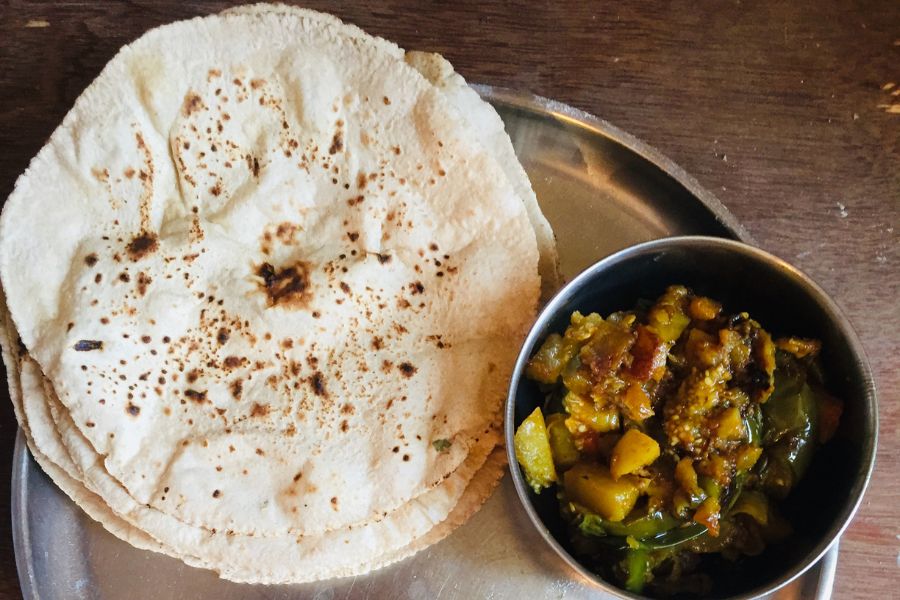
Rotis are another good type of homemade food for travelling. Parathas are delicious, but rotis are admittedly healthier as they don’t contain oil . Being a common staple, rotis are widely available, and you can easily buy some before you board the train.
The same advice I mentioned for parathas goes for rotis too – eat the rotis with dry side dishes to avoid creating a mess . If you decide to eat the food provided by IRCTC, you may have rotis among your options there too.
4. Rice With Side Dishes – Best Alternative To Roti
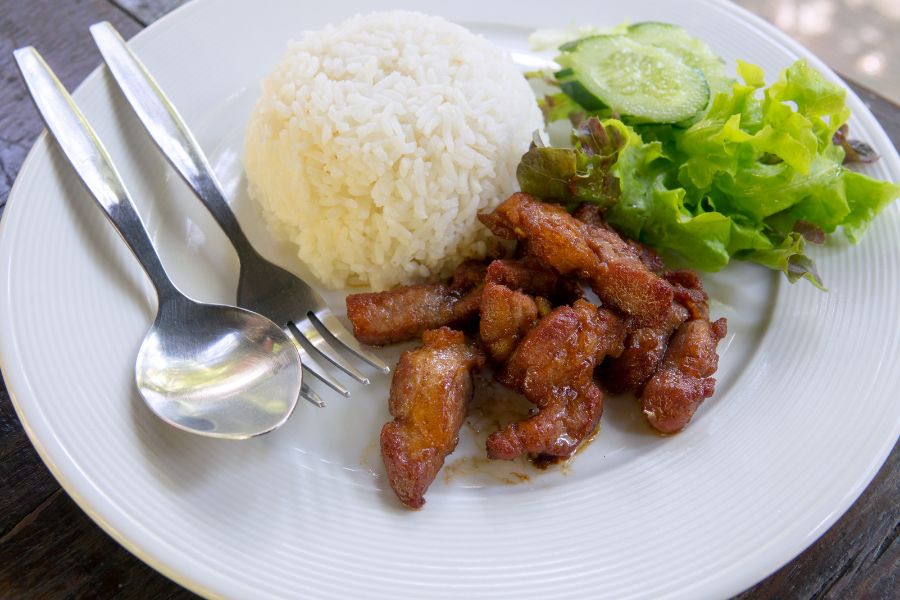
I mention rice only because it’s a staple food in India and one of the most popular meals. However, this isn’t a viable option unless you’re travelling in a train class with IRCTC catering or you are on a road trip .
A variety of thalis, including both vegetarian and non-vegetarian options, are available on Indian trains. Even if the official catering service isn’t available to you, getting good food during train journeys won’t be a problem. Speaking of IRCTC , did you know that online catering services with price list are also available on trains?
IRCTC has launched an e-catering service that delivers restaurant foods to railway passengers . If you’re picky about your meals or would just like something special for a change, this is the perfect solution.
On the other hand, carrying rice and its side dishes during long journeys is not only inconvenient but there’s a high chance of the food going bad.
5. Pasta – My Favourite
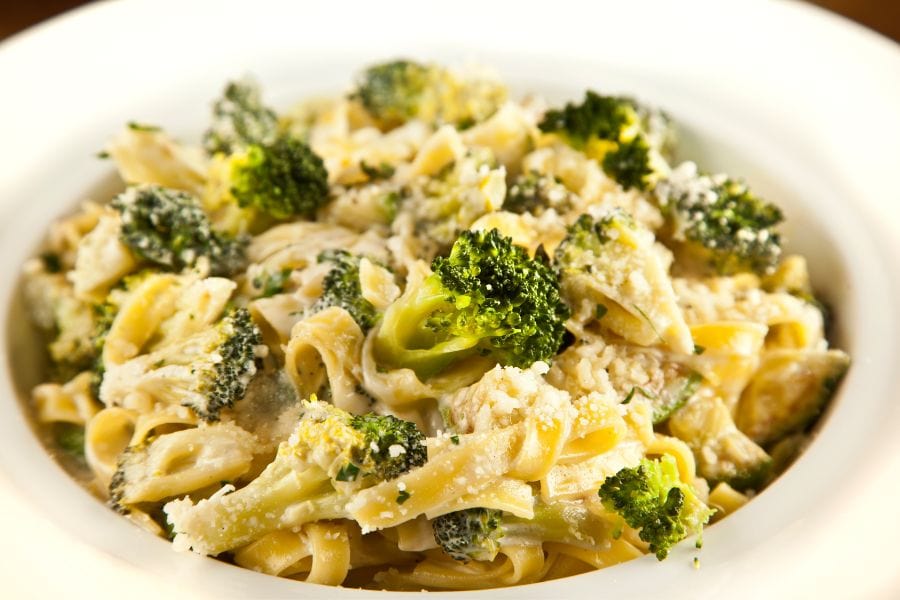
If you’re more in the mood for some spicy homemade food for travelling other than Indian cuisines, you may carry pasta for your train journey. Seasoned with vegetables and sauces , pasta is one of the most popular Italian dishes.
It’s particularly preferred by Indian mothers to cook tiffin for their kids as it doesn’t take much time to make. The same reason also makes it a great choice when you have a train to catch.
Being a fried or boiled dish, pasta can last a long time in an enclosed container . Apart from homemade pasta, you may also buy pasta at various fast-food corners.
Snacks To Carry While Travelling
When it comes to snacks for travelling in India, there’s no dearth of options. In fact, the diverse range of snacks available during road, flight and train travels greatly adds to the experience. I don’t think I have ever had a train journey in which I didn’t buy snacks along the way. Here are some of the best and most popular snack options for you:
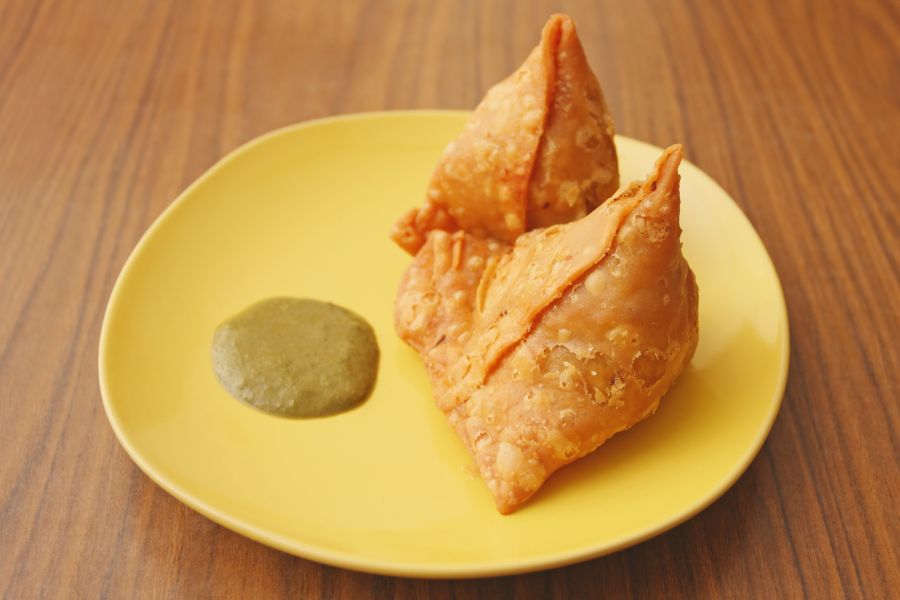
There’s no way one can talk about Indian snacks without mentioning samosas. Affordable and delicious, they have always remained one of the top choices for Indian travellers. You can easily buy them from vendors boarding the trains or the small snack shops on railway platforms . Even IRCTC sometimes provides samosas among the food they offer through their catering service.
It is not only available for train travel, but also at airports and roadside shops. Especially if you get some tea or coffee, there’s no better way to enjoy it than having it with a couple of samosas.
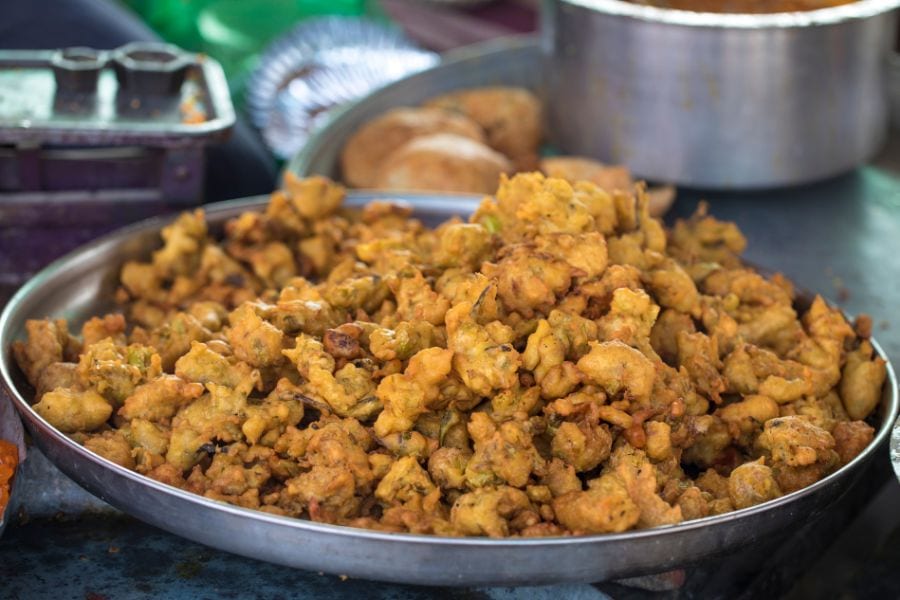
Like samosas, pakoras are another great choice for snacking. If you travel in sleeper class, it’s quite common to find vendors selling various types of pakoras . However, if you’re strictly sticking to homemade food for travelling, you may even make the pakoras at home and carry on your trip.
For any dietary restrictions due to religious factors or health issues, you’re free to pick what to fill the pakoras with. Besides, deep-fried items like pakoras last very long. If you seek long-lasting Indian food for travel, it’s easy to see that pakoras are among your top options.
3. Dry Fruits
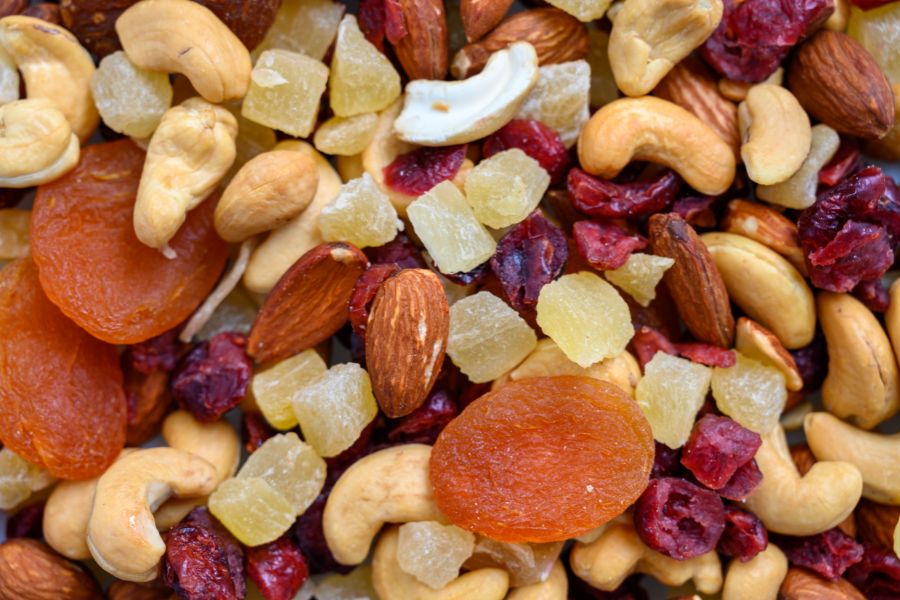
Can’t have samosas or pakoras because you’re on a diet? Don’t worry, here’s an option for travellers who need healthy snacks for the train journey.
Dry fruits like raisins, cashews, and nuts are not only good for your health but also have a very long shelf-life. You may even carry a container full of dry fruits for a train journey that’s going to last a few days. The next time you visit Kashmir or any other place well-known for dry fruits, feel free to buy some for your return journey.
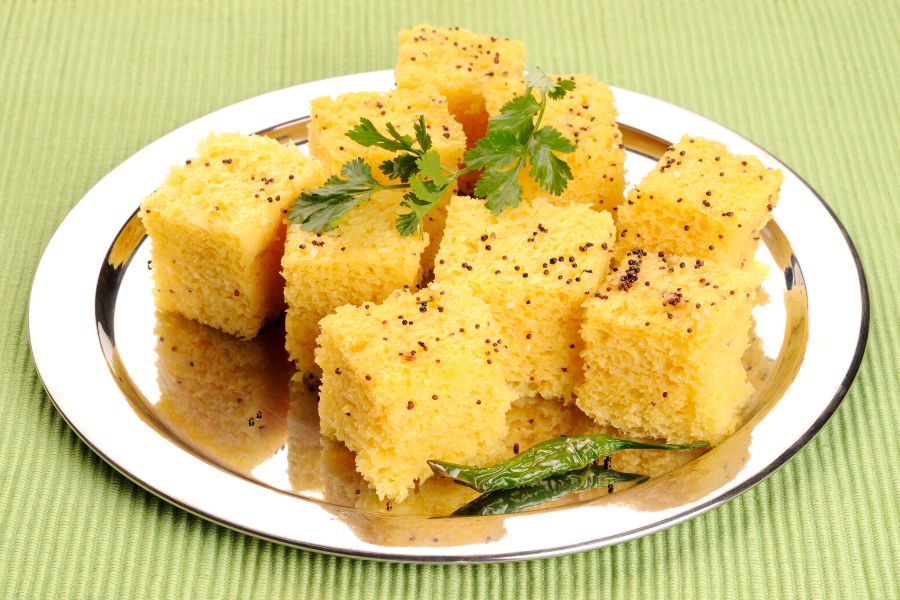
While dry fruits are tasty and healthy, they’re rather small and light. Dhoklas make good snacks for the train journey if you’re looking for a healthy item with low oil content . You may either make them at home or buy them from a snack shop on your way. With their beautiful blend of sweet and sour taste, dhoklas are a good solution if you’re travelling with children and it’s hard to make them stick to healthy foods.
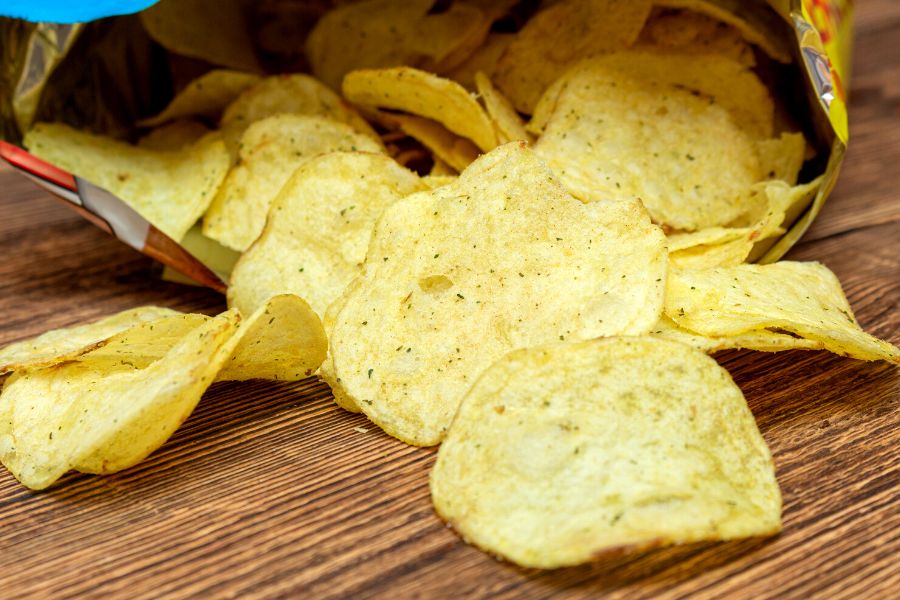
Moving away from the healthy stuff again, chips are one of the most popular packed food items for travel in India among snacks . Ranging from simple salted potato chips to flavoured chips from well-known brands, there’s a diverse range of options to pick from.
Besides, chips are pretty much ubiquitous in India – available almost everywhere. In case you’d love to enjoy this crunchy snack during your journey, but are worried about the ingredients, homemade chips are the way to go. There are various homemade chips recipes like potato chips, sabudana chips, banana chips , etc.
6. Cookies And Cakes
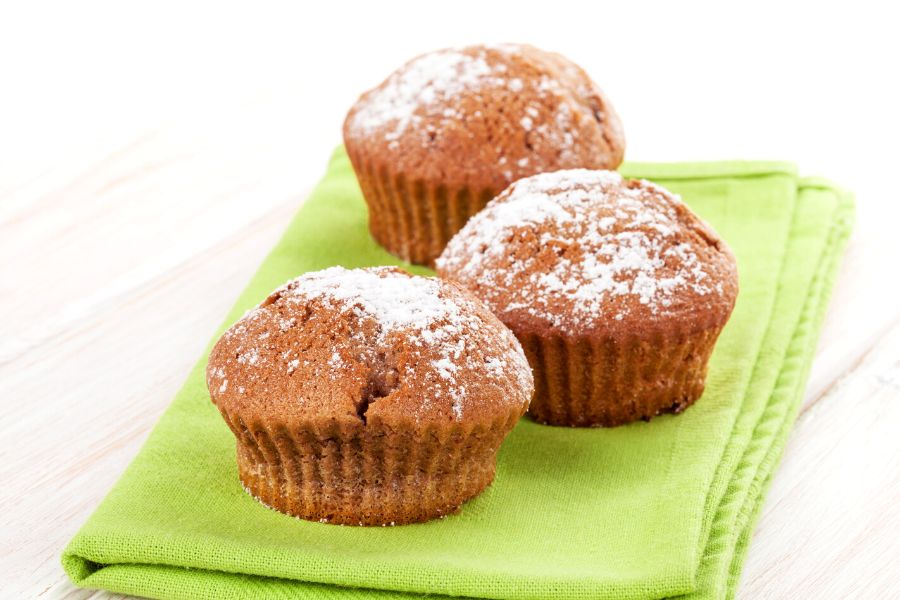
Maybe you’d like to carry some packed food items for travel in India but would prefer something healthier than chips? Well, you can always go for some cakes and cookies. They’re available almost everywhere – even at the small tea stalls along the roads or airport. Besides, baked food have a very long shelf-life, making them a suitable option for longer journeys .
In Conclusion
As for carrying homemade food on train and road journeys, just remember to pick items that won’t go bad by the time you plan to consume them . I personally go for potato-based preparations for my rotis and parathas since they’re dry and less likely to cause a mess.
Apart from the above food ideas, you can also carry chocolates, biscuits, cold drinks, fruit juice, puffed rice, namkeens, and sweets like laddu and rasgulla on your next trip.
In case you plan to travel by plane during your journey, keep in mind that food for air travel deserves special consideration due to various restrictions . Check with your airline to know what kind of food you’re allowed to carry on the flight. Hopefully, you found this guide helpful and can now enjoy your travel on train, air, or road as much as I do.
We hope that you have enjoyed this article. Let us know your experience! If you like us to write on any specific topic, send your request to [email protected] . Your feedback is highly appreciated. We will love to hear from you!
Is This Article Helpful? Cancel Reply
- Rating 5 4 3 2 1
- Main Menu ×
- Search Flights
- Corporate Travel Programme
- Group Booking
- Special Offers
- Travel Insurance
- Flight Schedule
- Check In Online
- Manage Booking
- Seat Selection & Upgrades
- Self-Service Re-accommodation
- Request Refund
- Flight Status
- Nonstop International Flights
- Popular Flights
- Partner Airlines

- Baggage Guidelines
- Airport Information
- Visas, Documents and Travel Tips
- First-time Travellers, Children and Pets
- Health and Medical Assistance

- At the Airport
- The Air India Fleet

- About Flying Returns
- Sign In/Sign Up
- Our Partners
- Family Pool
- Earn Points
- Spend Points
- Upgrade Cabin Class
- Points Calculator
- Customer Support

What are you looking for?
Dining Experience
Taste the culinary finesse of our inflight meals that will entice your palate. With a range of meal choices that consider the richness of Indian and international cuisines, we offer delectable delights for all.
Types of meals provided
International flights – meal services offered by flying time.
Types of major meals: Breakfast, lunch, dinner, refreshment, supper
Types of minor meals: Continental breakfast, hand-helds (wraps/rolls)
The type of major meal depends on your flight's departure time.
Liquor will be served for all major meals except breakfast.
Domestic flights – meal service by time of the day
Nuts and their by-products: Our inflight meals may contain nuts or trace amounts as they are a common ingredient in Indian cuisine. We advise customers with nut allergies to take all necessary medical precautions.
Default meal choice: If your flight departs within 24 hours, you will not be able to choose your preferred meal. The default meal, which is a Vegetarian meal, will be served.
Liquor: Is not served on domestic flights (including domestic sectors of an international flight).
Medical, dietary and religious meals
We understand our passengers may have specific dietary preferences (or restrictions) and have curated a range of options for their selection. You must order these menu options on our website at least 24 hours before departure.
All our special meals are vegetarian except where required by the nature of the meal, e.g., NVML – non-vegetarian meal.
Meals mentioned are served on flights operated by Air India. Customers travelling on partner airlines via codeshare or interline flights are advised to contact the respective operating carrier for their selection.
Please contact our customer service centre for any queries.
It seems like you're in landscape mode. For the best view, switch to portrait mode where the magic happens!
Top 10 Indian Food To Carry While Traveling Abroad

Many people travel for work or pleasure these days to different parts of the world. As much as one might like the idea of seeing new places and experiencing new lives and lifestyles, it is very likely the food in different parts of the world may not suit your palate. Therefore, as the cliche goes – ‘better be safe than sorry’ – so, many people plan on some staple Indian food to carry while traveling abroad . Precisely, when they travel anywhere.
There are many practical reasons why you should carry some amount of food as you travel, they could be useful if you suddenly face a calamity, a delay in reaching your destination, have a sudden sugar dip, are stranded due to unexpected circumstances, and others. However, when it comes to traveling outside the country , not only does the food you carry help you weather the new food options, but it also gives you a sense of home when you look at things you are familiar with.
First things first, before you start packing there are some things you must understand what food items to carry while traveling aboard and why:
Table of Contents
1. Your eating habits
Typically your eating habits will determine how much support you will need in terms of the food you carry. For instance, if you are someone who is a hardcore vegetarian , or vegan, you might find it more difficult to find food outside of India. Especially food which suits the typical Indian palette may be hard to find.
Do You Know??? Hundreds of thousands of people lost their lives in the effort to build the Great Wall Of China, Here are some of the shocking facts that you don’t know about the great wall of China, Click on the link to explore, 15 Interesting Facts About The Great Wall Of China
2. Duration of the trip
Depending on how long your trip is will determine the kind of things you have to carry and how much of it you will need to carry. For instance, if it is a week or a month’s trip, there might be some value in carrying enough for that duration. However, if you are going to travel for a year or more, you might be better served to carry a sustainable amount and have stuff sent to you from time to time.
3. The location you are traveling to
4. your travel budget.
Budget is always a consideration. It is always important to remember Indian food typically is more expensive than the local food. A good equivalent could be how Italian cuisine maybe is more expensive than Indian local cuisine in India. If you have the money, you can eat out. If you do not, you are better served to carry lots of back up.
5. Your tolerance to new cuisine
If you are a picky eater, then chances are your luggage is bound to get heavier. For instance, if you are a vegetarian, but do not mind settling for soups, bread, salads and so on for a meal, then you might not need to carry too much. However, if you like your food only a certain way, then food would need to occupy a bigger space in your luggage.
6. Access to a kitchen
What you carry will depend on your access to a kitchen. If you have access to a kitchen, there is value in carrying things that you can cook as basics and carrying accompaniments to what you cook. However, if you don’t have access to a kitchen, then carrying accompaniments will only add to the weight.
7. Your cooking skills
As much as you have the tools, it’s important to have the talent as well. Can you cook basic things like boiling rice, heating water, etc will also determine what you will carry and if you should carry a few things?
Now, this said, once all the above have been determined or answered here is a list of food to carry while traveling that can be a good option to carry along with you as you embark on the adventure:
Best Indian food to carry while traveling abroad:

Khakhra commonly considered a snack amongst Rajasthanis and Gujaratis is a great travel companion. They have a cracker-like consistency and are made of wheat like roti and then toasted on a special machine. Additionally, it comes in different flavors (such as plain, jeera, methi, masala and more) and is easy to carry without the risk of spilling over or soiling the other items in your luggage. It comes with a long shelf life of sometimes even a year.
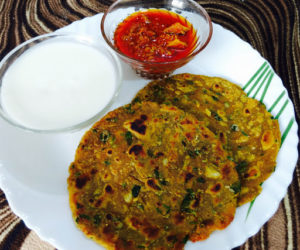
Thepla is softer and made typically of multi-grains. Though it looks very much like a roti or a paratha, it is mixed using milk or curd. This helps the thepla survive for longer. It is popular and hails from the same region as the Khakhra and is also available in multiple flavors (such as masala, methi and curd paratha). When packed properly this too is easy to transport.
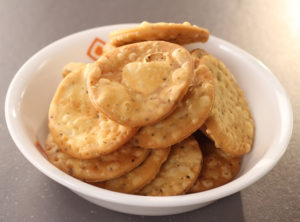
Mathri, also known as, mathi hails primarily from Rajasthan. It is a snack that can easily be interpreted as a biscuit that is flaky and originated in the Indian subcontinent. This Indian biscuit is ready to eat and convenient to carry. The most fuss you may need to do with it is to pair it with some form of pickle to enhance the taste or just have it with your favorite flavor of the tea.
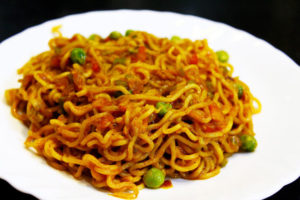
It is very unlikely that anyone who has grown up in an average household in India has not heard of Maggi. These packets of instant noodles, in less than 5 minutes, with just a bowl and a mug of hot water can take you right back home to India. This is no matter where you are traveling or what the circumstance is.
5. Specific spices
If you are traveling to a new city abroad, it might take you a little while before you figure out what you get where. You might have to look, ask around, explore before you find the store that provides everything you need. But before you get to that point, it might be a good idea to carry some basic spices you commonly use, especially if you intend to cook.

Pickles, though made differently in different parts of India, are a staple in every meal. Carrying your favorite pickles can be a great comforter. You can use it as an accompaniment to the khakhras, theplas and other snacks. Alternately, just cook some plain rice and mix it with the pickle and get some yogurt or curd, and you are set for the meal. However, since this comes with oil and has the risk of spilling over, ensure that the packing for it is foolproof and effective.

There are many snacks in different parts of the country that again are great companions as short eats. Some snacks to carry while travelling includes Murukku, Ribbon Pakoda, Mixture, Chiwda, and more. As long as they are not very oily or watery, all kinds of snacks that work for you can be carried and enjoyed in a faraway land.
8. Dry Sweets
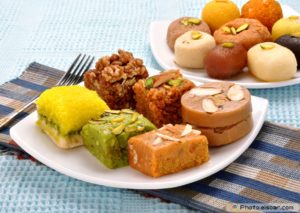
If you have a sweet tooth, dry sweets are certainly something you can consider carrying. There are a host of sweets that you can carry while you travel abroad. Sweets like different forms of ladoos, Kaju Katli, Burfi and so on are some ideas. It is recommended you avoid sweets like rasgulla, rasmalai, Gulab jamoon and so on only because they run the risk of leaking. But remember sweets tend to have a shorter shelf life.
9. Dry Fruits
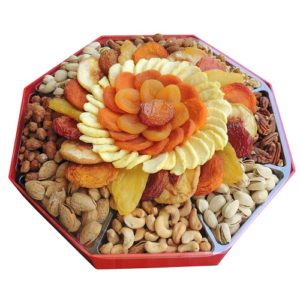
There could hardly be a healthier option when it comes to snacking. They make for a healthy snack to carry while traveling. Carry some dry fruits, so no matter how much sweet and snacks you might eat, dry fruits are always a healthier option. Carry enough dry fruits such as almonds, walnuts, pista, cashews, raisins, and so on, to ensure you have this healthier option till you settle down and find them or find local alternatives in the new land.
10. Powder Mixes
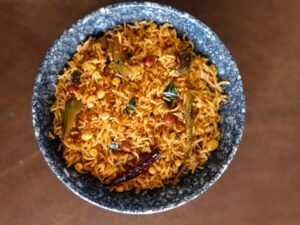
Many cooked powders can be mixed with cooked rice and make for a delicious meal. Particularly in the south of the Vindhyas, there are many options of powders available and some of them are very similar and called different names. Some of the options include puliogare bath, Kandhi podi, gun powder, bisibele bhath, milagai podi, vangi bhath powder, and so on. Many options are cooked uniquely in different households and these days are also available over the counter. This simple yet scrumptious South Indian food to carry while travelling abroad when packed well.
As much as this may not be considered food, it may be important to get a basic first aid kit including the common medicines that you are used to. If, god forbid, you fall sick you may need to activate your insurance and see a doctor, however, some fall back medicines that you are used to will not hurt.
Everything said and done, traveling abroad is an adventure in itself. However, it is also true that you are what you eat. If you can get access to a piece of home to give you the comfort you need when you feel vulnerable in a new and unknown place, you will not regret it. However far you travel, no matter what new things you see, despite the experiences you have, irrespective of the adventures you embark on, sometimes getting back to the familiar can make all the difference. Sometimes, just in those times, when you miss home; the food you carry can bring you back briefly to a life you knew and give you the comfort you need to put your head down and carry on.
FAQs – Indian Food To Carry While Traveling Abroad
What is the easiest meal to carry while travelling in India? If you are looking for healthy food options, you can carry dry fruits, fruits and fresh cut veggies to load up on nutrients. If you would like to relish some tasty food, you can pack snacks like khakra which will stay longer if you store well in an airtight container. If you’re travelling to hill stations or snowy destinations, you can carry maggi packets that will be helpful in fighting the cold weather.
Which Indian vegetarian food is suitable for travelling? Anyday, vegetarian food is better while travelling, out which if you’re looking for North Indian food options, you can opt for Chapatis and Sabzi while Idly and Sambhar will be good for your stomach.
Can I carry non-vegetarian food while travelling? You can try dry meat if you would definitely prefer non vegetarian food but it is not much recommended by doctors because food that has been tainted, improperly cooked meat, and raw seafood can all spread bacteria. Doctors believe it is better to bring vegetarian food on trip in light of these concerns.
What are some ideas for Indian food items suitable for travel? You can try some healthy paratha options with very much less ghee along with some achar or idlies and sambar that will be easy on your stomach while travelling.
Which food will you prefer to carry while travelling? I have been travelling across several states across India and I prefer carrying food depending on the geographical location and climatic conditions. Easy-to-digest food and easy-to-make food will be my go to choices while travelling.
Related Posts
15 best photoshoot places in chennai for breathtaking photos, 15 exciting weekend getaways from chennai for a quick break, 25 best travel instagram accounts to follow, about the author.
Gulshan Bafna
Gulshan Bafna is one of the luxury travelers in India. He, along with his wife, has traveled to many exotic places that one could dream. With their travel journey, they bring us the best face of those places. He compiles all of his travel journeys to give the taste of traveling to his readers. In his writing, he jots down the best things to do in all those places that he has visited. Reading these would help one know better about the place. He is also a seeker who loves exploring and discovering new places and share his experiences with everyone.
Your email address will not be published. Required fields are marked *
Save my name, email, and website in this browser for the next time I comment.

Best Ideas of Indian Food for Travel
Being Indian is all about travelling to explore the world, experience and fun with friends and family. With all this, we generally get concerned on the what dishes to cook while travelling, what food to take along on long distance while doing bus or train travel, what easy recipes can be prepared for such journey much more. Here we bring you the suggestion on such food you can carry while travelling with easy to cook food recipes.
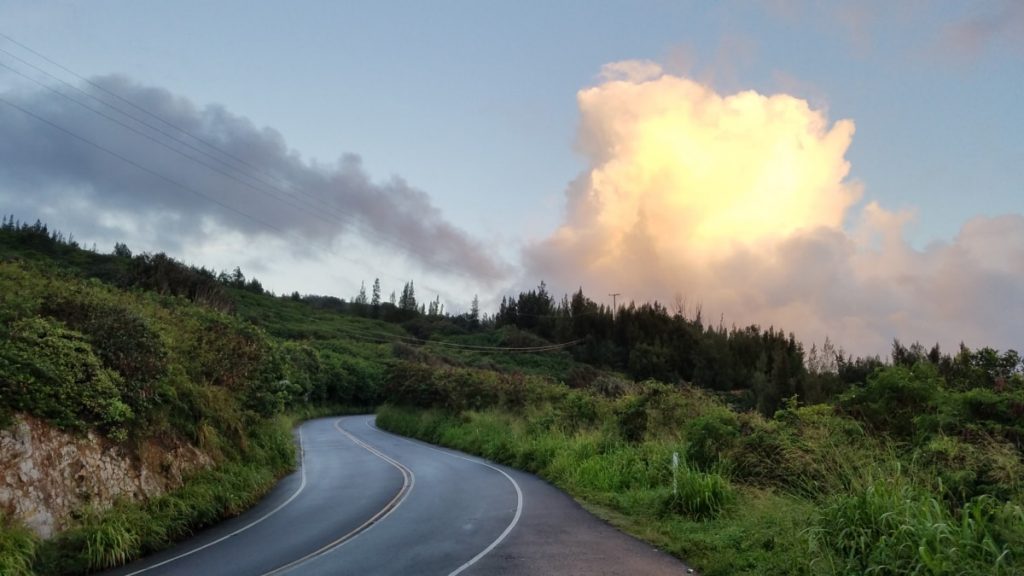
Key to preparing food which can last for long hours in car / train / plane journey is to remove the moisture / water content from the vegetables or ingredients. It is important all the ingredients are deep fried and crispy.
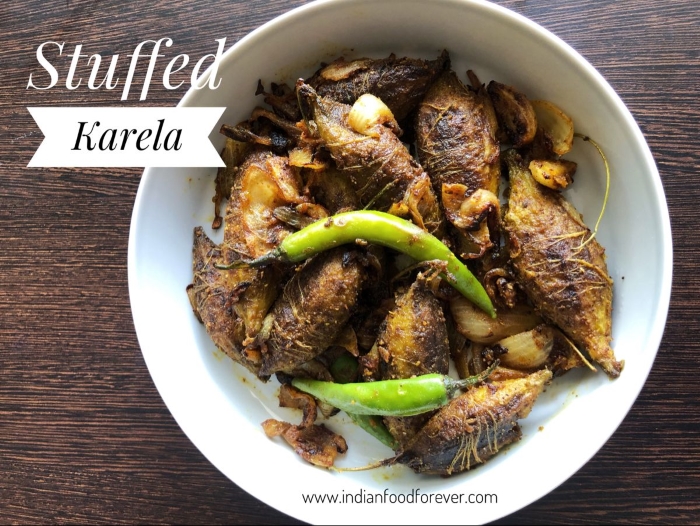
Indian Food for Car Travel Time of 6-8 Hours:
If the temperature outside is below 35 degrees or less, then you can choose any of the below to taken along with you on the journey:
- Masala Aloo Sandwich
- Grilled Paneer Sandwich
- Bread Rolls
- Garlic Bread
- Aloo Palak Pakora
- Bread Pakora
- Vegetable Pulao with pickle
- Sweet Corn Pulao
- Puri – Aloo : This is one of the best liked and relished travel food of all time. You can pack some mango pickle or tomato thokku along.
- Curd Rice with tomato thokku.
- Tamarind Rice
- Lemon Rice with peanut chutney
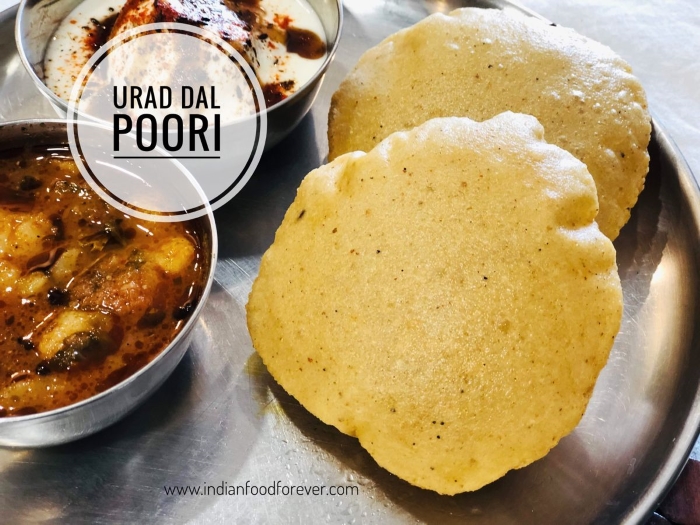
Sukhe Kale Chane
Indian food for bus or train travel time of 12-18 hours:.
- Stuffed Bhindi with Besan – Paratha / Roti / Poori : The stuffed bhindi can be rolled inside the roti. Just perfect when your are driving in the car .
- Methi Paratha with 10 Minute Sukhe Chole . You can also pack Jeera Aloo with the methi paratha.
- Urad Dal Ki Hing Puri with Sukha Aloo along with some pickle
- Stuffed Karela with paratha / roti.
- Bhindi Fry Without Onion with roti / poori.
- Masala Puri with tariyal aloo . These aloo are fried. Fried aloo stays well for over a day. You can pack along some pickle too.
- Methi Thepla with Pickle
- Puri with Crispy Karela Fry
- Sukhe Kale Chane with Plain Paratha
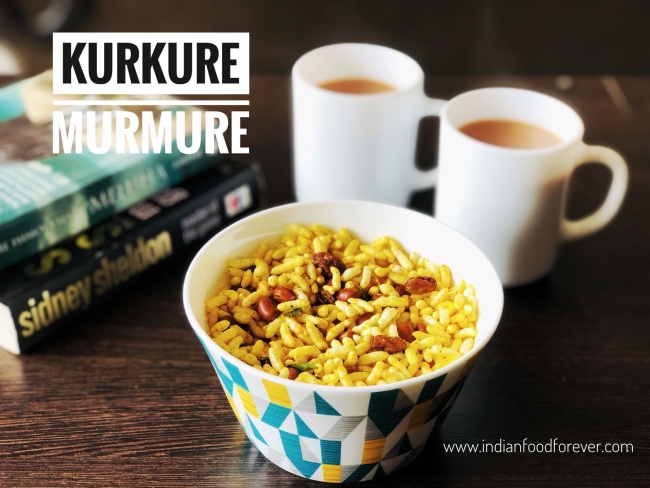
Indian Dry Snacks for Bus/ Car/ Train Travel
- Kurkure Murmure
- Chakli
- Dry Kachoris
- Banana Chips
- Punjabi Mathri
You can also pack some ready made bhujia, aloo wafers, biscuits, cookies and tea cakes.
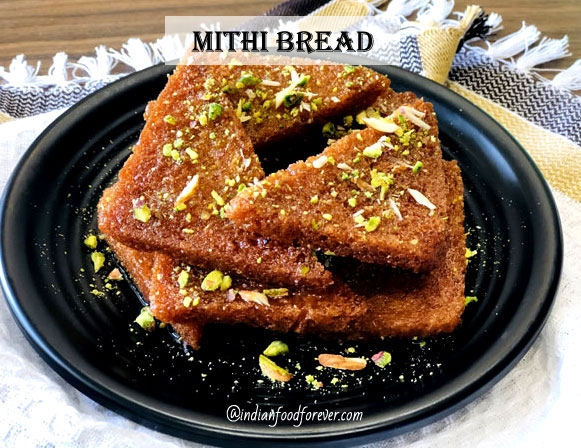
Easy Indian Sweets which can be carried in Bus/ Car/ Train Travel :
- Churma Laddoo
- Mithi Bread
- Besan Ladoo

- Food & Drinks
12 Yummy Yet Healthy Indian Snacks To Pack For Your Trip
Packing snacks for a trip is a ritual followed by most travellers. Here are some healthy Indian snacks that can serve as a source of energy and nutrition.

Some travellers carry food for their trip or journey—either as a wholesome meal or snacks to munch on at intervals. While it isn’t advisable to carry multiple boxes of food for your journey, you can always carry snacks that are light on the luggage as well as your waistline. There is a large variety of snacks that you can carry—from chips and biscuits to homemade brownies or health bars. It’s usually always a better idea to go for the healthier option by making healthy snacks for kids and yourself. India is a diverse country when it comes to culture, traditions, and cuisine and there are a lot of healthy Indian snacks to choose from for your travels.
2 ‘Bimaro Wala Khana’, Khichdi

This is simply a one-pot rice and lentil dish and is made in a wide variety of ways in different parts of the country. An iconic Indian dish, it is known as huggi in Karnataka, Pongal in Tamil Nadu, and khichdi in many parts of north India. Khichdi is one of the most ancient foods in India and once cooked, can be paired with anything from yogurt to spicy pickles. Khichdi is known as ‘ Bimaro Wala Khana ’ (food for the sick in Hindi) as it is easily digestible and nutrition-rich, making it one of the many healthy Indian snacks. It is the perfect balance of carbohydrates and protein. According to Ayurveda, Khichdi is used for detoxifying and cleansing the body. It is the perfect snack as it is easy to make, healthy, filling, easy to pack, and tasty either hot or cold. However, it is best consumed within at least 12 hours of preparation. Fun fact :
Khichdi is one of the first solid foods that is fed to babies in many parts of India as it features in the list of healthy snacks for kids.
Mughal emperor Jehangir favoured lazizan , a very rich Gujarati khichdi in his days of abstinence, according to ‘A Historical Dictionary of Indian Foods’ written by historian KT Achaya.
3 Cholesterol-Buster, Thepla

This is a Gujarati breakfast flatbread ( roti ) made primarily of methi (fenugreek), wheat flour, yoghurt, gram flour, ghee, and water. Theplas are made in a similar way chapatis are made, where the dough is rolled into a ball and then flattened into a circular shape and fried. Theplas are packed with essential vitamins, minerals, and iron and are known for lowering cholesterol. According to NDTV Food, one of the University of Michigan Health System’s studies states that the steroidal saponins found in fenugreek seeds seem to slow the absorption of cholesterol in the intestines. Theplas are also said to be able to control diabetes, lower blood sugar levels, and aid digestion. One of the many healthy Indian snacks around, theplas are travel-friendly as they are easy to carry and eat. They are also easy to make as all the ingredients are found in almost all households, but you will need to give yoghurt a miss if you’re making theplas for travel, as it reduces its ‘shelf-life’.
- The more oil you use while cooking the thepla , the longer its shelf life.
5 The Most Versatile Indian Snack, Khakhra

The khakhra is a circular crisp roti -like food item from Gujarat that is commonly eaten as a snack. The primary ingredient in these healthy Indian snacks is wheat flour. Others are gram flour, milk, and oil, but you can add various spices to customise it. Much like rotis , khakhras are roasted in a heated pan, although here, pressure is applied till they become crisp. Khakhras are considered to be healthy snacks in India as they are made of whole wheat. They are rich in carbohydrates and proteins and also contain dietary fibres which help with weight reduction, digestion, and maintaining blood sugar levels. Khakhras are not only easy to pack, but can also be eaten with anything from tea to jam, sabzi (cooked vegetable dish) or plain.
- Khakhras are said to have been invented by Jains many years ago. As they are not allowed to eat stale food, they started dry roasting leftover rotis to take out the remaining moisture so they don’t spoil and food is not wasted.
6 The Snack That Made Chitale Bandhu Famous, Bhakarwadi

A disk of dough stuffed with dried coconut, poppy, cumin, sesame seeds, dried mango, and chilli, bhakarwadis are a popular Indian snack that originated from Gujarat, although it is quite popular in Maharashtra too. These bite-sized mini rolls are a perfect mix of crunchy, sweet, and spicy, and are best enjoyed with a cup of tea.
The original version of bhakarwadis does not make it into the list of healthy Indian snacks, but there are variations that are low-fat and fibre-rich. Baked versions of these are stuffed with flax seeds, grains, pulses, soybeans, methi, or dry fruits. They are dry and therefore easy to pack and carry and are available at all farsan (a collective name for multiple varieties of Gujarati and Maharashtrian snacks) shops.
Fun facts :
- It is believed that the grandfather of the current owner of Jagdish Farsan, a famous farsan store in Vadodara, invented the snack.
- It was introduced in Maharashtra in the 1970s.
- It made Chitale Bandhu, a shop in Pune, very famous for its wares.
7 South India’s Go-To Snack, Lemon Rice

A tangy yellow dish made from basmati rice mixed with other ingredients like peanuts, mustard seeds, curry leaves, and lemon juice— these are the ingredients in the healthy snacks recipe for lemon rice. It originated in south India, and can also be made with leftover rice, making it an easy and convenient breakfast or snack dish. It can take anywhere from 15 to 30 minutes to prepare, depending on whether you are using pre-cooked rice. The dish can also be made gluten-free by skipping the hing (asafoetida). Lemon rice is very nutritious as it contains carbohydrates, proteins, fats, potassium, fibre, vitamins A, C, and E, calcium, iron, thiamin, niacin, phosphorus, and more. Lemon rice, also known as Chitranna in Kannada, can be eaten with yoghurt or spicy pickle, or plain. It also counts as a healthy snack for kids as it can be packed in a tiffin box easily. However, it needs to be consumed within a day of it being made.
- Its distinctive yellow colour comes from turmeric, also a strong anti-inflammatory.
8 A Health-Buff’s Best Friend, Dalia
Dalia is made of broken wheat, cooked in different ways, according to personal preferences. It is consumed mainly in the Indian sub-continent and features high as a favourite on the list of healthy Indian snacks. You can cook it with spices to make it savoury or sweet by adding coconut and jaggery. This dish is a super-food and a great source of protein, making it a big hit among fitness buffs. Dalia is rich in fibre, helpful for weight loss, a good source of minerals, helpful in suppressing hunger pangs, low in fat, and great for diabetics and children. While it makes for great healthy snacks for the evening or even for breakfast and dinner, dalia needs to be consumed within a day of it being made.
- It is healthier than wheat flour as it contains wheat husk too, which is rich in fibre.
10 The Indian Version Of Nougat, Chikki

Chikkis is a crunchy and sweet snack made of jaggery and a variety of different nuts and seeds, primarily roasted peanuts. These sweet treats are generally flat and readily available in most stores across India. It is said that chikkis were invented by a man named Maganlal, the country’s largest and oldest chikki maker. Chikkis are considered healthy Indian snacks as the main ingredient is jaggery, a solid or semi-solid natural sweetener, usually a concentrate of sugarcane juice. Jaggery contains protein, minerals, and vitamins and is also a great source of iron and copper. Chikkis makes for a great travel snack as they last long (days and even weeks) and are easy to pack and carry.
- Chikkis is considered the Indian (and vegan) version of nougat, a confection made of whipped egg whites, sugar, or honey with nuts and/or fruits.
11 The Best Snack For Your Gut, Poha

Like most Indian foods, poha has many variants in different parts of the country and is a preferred breakfast item in many households. The dish has its origins in the Maharashtra-Gujarat-Madhya Pradesh region. Poha is made with cooked rice that is flattened and dried resembling flakes of varying thickness. You can make poha sweet or spicy (with peanuts, curry leaves, and onions), depending on your taste. As poha can be cooked with a variety of vegetables, it is considered healthy, nutritious, and filling. It is a great source of carbohydrates and iron, low in calories, and easily digestible. Poha , also known as beaten rice, is easy and quick to make and serves as a delicious healthy snack while travelling.
- Poha is a good probiotic as it undergoes fermentation during its preparation, retaining its microbial flora—great for gut health.
12 The Snack That Comes In Its Own Biodegradable Wrapper, Patholi
This is a snack made with a little extra effort. Patholi (which means steamed dumpling or pudding in Konkani), originates from the Konkan belt (parts of Maharashtra, Goa, and Karnataka), and is made primarily of grated coconut and jaggery stuffed into rice dough and turmeric leaves. The ingredients are mixed and lightly fried till they turn golden brown. While this dish is primarily prepared during the Nagarapanchami/Nag Panchami festival and the monsoons, it is also prepared as a tasty snack for family gatherings and other special occasions.
Patholis are considered healthy Indian snacks because they are cooked in turmeric leaves which have a host of health benefits. Turmeric leaves are said to boost digestion and reduce gas and bloating. These also make for great travel snacks as they come in their own packaging (the turmeric leaves), are easy to pack, and can be eaten hot or cold. They can also be stored for a maximum of two to three days (preferably consumed within two days) in a cool environment.
- Patholi is made primarily during the rainy season because it’s when turmeric leaves are abundantly available.
13 The Ancient Medicinal Snack, Til Ke Laddus
Til (sesame) laddus are one of the simplest healthy Indian snacks and brimming with health benefits. Commonly known as Maharashtrian til che laddus (as they are originally traditional sweet from Maharashtra), they are round, sweet, bite-sized snacks made with sesame seeds ( til ), peanuts, ghee, cardamom ( elaichi ), and jaggery. It is believed that til ke laddus were used in the 4th century BCE by Susruta, the father of Indian surgery and medicine as an antiseptic for his patients. While these can be eaten at any time during the year, they are primarily consumed in winter to generate heat and energy in the body. Til ke laddus are also known for increasing hair growth, having anti-ageing properties, boosting the health of your skin and teeth, and aiding digestion. They are a great source of energy. Til ke laddus also serve as great travel snacks as they are easy to pack, readily available at most general stores, and can be stored for days.
Fun facts :
- You don’t need a lot of ghee to prepare these snacks as the crushed peanuts and jaggery provide enough stickiness.
14 South Kanara’s Low-Calorie Snack, Mutlim/Mutlin
This is another of the many healthy Indian snacks originating from the South Kanara (Dakshina Kannada) district of Karnataka. It’s a dimpled, circular, steamed snack made of a mixture of rice and grated coconut. Mutlims , also known as pundis , can also be made with rava or semolina. These are great breakfast dishes, as well as filling and healthy snacks in the evening. Mutlims can be accompanied by a spicy gravy, chutney, or just eaten on their own.
These also serve as healthy snacks for kids, and older generations, as they are easily digested and contain carbohydrates. They are also useful for those looking to maintain their weight, as it is pretty low on calories. Mutlims are also suitable as a travel snack as they can be eaten either hot or cold and can be easily packed. They can last for about a day or two when stored in airtight containers.
- You can stuff mutlims with a mixture of coconut and jaggery (a south Kanara variation) to make a sweeter variant of this snack known as god (sweet) mutlim .
15 The Savoury Cake, Dhokla

Originally from Gujarat, dhoklas are healthy Indian snacks that are most often consumed in the evening. These light and fluffy cube-shaped snacks are made from a fermented batter of gram flour ( besan ) and mild spices and can be had at any time during the day. Since dhoklas are steamed, it is preferred by those counting calories, and as it is fermented, it is easier to digest and improves gut health. This fluffy savoury cake is also packed with proteins. It has a low glycemic index which makes it good for diabetics. They are easy to pack and carry for travel.
- The snack is versatile, so instead of gram flour, you can also use rice flour, chana dal or semolina. The dhokla that is made with gram flour is known as khaman dhokla and the one made with rice flour is known as rice dhokla .
Snack Often But Not Too Often To Stay Healthy
Snacking is an important aspect of a daily diet, as it can boost your energy in the middle of the day or when you exercise. Healthy snacks between meals can help decrease hunger and prevent overeating during regular meals. Snacking is especially important during travel, as it will help you stay alert and energised. Going for something healthy that won’t spoil fast is a bonus as you do not want to risk your health mid-travel. And although snacking is inevitable, you must remember to keep the snacks healthy in order to stay fit.
LEAVE A REPLY Cancel reply
Save my name, email, and website in this browser for the next time I comment.
Lip-smacking Recipes

The days of being confused about what to cook every single day are gone! These easy recipes will have you cooking mouth-watering, lip-smacking food that you and your loved ones will not only enjoy and savor but will definitely want more of!
Your Ultimate Trip to India: The Complete Guide
How to Get an Indian Visa
India's Visa Types, Explained
Applying for an E-Visa
India's Climate & Seasons
Monsoon in India
Your Essential Packing List
Things to Buy Before You Go
What to Pack for Monsoon
The Best India Guidebooks
How to Save on Your India Trip
The Top Destinations in India
The Most Iconic Sights in India
Which Region Is Right for You?
India's Top Historical Destinations
Romantic Indian Destinations
India's Top Hill Stations
India's Top National Parks
The Best Beaches in India
India's Best Backpacker Spots
India's Most Spiritual Destinations
The Best Luxury Spas in India
India Off the Beaten Path
India for Adventure Travelers
Where to Experience Rural India
The Top Things to Do in India
Palaces & Forts in India
India's Best Surfing Beaches
Volunteer on a Budget in India
7 Cool Sound & Light Shows
India's Most Popular Festivals
India's Best Bike Tours
See India by Motorcycle
India's Top Tribal Tours
Offbeat Tours to Take in India
India's Best Homestays
Palace Hotels in India
India's Coolest Treehouse Hotels
Top Wildlife & Jungle Lodges
The Best Hostels in India
Best Budget Hotels in India
Transport in India: An Overview
India's Major Airports
India's Best Airlines
Domestic Airlines in India
Hiring a Car & Driver in India
Your Intro to Indian Railways
Travel Classes on Indian Trains
How to Reserve a Train Ticket
How to Find & Board Your Train
Tips for Train Travel in India
India's Scenic Toy Trains
12 Indian Etiquette Don'ts
The Top 10 Indian Stereotypes
Tipping in India
What Does the Head Shake Mean?
9 Challenges You'll Face in India
How to Avoid Culture Shock
Top 5 Monsoon Health Concerns
Voltage Information for India
How to Use Your Cell Phone
How to Say Hello in Hindi
Often Misunderstood Hindi Terms
Hindi Language Books
Most Common Indian Scams
How to Handle Begging in India
How to Spot Fake Indian Currency
What to Buy in India
How to Buy a Sari in India
How to Bargain at Indian Markets
Traveler's Guide to Popular Indian Food by Region
:max_bytes(150000):strip_icc():format(webp)/10947453_10153084623948270_8191342691038933499_o-591d1e8d3df78cf5fa731909.jpg)
Traveling around India is the only way to gain an appreciation of the true variety of Indian food that actually exists. It's so much more vast than the staple Punjabi dishes that are served up at most Indian restaurants across the world. Each region has its own specialty, and there's no better way to sample Indian cuisine than at a homestay in India . You'll get fresh ghar ka khana (home cooked Indian food) and you can even learn how it's made. Discover what kind of food to expect from the most popular regions of India in this Indian food guide. Also check out these delicious curries to try in India.
Want to learn how to make Indian food? Here are 12 places to take cooking classes in India. If you're serious about cooking, some of them offer extended programs up to a week long.
Punjab and North India
Meat and Indian bread are the main features of north Indian food. It's hearty and commonly cooked in a tandoor (clay oven fired by charcoal). North Indian curries usually have thick, moderately spicy and creamy gravies.
Popular dishes: Roti, naan, seekh kebab (minced meat on iron skewers), chicken tikka (small chunks of marinated and grilled chicken), butter chicken, tandoori chicken, aloo muttar (curry made with potatoes and peas), rajma (curry made with red kidney beans), chana masala (curry made with chickpeas), samosa, daal makhani (daal made with butter).
Many migrants from Kashmir have moved to Delhi and other north Indian cities. There you can sample their cuisine, usually consisting of hearty meat cooked in curd or milk.
- 8 Best North Indian Cuisine Restaurants in Delhi for All Budgets
- 7 Top Indian Fine Dining Restaurants in Delhi
South India
South Indians can't do without rice. It's the staple in their diet. In Kerala, most dishes are coconut-based and seafood is a specialty. In Tamil Nadu , watch out for Chettinad cuisine, perhaps the most fiery of all Indian food. Cuisine from Andhra Pradesh is also hot and spicy. Hyderabad is famous for its biryani. And, the Udupi region of Karnataka is renowned for its simple but vast vegetarian fare.
Popular dishes: No South Indian meal is complete without rice in some form or other -- either boiled rice or idlis (steamed cakes made from rice batter), or dosas or uttapams (pancakes made from a batter of rice and lentil flour). Perhaps the south Indian food that's most enjoyed by travelers is the masala dosa . It's a thin crispy pancake filled with spicy potato and onion. Cheap and tasty!
- Ultimate Guide to South Indian Breads
- 10 Classic Indian Cuisine Restaurants in Bangalore
14 Dishes You Need to Try in Kerala
NarenderSanwariya/Getty Images
Rajasthan's cuisine has evolved to suit the state's harsh dry climate. Dishes are often made to be stored for several days and served without heating. Dairy products are used extensively due to scarcity of water, and liberal dousing of food with ghee (clarified butter) is regarded as a sign of prosperity. Unrefined regional grains such as millet and jowar (sorghum) are common as well.
Popular dishes: You can't visit Rajasthan and not sample d aal-baati-churma . This hearty and iconic dish consists of daal (lentil preparation), baked round baati (bread), and baati crushed and fried in ghee and jaggery. It's also widely consumed in Madhya Pradesh and Uttar Pradesh.
The food in Goa is dominated by seafood (of course, being a coastal state) and pork. The Portuguese influence shows up more obviously at dinner in the evenings, when roast beef may even be served (most Goans are Catholic, and as a result eat beef). Goan food also features elaborate puddings and cakes. Xacutti (coconut-based curry), cafreal (marinated and fried/grilled), sorpotel (stew), recheado (stuffed), ambot tik (sour and spicy), and vindaloo (fiery curry marinated with garlic and vinegar or wine) are common types of dishes. And of course, Goan chourico (sausages) and Goan pao (bread).
Popular dishes: Goan fish curry, pork vindaloo , pork sausages. All washed down with a chilled King's Beer. (Goans also love a drink!).
- Best Goan Cuisine Restaurants in Goa for All Budgets
Gujarat and West India
Gujarat's cuisine is known for its slight sweet touch (at least a pinch of sugar is added to most dishes!) and is traditionally entirely vegetarian. This makes it a delight for those who don't like to eat meat. Rest assured you don't have to go to Gujarat to get lip-smacking Gujarati food. It's widely available in Mumbai .
Popular dishes: Don't miss feasting on a Gujarati thali (platter with a wide range of different food items).
Bengal and Odisha
Bengalis and Odias LOVE fish! It's fried, stewed lightly with vegetables, or made into jhol (curry with thin consistency). Hilsa (ilish) is the most savored variety of fish in Bengal. Equally adored when it comes to food are sweets, usually milk-based. The most renowned item in Odia cuisine is perhaps dalma -- a hearty stew made out of lentils and vegetables.
Popular dishes: Maacher jhol (fish curry), sorshe maacher jhol (curry with mustard paste), daab chingri (coconut prawn curry), sandesh (sweet made with condensed milk and sugar) rasgulla , (sweet made from balls of Indian cottage cheese cooked in light sugar syrup), mishti doi (sweet made from curd and jaggery and served in an earthen pot).
- 10 Authentic Bengali Restaurants to Try in Kolkata
Ladakh, Sikkim, Himachal Pradesh
You'll find a significant Tibetan and Nepali influence in the cuisine of the mountainous areas of northern India, due to migration and proximity to the borders of these countries.
Popular dishes: Thukpa (hearty noodle soup), momos (steamed or fried stuffed dumplings), gyakho (stew). In Sikkim, try tongba (famous Himalayan millet beer).
- The Best Momos in India and Where to Get Them
- 11 Top Attractions and Places to Visit in Sikkim
North East India
Also very different to typical Indian cuisine, food in North East India is largely devoid of oil and masalas . However, it is hot and spicy! Rice, vegetables and meat stew make up most meals. Pork is very popular and beef is not forbidden. You'll also come across some rather usual ingredients, such as ant eggs, dog meat and hornet larvae.
Popular dishes: Pork stew with bamboo shoots in Nagaland. Masor tenga (sour fish curry from Assam), dawlrep bai (spicy beef or pork curry from Mizoram), chamthong (vegetable stew from Manipur), pasa (spicy soup with raw fish from Arunachal Pradesh)
- Guide to North East India States and Places to Visit
- Exploring Nagaland: Villages, Homestays and Men in the Kitchen
23 Popular Indian Curries to Try From Across the Country
The Ultimate Guide to Breads in South India
Your Trip to Goa: The Complete Guide
The 16 Best Foods to Try in Gujarat
The Best Foods to Try in Southern India
What to Eat in Delhi's Connaught Place Neighborhood
The 20 Best Restaurants in New York City
15 Foods to Eat in Delhi
15 Best Restaurants in Mumbai
One Week in Delhi: The Perfect Itinerary
12 Dishes You Need to Try in Sri Lanka
Malaysian Indian Food Guide
Top 15 Restaurants in Delhi
The 13 Best Restaurants in Udaipur
9 Things to Eat in the Hauz Khas Neighborhood, New Delhi

Air India’s Inflight Dining Experience: A Guide to the Cuisine Across Cabins
When you fly with Air India, the dining experience aims to showcase the diverse flavors of Indian cuisine. Across all cabins, Air India focuses on providing quality inflight meals that are fresh, regional, and full of flavor.
In this extensive post, we’ll explore the food and drink menus across Air India’s cabin classes. Read on for a taste of the culinary offerings, premium wines, and service that make Air India stand out.
Overview of Air India’s Dining by Cabin:
- In Economy, complimentary Indian-inspired meals, snacks and beverages
- Upgraded dining in Premium Economy with welcome drinks and multi-course meals
- Business Class features regionally inspired multi-cuisine meals and premium wines
- First Class offers the finest dining experience with champagne and 5-star cuisine
- Across cabins, menus reflect India’s diverse culinary traditions
- From vegetarian dishes to fine-dining, Air India caters to all appetites
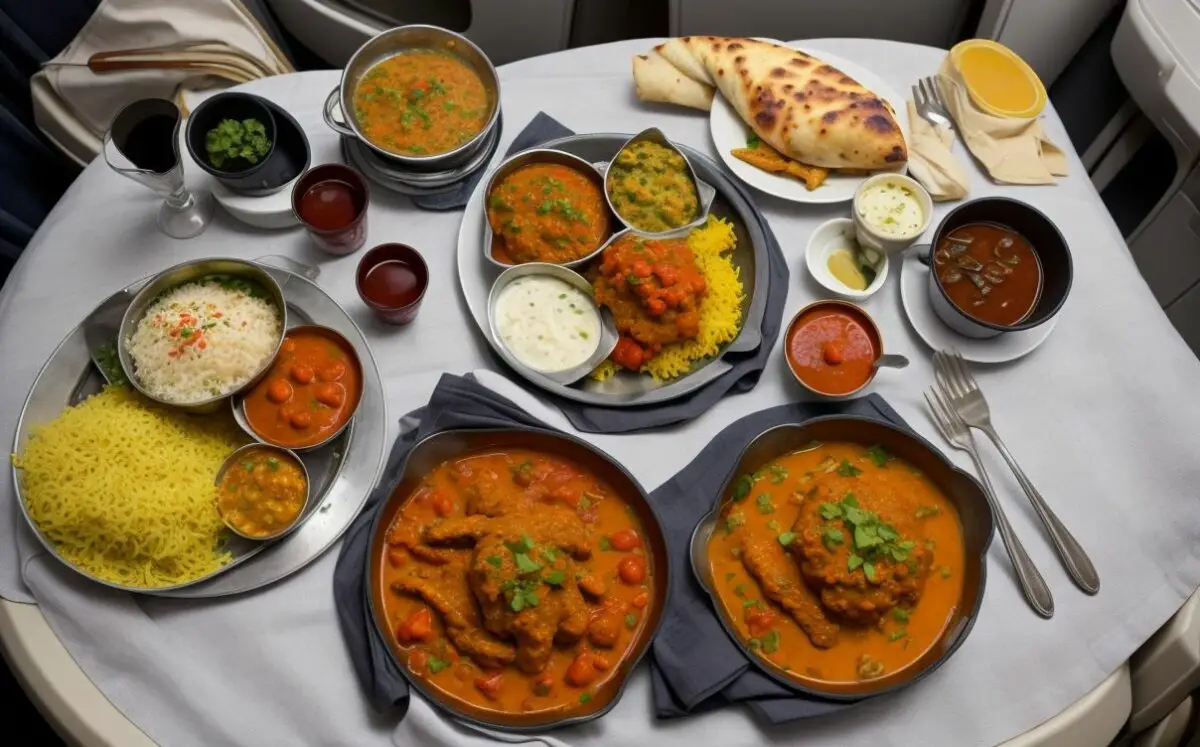
An Introduction to Air India’s Inflight Dining
Let’s start with some background on Air India’s approach to onboard meals and refreshments.
Complimentary dining is provided on international and domestic Air India flights over 90 minutes. The inclusive menus feature dishes from India’s different regional cuisines. Crafted by top chefs, the meals celebrate the diversity of Indian food.
In upper classes, menus also incorporate global influences with continental, European and Asian dishes. No matter your palette or dietary needs, Air India aims to satisfy.
Now let’s explore those cabin-specific food and drink offerings in more detail. Bon appétit!
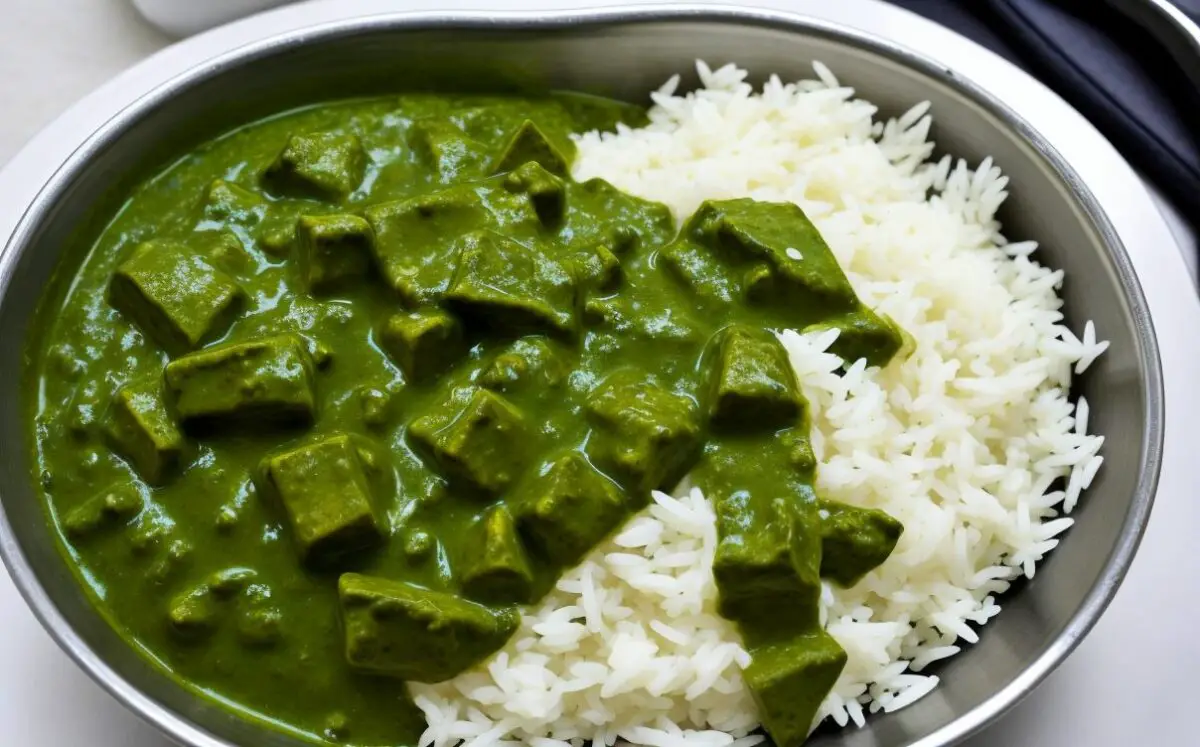
Economy Class Dining
Even in economy, Air India serves up complimentary Indian-inspired meals and beverages. Here’s what to expect:
On long flights spanning mealtimes, hot breakfast/dinners include:
- Breakfast – Vegetable uttapam or upma; stuffed paratha; fruits and yogurt.
- Lunch/Dinner – Palak paneer with rice; chana masala with chapati; chicken curry with naan.
- Dessert – Gulab jamun; rasmalai; fruit salad.
- Beverages – Chai tea, coffee, juices, beer, wine, spirits.
With Air India’s extensive meal service, economy flyers can enjoy Indian comfort food at 35,000 feet.
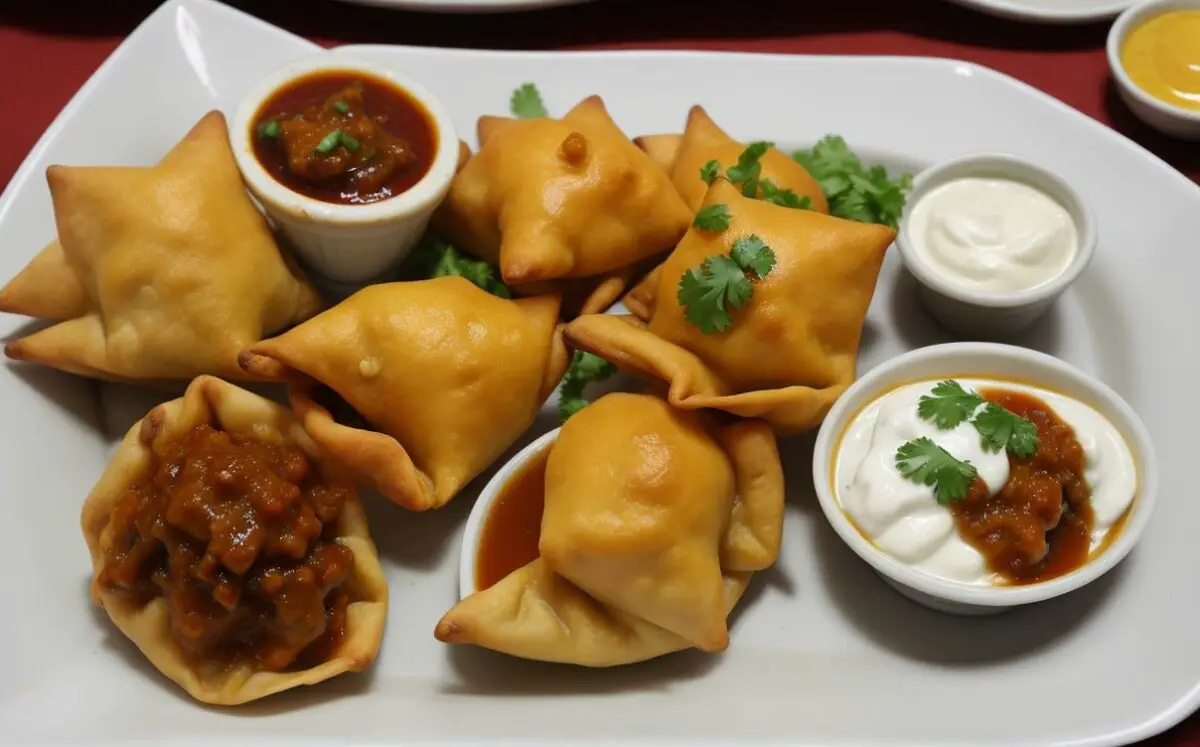
Light Meals
On shorter daytime flights, refreshing light bites are served:
- Samosa with tamarind chutney
- Masala snack box with vada pav, chili paneer, dessert
- Vegetable sandwich on toasted bread
- Snacks like chips, chocolate, cookies
Special Meals
Those with dietary restrictions can request special meals ahead of time:
- Vegetarian/vegan/non-vegetarian
- Infant/child meals
- Religious (Hindu, kosher etc.)
- Medical (diabetic, gluten-free etc.)
So dietary needs are accommodated in economy class.
Premium Economy Dining
In Premium Economy, Air India enhances the dining experience:
- Welcome Drink – Orange juice, wine, beer or non-alcoholic sparkling wine
- Table Setting – Linen napkins, upgraded dishware
- Multi-Course Meals – Appetizers, soup, salad, main course, dessert
- Premium Beverages – Wine, beer, spirits, cocktails, soft drinks
With welcome drinks, table settings and multi-cuisine menus, Air India satisfies in Premium Economy.
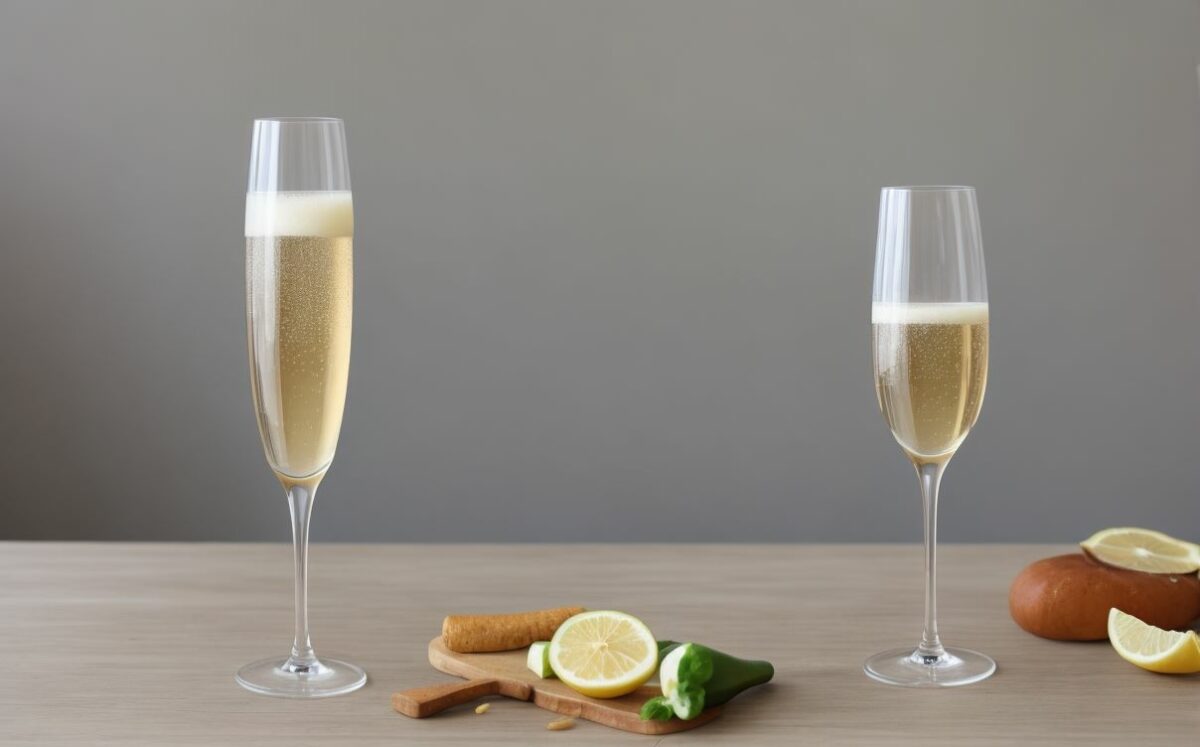
Business Class Dining
Business class steps up the culinary indulgence with:
- Welcome Drink & Warm Towel – Champagne, juice or signature cocktail
- Table Setting – Fine china, crystal glassware, bud vases
- Multi-Cuisine Menu – Indian, European, Asian dishes
- Premium Beverages – Champagne, wine, cocktails, spirits
- Anytime Dining – Order dishes anytime during flight
With flexible dining times, gourmet global cuisine, champagne and impeccable service, Air India excels in business class.
First Class Dining
Air India’s ultra-luxurious First Class offers an unmatched culinary experience:
- Personal Chefs – Meals made to order by onboard chefs
- Premium Caviar & Champagne – Upon boarding & anytime after
- Sommelier Selected Wines – Expertly paired with each course
- 5-Star Global Cuisine – Lobster, foie gras, fine-dining preparations
- Tableside Service – Elegant dishware, candlelight, flowers
- On-Demand Dining – Order any meal anytime
With caviar, champagne, personalized a la carte dining and impeccable service, Air India’s First Class dining is world-class.
Why Fly Air India for the Cuisine?
When it comes to inflight dining, Air India offers:
- Authentic Indian meals reflecting diverse regional cuisines
- Veg/non-veg, religious, and dietary requirement options
- Multi-cuisine menus inspired by global flavors
- Complimentary dining inclusive across all cabins
- Premium wines, champagne and tableside service in upper classes
- On-demand dining with skilled chefs in First Class
Air India excels at providing an indulgent culinary journey that celebrates the breadth of Indian food.
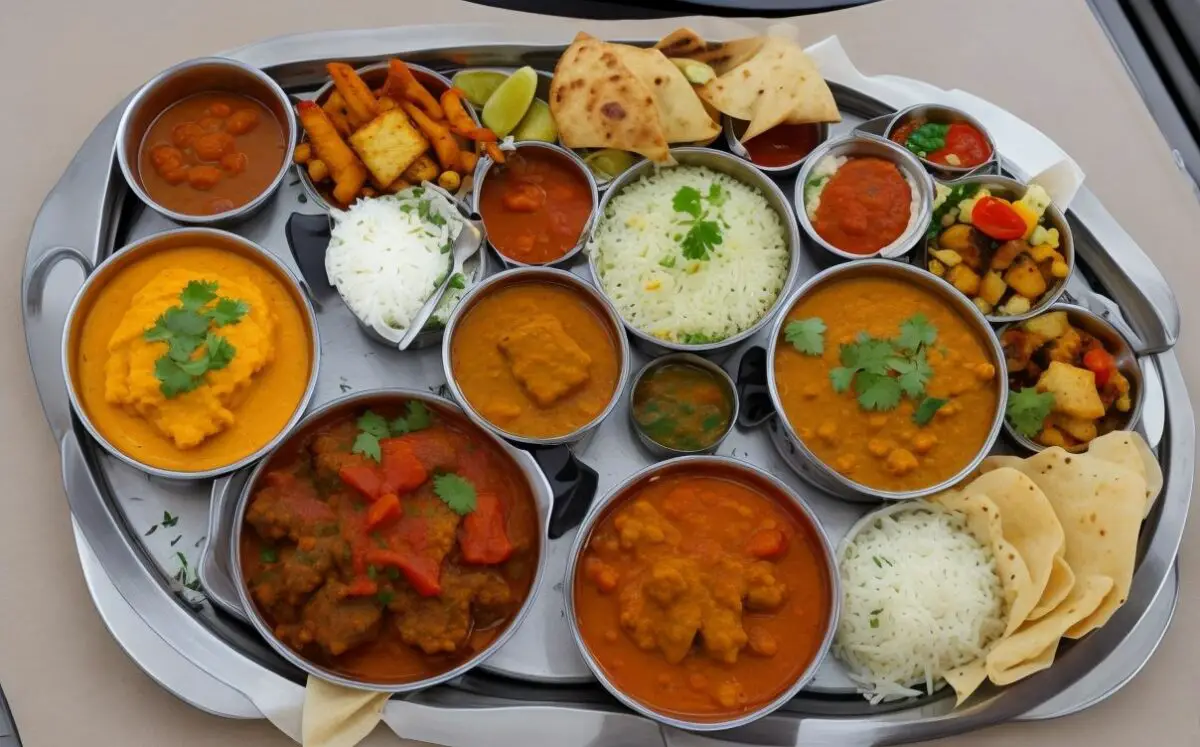
The Magic of Air India’s Dining in the Skies
From refreshing snacks in economy to caviar and champagne up front, Air India makes mealtime special across all classes of service. With authentic touches like chai tea, regional Indian dishes are enjoyed alongside global flavors and fine wines.
So in your next long-haul Air India flight, delight your tastebuds with their diverse onboard cuisine as you jet towards an Indian adventure. From vegetarian thali in coach to lobster tail in First, it’s a genuinely first-class culinary journey.
Namaste, bon appétit and bon voyage!
Similar Posts
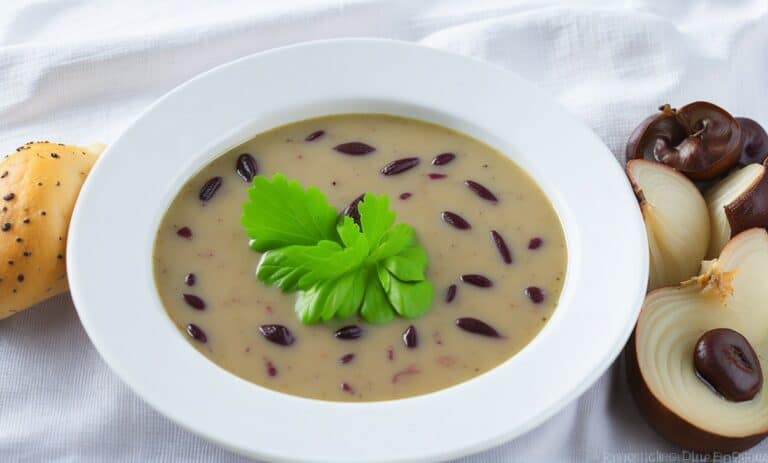
An In-Depth Guide to Dining in KLM Business Class
When you fly in KLM Business Class, the dining experience aims to be just as first class as the amenities. Across all cabins, KLM Royal Dutch Airlines focuses on providing quality inflight cuisine

British Airways World Traveller Plus Menu: Quality Global Flavors in Premium
On World Traveller, British Airways focuses on providing quality inflight cuisine that incorporates global flavors.
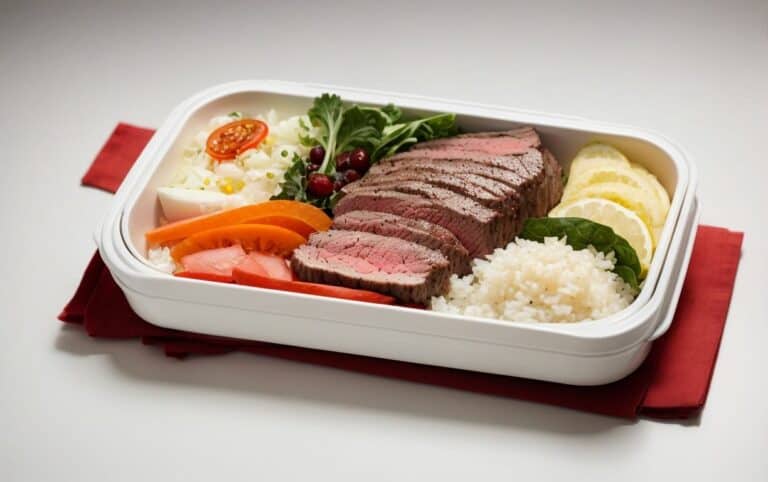
A Guide to JAL Flights Dining Experiences: Omotenashi in the Skies
When flying with Japan Airlines (JAL), enjoying exquisite culinary offerings is an integral part of inflight hospitality. Their menus artfully combine refined Japanese cuisine with Western influences
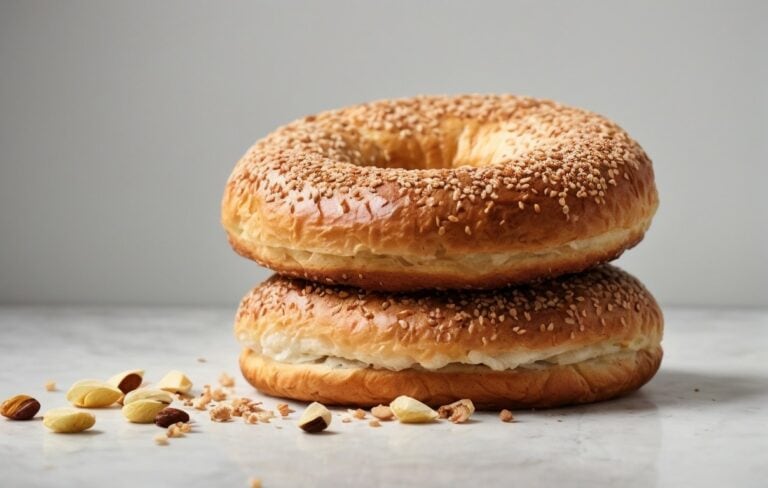
SunExpress Menu: A Guide to Dining Onboard Turkey’s Premier Low-Cost Carrier
As Turkey’s leading low-cost airline, SunExpress focuses on providing efficient, affordable flights within Turkey and to popular European and Mediterranean destinations.
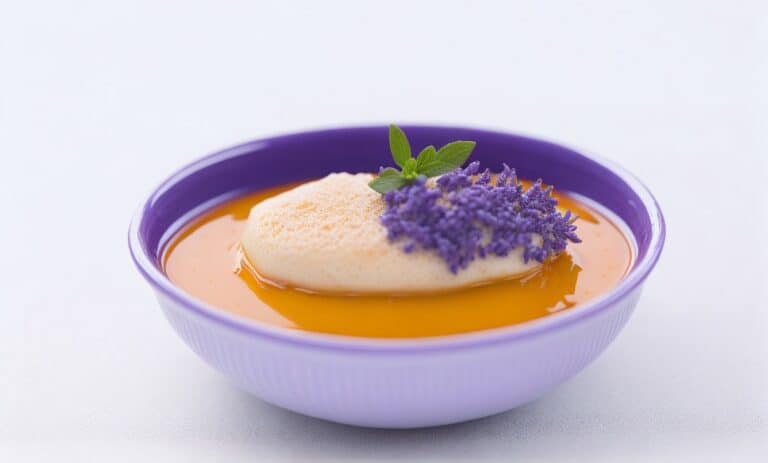
Air France Business Class: An In-Depth Guide
When you fly in Air France’s Business Class cabins, the dining experience celebrates the rich culinary traditions of France. Across all cabins, Air France focuses on providing quality French cuisine inflight
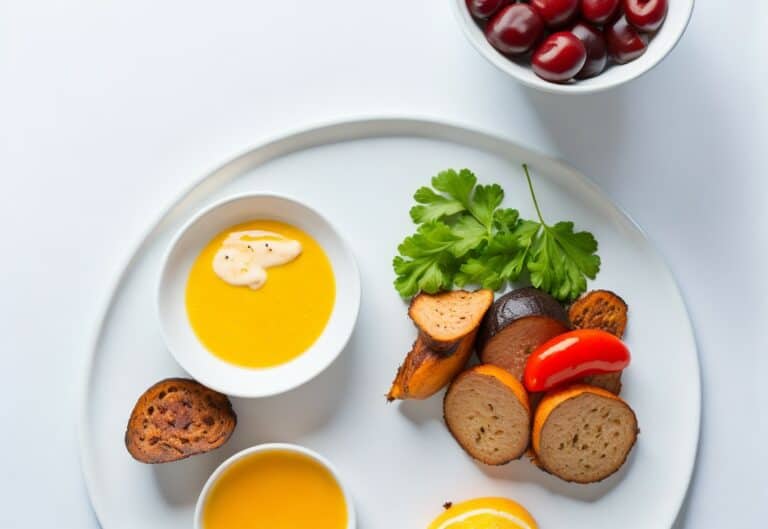
Aer Lingus Menu: A Guide to the Dining and Drink Selections
When flying internationally with Aer Lingus, the inflight dining service emphasizes quality Irish flavors and hospitality. With locally-sourced menus, signature cocktails featuring Irish whiskey


Air India Food Review
[lasso type=”table” id=”3″ link_id=”1170″]
One Wednesday morning in May, I received an urgent phone call around 11am, informing me of a family emergency in Australia. Within a few hours, I found myself on a flight from Paris Charles de Gaulle to Melbourne.

Most of the journey is now a blur, but one thing I vividly remember is the lack of inflight entertainment throughout the entire trip to Melbourne, which made the journey quite boring.

I’m torn when it comes to Air India. On one hand, they have excellent cabin crew and the food is decent. However, the transit experience in Delhi, their lounge, and the absence of inflight entertainment are disappointing in this day and age. While I understand their aspirations to become a world-class airline, it seems like it will take them years to achieve that.
INFLIGHT ENTERTAINMENT
The issue of non-functional inflight entertainment seems to be a common problem on Air India flights, as both passengers and crew have complained about it. Nevertheless, I was fortunate to have an exit row seat on both sectors.

During the Delhi to Melbourne leg, I struck up a conversation with one of the crew members about the inoperative inflight entertainment system. Perhaps feeling sorry for me, she returned from business class a few minutes later with some snacks as a quasi-apology. It was a lovely gesture.

PARIS TO NEW DELHI
I was pleasantly surprised by the warm welcome I received from the crew as I stepped onboard. They greeted me with a friendly “Namaskar!” The crew remained fantastic throughout the flight, always pleasant and attentive. Additionally, having a local French crew member onboard was helpful for any language difficulties.
The flight from Paris to Delhi lasted approximately 7 hours, so I expected two meal services. It departed Paris around 8pm and arrived in Delhi the following morning. Pillows, blankets, and headphones were provided.

INFLIGHT SERVICE
The service commenced promptly after takeoff with a round of drinks and some delicious crunchy corn snacks. Soon after, the meals were distributed, offering a choice between vegetarian and non-vegetarian options.

Soon after the meals were distributed, there was a choice of vegetarian or non vegetarian meals.
[lasso type=”table” id=”4″ link_id=”1171″]

I can’t recall the exact name of the meal, but it was satisfactory. It didn’t quite match the standards of fellow Star Alliance members Turkish Airlines and Austrian , but it wasn’t the worst I’ve had either.
I appreciate Air India’s efforts to enhance their inflight service and reduce plastic waste by using sustainably sourced cutlery. Economy class customers on flights departing from Delhi also enjoy an enhanced meal service (more details below).

Before landing, a second meal was served, without any choice. Passengers received a meal tray consisting of a sandwich and fresh fruit. Again, it was nothing extraordinary to write home about.

Transiting through Delhi airport is not the most pleasant experience. After arriving, passengers with connecting flights are required to visit the transfer counter to have their boarding pass stamped before proceeding through security. The staff at the transit desk and security checkpoints are not particularly friendly, which adds to the overall mediocre experience.
I had access to the Air India Maharaja Lounge, which provided a quiet space away from the terminal crowds. However, the lounge itself was disappointing, with limited food options and a desperate need for an update.

On a positive note, the staff at the lounge were wonderful, and I was able to rest in a nap room and freshen up with a shower. (Although the nap room resembled the inside of a prison)

DELHI TO MELBOURNE

On this particular flight, Air India offered an “enhanced” meal service in economy class. The airline made a big announcement about the upgrade to economy class meals earlier this year. While it was a good PR move, the actual changes were minimal, with the addition of a small salad to the meal tray and a slightly larger dessert.

In between meals, passengers could help themselves to drinks in the galley.

Four hours after the first meal service, the crew once again provided another meal service. I have no complaints about this meal tray, and my favorite part was the dessert, which was quite tempting.

Three hours later, just before landing, the crew came around with a snack service. Although I wasn’t particularly hungry at that point, I gladly accepted the food as I was quite bored without any inflight entertainment.

Overall, I found the food on the Delhi to Melbourne route to be more authentic and flavorful, which is understandable as it is the airline’s home port. Do I believe Air India can become a leading global airline? I certainly hope so.
They have some work to do, but they are fortunate to have hard-working and friendly cabin crew who are willing to go the extra mile for passengers. The transit and lounge experience, however, fell short of expectations. While the quantity of food provided was impressive, Air India still has some catching up to do to match the standards set by airlines like Emirates and Singapore Airlines. I remain optimistic that Air India will achieve their goals and become a world-leading airline.

Jet-set Veg: 10 Airlines Mastering Vegan Airline Meals

KLM’s A La Carte Experience: Splurge or Save?
All Material Copyright © 2023 inflightfeed
What Gourmet Meals, Trendy Appetizers, Premium Spirits Air India’s New Menu Offers to International Travelers?
Air India’s transformation continues with new inflight menus being rolled out in all travel cabins on international flights from India to USA and other countries . The baby steps that the airline had started taking right after its comeback to the Tatas have become strides guided by CEO Campbell Wilson, such as the 470-aircraft deal, the launch of Premium Economy service , the $400-million refurbishment of outdated aircraft cabins, and now the makeover of inflight dining experience.
“CUSTOMER EXPERIENCE, an obsession with JRD Tata – the founder of Air India and the pioneer of India’s civil aviation – is, once again, the focus of the airline in the current leadership regime. Air India’s inflight menus for international travelers have been refreshed based on “guest feedback” and with a purpose, that is to showcase the country’s “locally sourced culinary influence.” The new range of gourmet meals, trendy appetizers, and decadent desserts has been designed in view of the healthy eating trend,” said Sourav Agarwal, the Editor of Travel Beats.

For the first time, vegan food is available aboard Air India flights to USA , Canada, London, and other offshore destinations for First and Business Class travelers . They can choose from a meticulously selected range of plant-based meal options, such as Masala Uthappam, Lemon Sevaiyan Upma, Subz Seekh Kebab, Medu Wada, and Thai Red Curry with Tofu and Vegetables. “Our underlying focus while designing the new menus was ensuring that they include nutritious, delicious, and contemporary options…” said Sandeep Verma, Air India’s Head of Inflight Services.
Air India’s new menus for breakfast, lunch, and dinner on board are Indian to the core with a contemporary touch . The menus featuring both fusions and classics seem to have been inspired by India’s urban culinary landscape where the traditional and the contemporary coexist in harmony. The dishes are thoughtfully selected to cater to different palates and deliver an exclusive inflight dining experience to guests across all travel classes on international routes. Some of the main and light dishes are :
Turmeric Chilli Omelette, Mixed Vegetable Paratha, Mushroom Scrambled Eggs, Aachari Paneer and Emmenthal Sandwich in Multigrain Bread, Grilled Prawns in Fennel Cream Sauce, Murgh Rezala Kofta, Murgh Elaichi Korma, Classic Chilli Chicken, Chicken Chettinad Kathi Roll, Baked Fillet of Fish with Herb Almond and Garlic Crust, Masala Dal and Brown Rice Khichdi with sprouts, and Classic Tomato and Coriander Shorba with Crisp Namak Para.
There is pure indulgence for the sweet tooth too. The new menus for Air India flights between USA and India offer absolute decadence of dessert offerings to complement Indian hospitality thousands of feet above ground. The dessert section of the menus includes Mango Passionfruit Delight, Quinoa Orange Kheer, Khajur Tukda with Kesar Phirni, Espresso Almond Crumble Mousse Cake, Chum-Chum Sandwich with Blueberry Sauce, and a seasonal fruit selection.
The sophistication of flying on Air India is redefined. The new menu includes a fine wine list for travelers flying out of India . The list features wines from the most popular vineyards of Château de l’Hestrange, Les Oliviers, Chateau Milon, and Piedmont region of Northern Italy. A whole new selection of whiskey, gin, vodka, and beer of the few choicest brands has found space in the bar menu. Laurent-Perrier La Cuvée Brut champagne is the showstopper on Air India’s inflight bar menu.
Travel Beats is a one-stop portal for international travel news by Indian Eagle, a most trusted travel-booking partner of Indian Diaspora in America. As an air-ticketing partner of Air India and other major airlines, IndianEagle.com offers the best fare deals across all travel classes for cheap flights between USA and India throughout the year.
Related Stories
3 thoughts on “ what gourmet meals, trendy appetizers, premium spirits air india’s new menu offers to international travelers ”.
I travelled in Air India in feb and did not see any of the above . The flight was delayed by 11 hours , the business class seats were mediocre ( note , the price is same as Emirates ) and inspite of a informing the folks of my surgery we were made to wait in the airport for 11 hours without proper updates . There were kids and parents struggling and after a lot of complaining water and food was given to those . The overall experience was sad and mismanaged . Our luggages were checked in and weren’t given saying there was a technical issue . I reached US in the middle of the night struggling to get home . Honestly I don’t see the advertisement for Air India being apt . I admire and feel proud of Mr Tata but the airlines has a long way to go to come to the standard shown in your picture above .
Hi Sindhu! The new menu was rolled out in the first week of April 2023.
Wow, I’m sure that fantastic menu would have helped him bear with the 11 hour wait – just close eyes and imagine all the great food that will be coming…in about 11 hours.
Leave a Reply Cancel reply
Your email address will not be published. Required fields are marked *

Special Air India Flights to and from India Cost Nearly Rs 2 Lakh per Traveler for One-way Journey
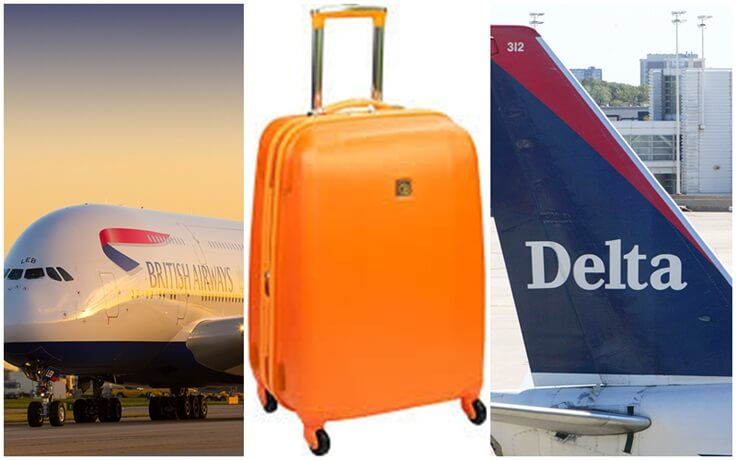
What are Hand-baggage Only Fares for British Airways and Delta Airlines Flights?

Future of Air Travel post COVID19: Empty Middle Seats or All Seats with Cover on Economy Flights
Trump’s temporary ban on immigration amid covid19 targets green cards, not h1b and other visas.

Gujarat’s Dholera International Airport, an Upcoming Air Travel Hub with Global Connectivity for 3-5m Flyers
- Aircraft Manufacturers
- Hospitality
Air India Inflight Experience: Types of Meals Offered On Board
Air india offers complimentary refreshments/meals on all air india-operated flights. you can enjoy a holistic flying experience with these culinary delights and satisfy those inflight food cravings..
- Facebook 11k
- Twitter 12k
- Telegram 16k
- Subscribers 11k
- Instagram 10k
Web Stories
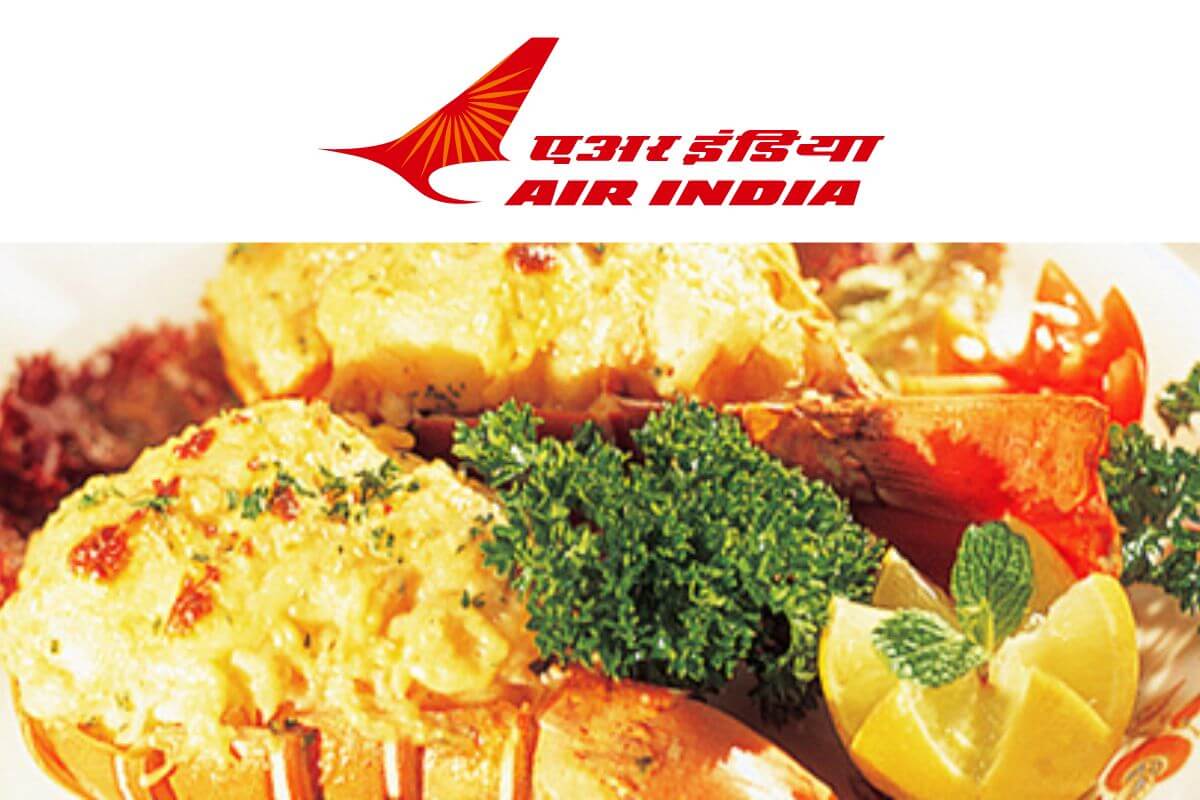
Remember the on board facilities on Air India flights we discussed in our earlier story? We learnt about the seating in First, Executive and Economy Classes, and in this story, we shall look into the types of Meals offered on board. No long journey is complete without the ultimate dining experience, and Air India brings you the Joy of More at your table.
Complimentary Refreshments/Meals on All Air India flights:
India, the land of flavours, takes pride in having a diverse setof culinary skills and tastes. Air India wants you to embark on an epic culinary voyage and rediscover your inner self. To experience the joy of more on an Air India flight, you need to first know the timings for meals, followed by the meal options. For your ease, we have tabulated the same for better understanding.
Air India offers complimentary refreshments/meals on all Air India-operated flights.
Air India Inflight Refreshments/Meals Timings:
Meals provided on domestic flights:, meals provided on international flights:, religious meals offered onboard:, medical & dietary meals:, meals for children and babies:, things to know:.
- The choice of vegetarian or non-vegetarian needs to be specified with all special meal requests in all classes.
- Liquor will not be served on Domestic flights and on International flights Liquor Service will be carried out for all major meal services except for Breakfast.
- The type of meal served will be based on the departure of the flight.
- Special Meals in economy class will be uplifted only on medical grounds with intimation at least 48 hours before departure.
- Seafood meal requests are not entertained in economy class.
- Nuts are served on international flights as an accompaniment to drinks, in case allergic, passengers can bring their own meal on board.
Conclusion:
Air India offers you a complete meal experience on board with their inflight food and beverage offerings. You can enjoy a holistic flying experience with these culinary delights and satisfy those food cravings.
Reported By
A Hodophile who enjoys Nature, Food & Technology. At AviationScoop, I focus on #Aviation - Apps, Technology, Consumer, Luxury and Travelling Experience.
Now Get Wi-Fi in Flights: Vistara Makes it Possible
Book cheapest flight tickets in india | best method, indigo lounge access luxury only at rs 575, related posts, air india signs purchase agreements for 470 aircraft from airbus and boeing.

Air India Group Operates Over 90 All-Women Crew Flights

Air India Resumes Delhi-Vienna Non-Stop flight Service

Air India to Hire Over 4200 Cabin Crew and 900 Pilots Through 2023

Editors Pick

Upcoming Greenfield Airports in India to Cater for the Needs of Growing Air Passenger Traffic
Have a breaking news, inside story, scoop?
Write to us, your anonymity is our priority at news [at] aviationscoop.com/
Want to be featured on Aviationscoop?
Send us your articles, stories, suggestions, feedback at news [at] aviationscoop.com
Latest Flight Review

Vistara to Get Its Third Boeing 787-9 Dreamliner; Ramps up Frequencies to Frankfurt and Paris
Lounge experience.

Alliance Air Adds an ATR-42 to Its Fleet
Featured card.

Vistara Announces ‘Dawat-e-Awadh’, a Month-Long, Inflight Food Festival
Recent comments.
No Recent Comments....!
- No Most discussed posts - 1 week ago....!
- No Trending posts - 1 weeks ago....!

WhatsApp To Let Users Control Chat Backup Size

OneWeb Partners With ISRO Commercial Arm to Launch Satellites in India

Indians Will Consume Much More Data With 5G
Expert opinion, vistara offering world’s first arc 3d inflight map application, add aviation scoop to your homescreen.
- Skip to primary navigation
- Skip to main content
- Skip to primary sidebar

- Air fryer Recipes
- Instant Pot Recipes
45+ Best Indian Air fryer Recipes
Published: Feb 2, 2021 · Modified: Oct 1, 2023 by Rachna ·
- 1.4K shares
Indian recipes are hugely popular globally. Not only are they very flavourful, but there is a mind-boggling variety that is hard to match. Here is a collection of Indian recipes in air fryer:
I have included vegan and vegetarian recipes that straddle a wide range of mains, appetizers, sides and snacks. Check out this fantastic collection of Vegetarian Indian air fryer recipes.
You can buy my Indian Air fryer Recipes Cookbook here. Featuring 61 recipes with detailed instructions.
You may also like this Air fryer Vegetarian and Vegan Recipes Cookbook .
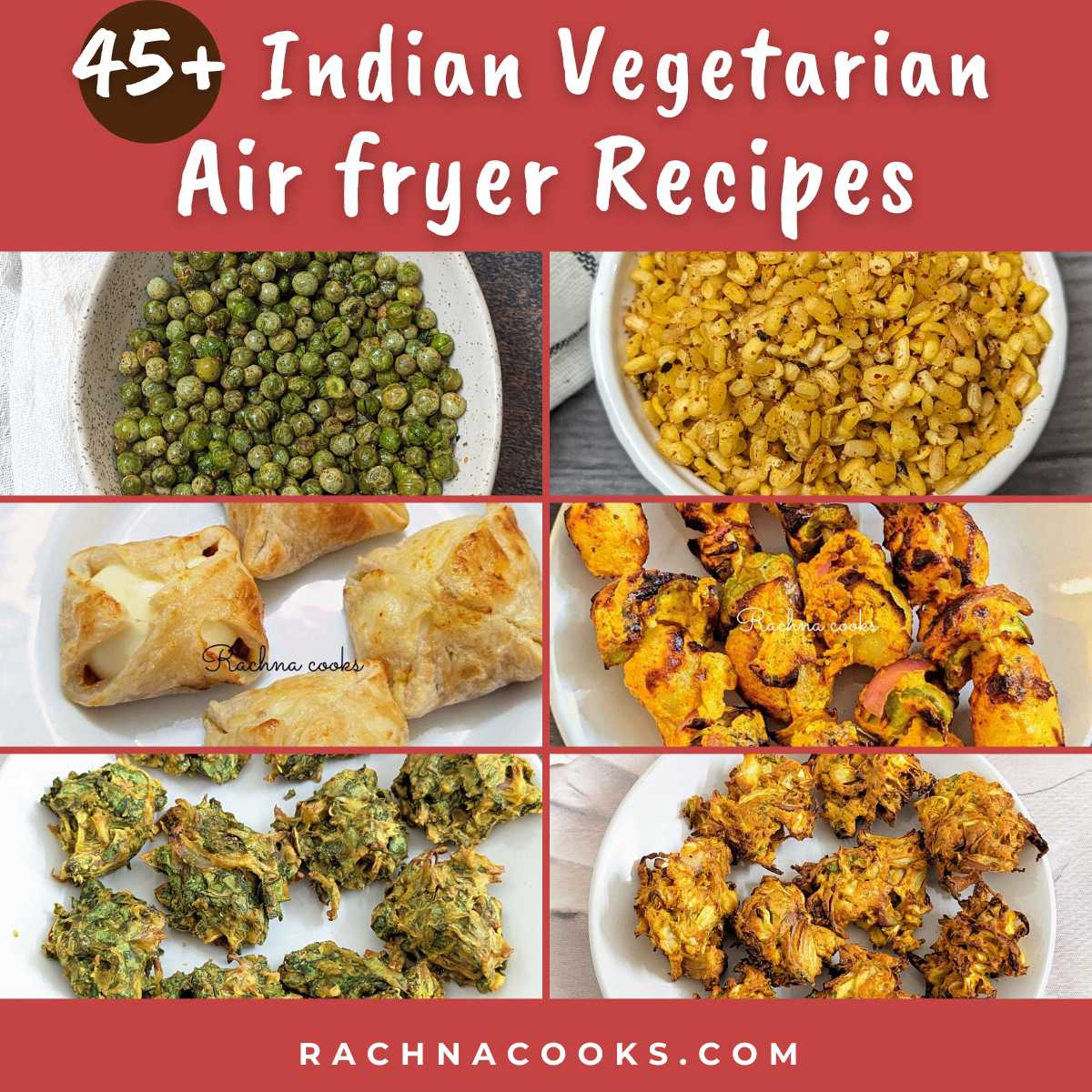
I have an Air fryer group on Facebook where we share recipes, tips and questions on air fryer cooking.
Let's connect here: My Awesome Air fryer Recipes Facebook Group or on my Instagram profile.

This is the air fryer I own .
Vegan and Vegetarian Indian Appetizers or snacks
1. kurkuri bhindi or indian-style air fried okra.
This is a delightful, crunchy okra recipe where the okra is marinated in Indian spices and air fried. It is great as a snack or a side with rotis.
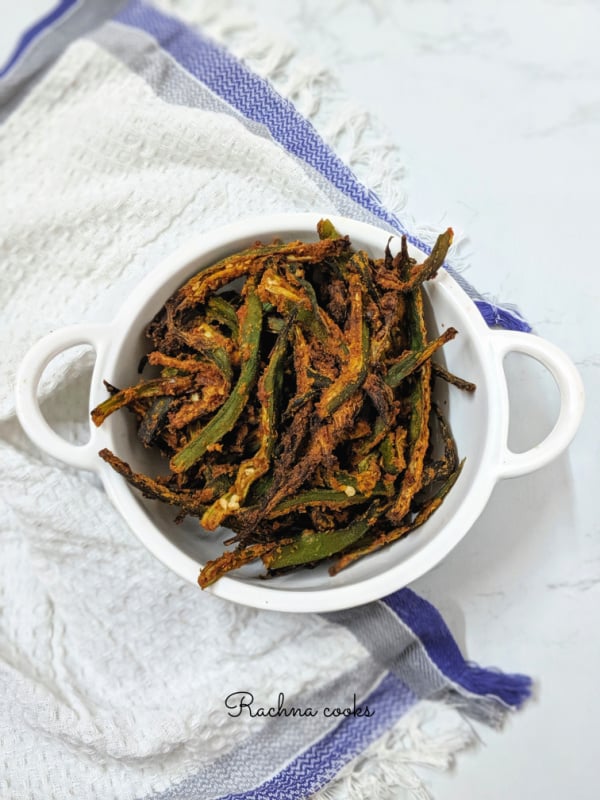
2. Air fryer Samosa
A popular Indian street food, samosa is a crunchy food that is often had with evening chai or tea. Try this healthier version air fried.
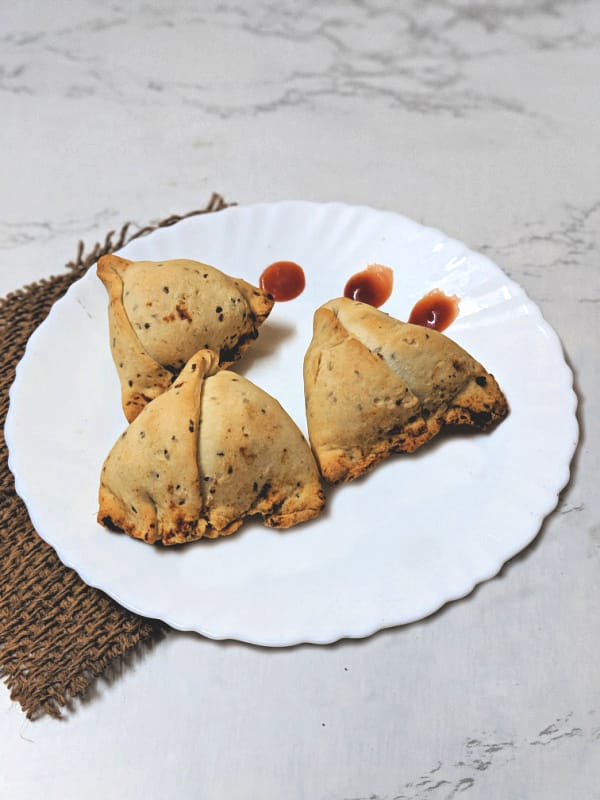
3. Crispy Cheesy Broccoli or Malai Broccoli
This malai broccoli comes out super flavourful and healthy when made in Air fryer. It is a favourite of my kids. Do try.
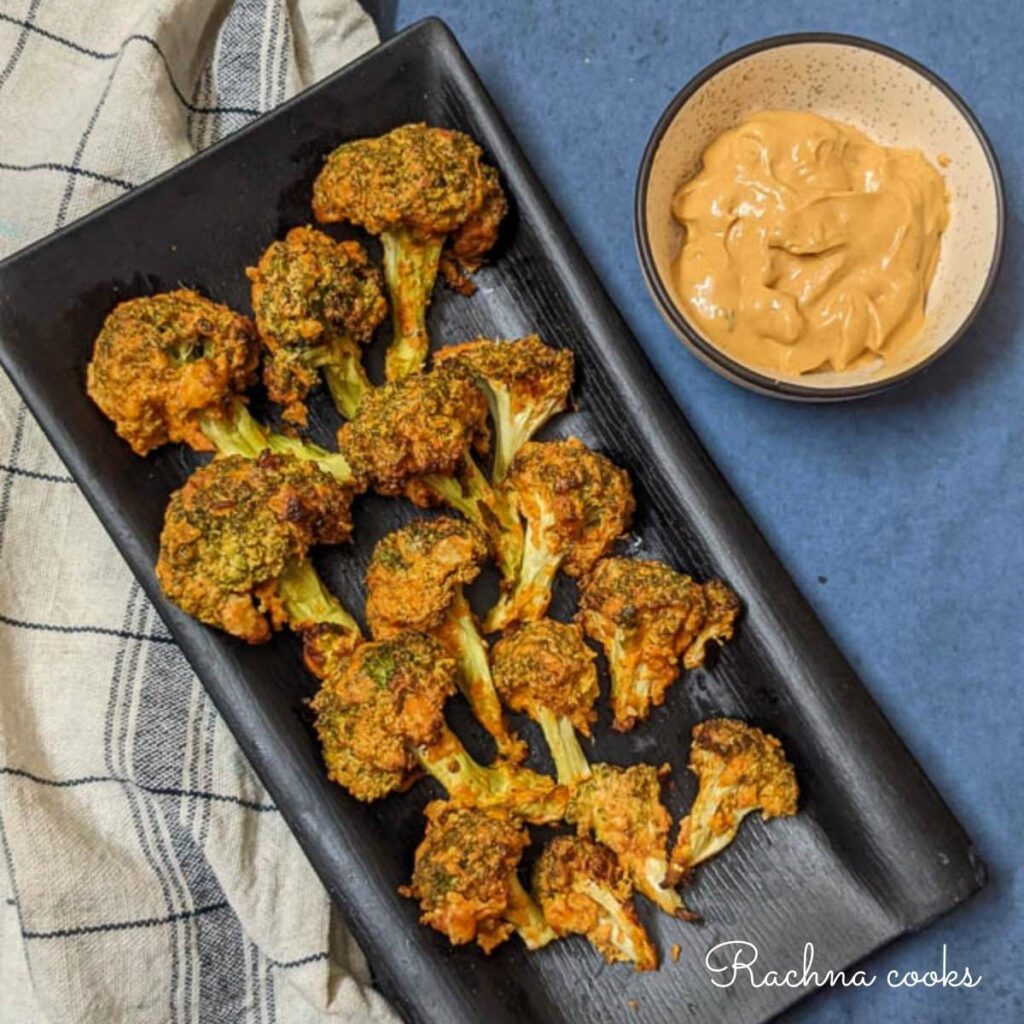
4. Healthy Hara Bhara Kabab
This is a gluten-free recipe that uses oats, spinach and peas. A lovely appetizer or snack, it is quite delicious.
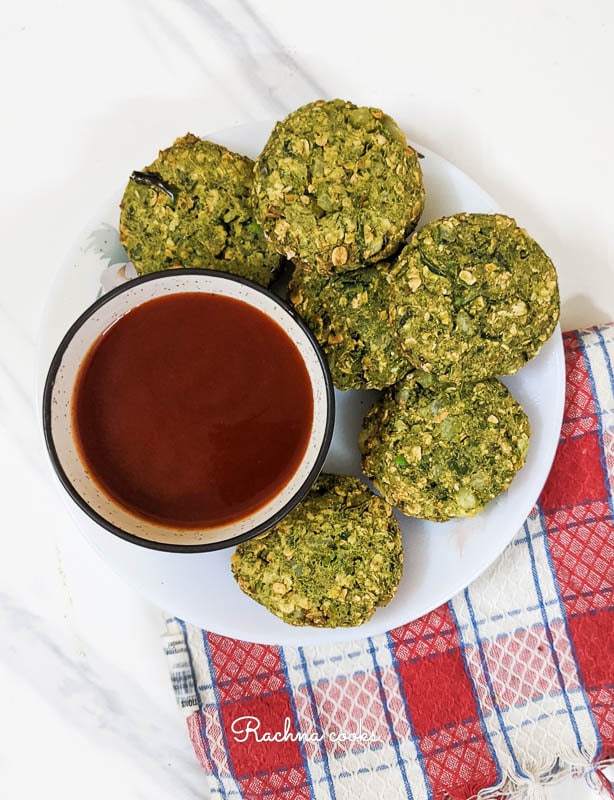
5. Methi Muthia
Made with gluten-free flours and fresh fenugreek leaves , these methi muthia turn our super flavourful, crispy and healthy in the Air fryer.
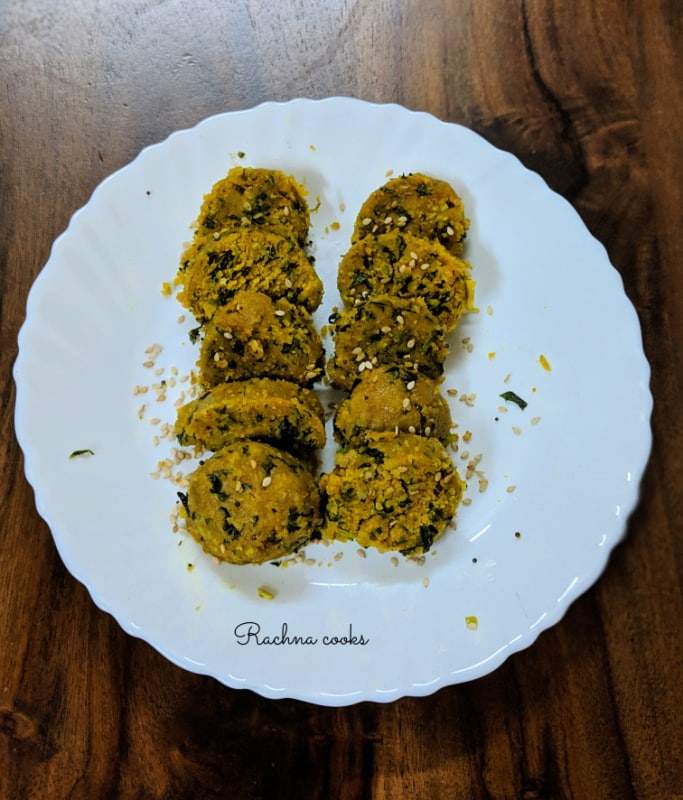
6. Onion Pakoda or Onion Fritters
We Indians love our fritters. There was a time when these deep-fried goodies were a regular part of our tea time. Now you can enjoy the same taste with air fryer after a few tweaks.
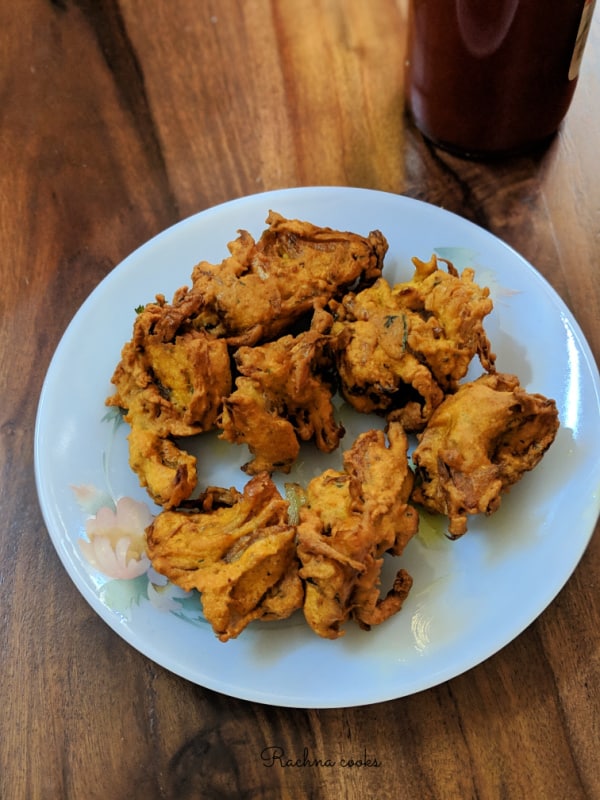
7. Beetroot Cutlet
Beetroot cutlets are super healthy and look great too. Try this easy recipe for an evening snack.
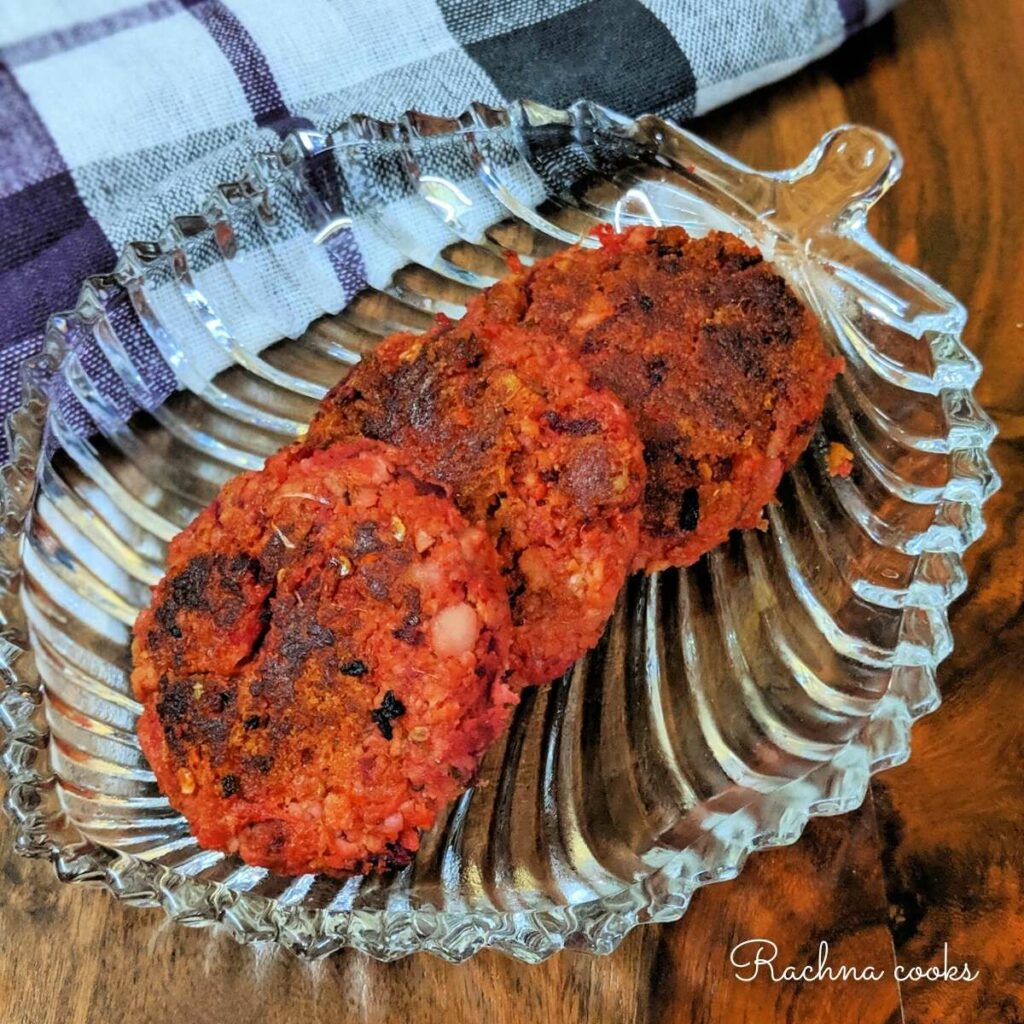
8. Kachche Kele Ke Kebab or Plantain patties
These plantain patties are tasty and healthy. You can have them as snacks or appetizers.
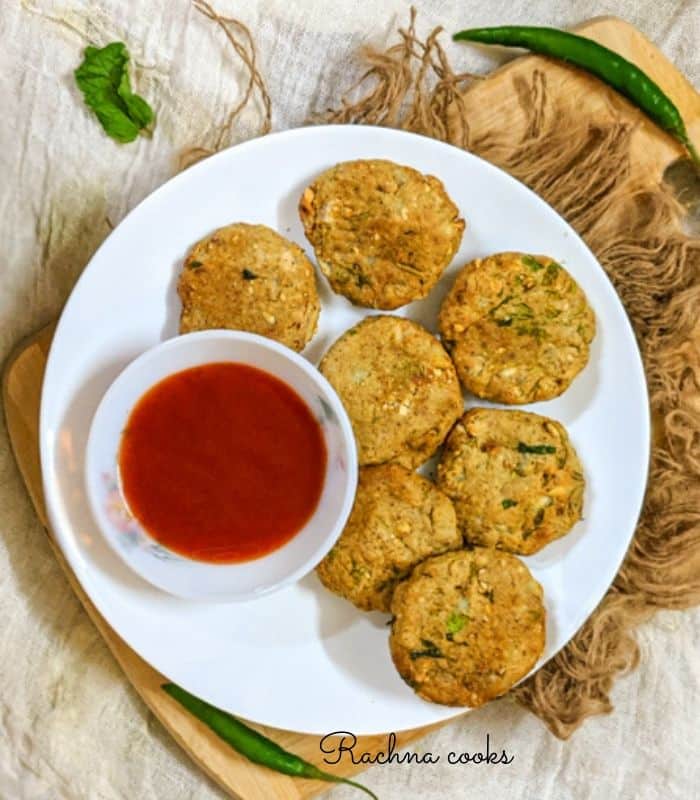
9. Aloo Tikki Chaat
These potato patties are a popular Indian street food. Have them as it is or with a yogurt topping. Either way they are super tasty.
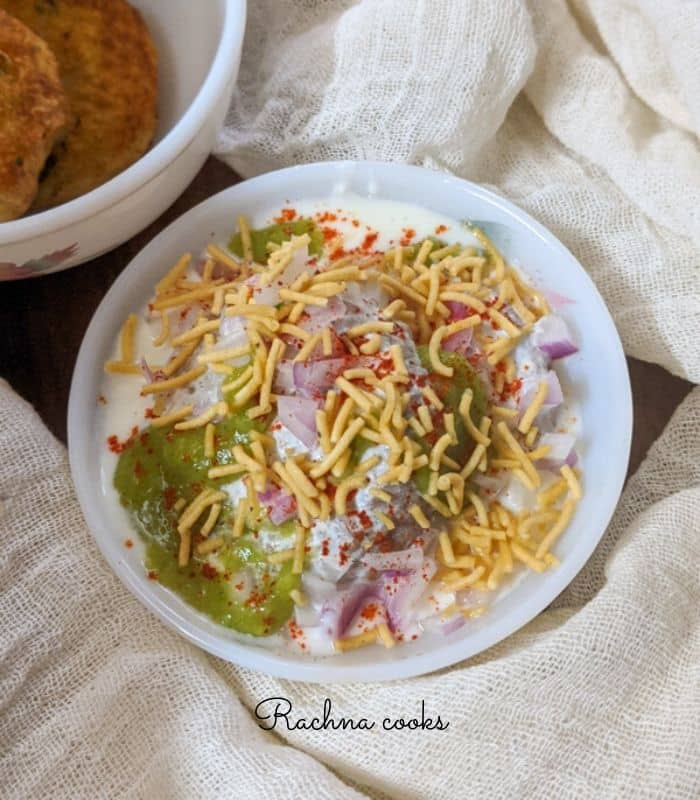
10. Sabudana Vada
These tapioca fritters are a very popular appetizer or snack. They come out perfect in the air fryer without using any oil.
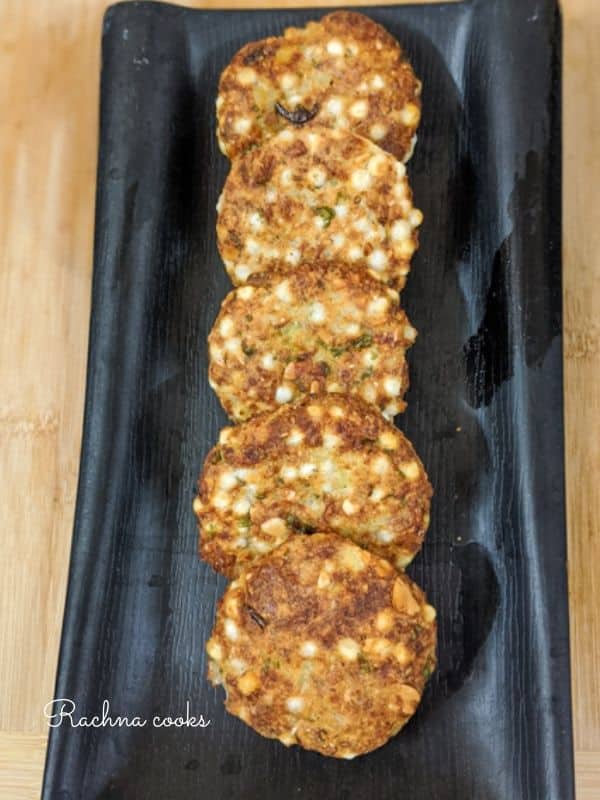
11. Namak Pare
These square or diamond-shaped snacks are very popular with tea and are also made for festivals like Diwali and Holi.
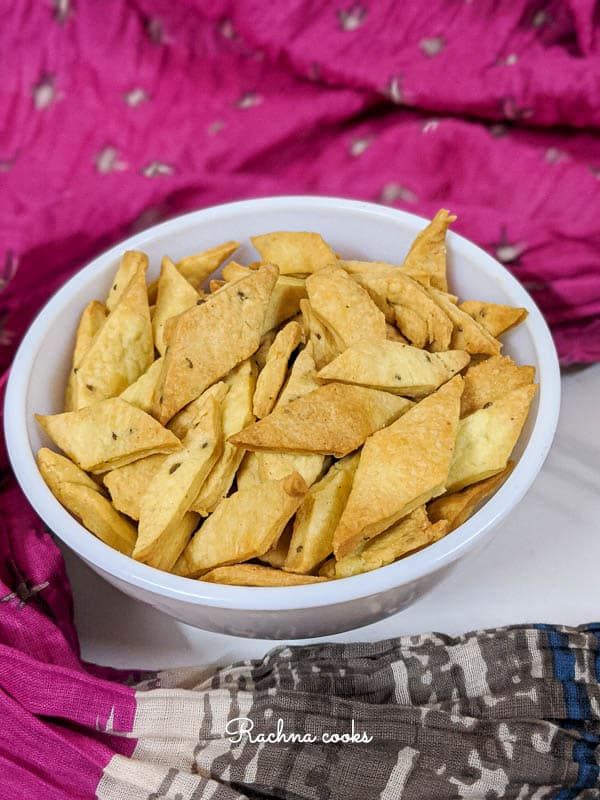

12. Paneer Tikka
Paneer tikka is a quintessential and much-loved Indian starter or appetizer. Thick chunks of paneer or cottage cheese along with vegetables like onions, peppers and tomatoes are marinated in a spicy tandoori masala and cooked in Air fryer for an absolutely delightful treat.
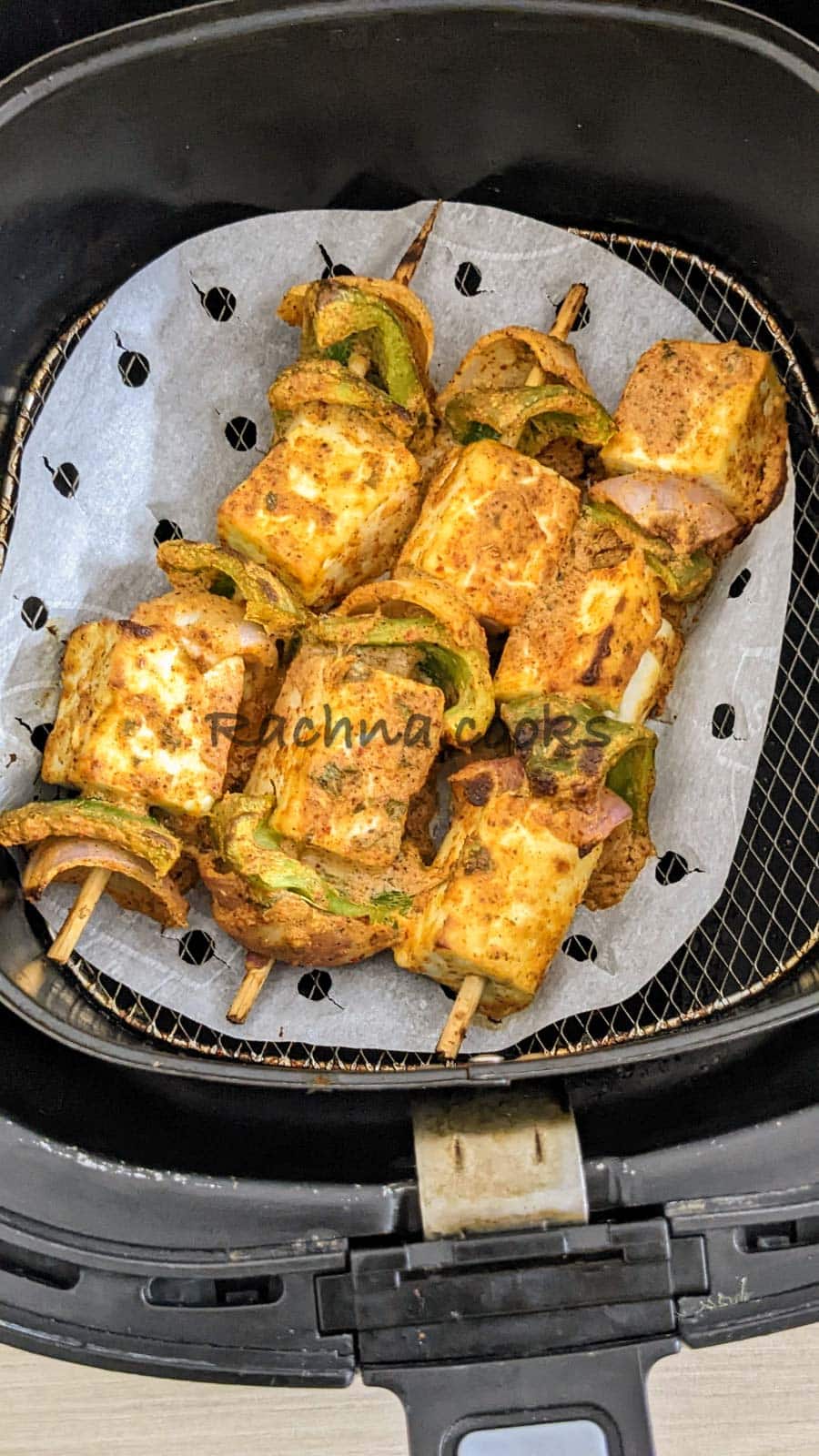
13. Gur makhana or Jaggery Foxnuts
Foxnuts or makhana are known for their health benefits. Air frying them makes them super crunchy. These jaggery foxnuts are like caramel popcorn, healthy and tasty as a snack.
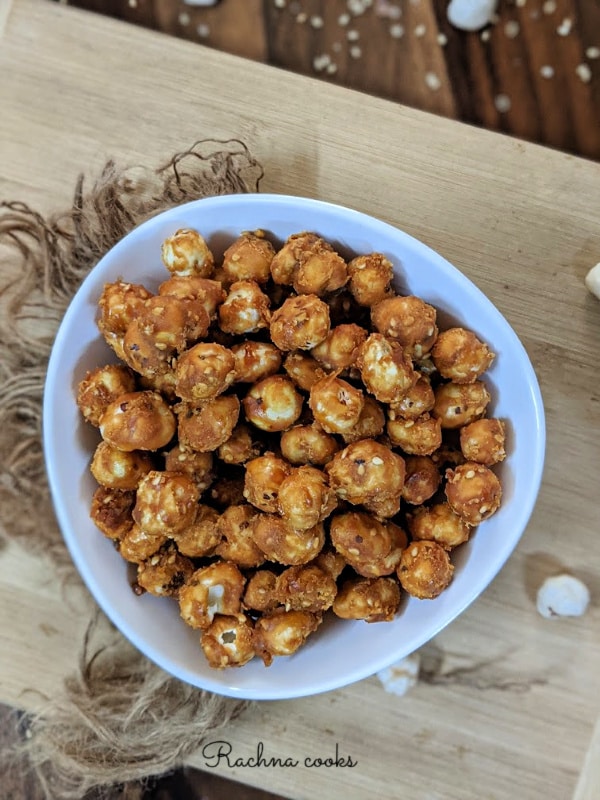
14. Karela Chips or Bitter Gourd Chips
Karela or bitter gourd is a healthy vegetable albeit bitter in taste. In Indian cuisine, it is used extensively. These karela chips are spicy and very addictive, healthy too.
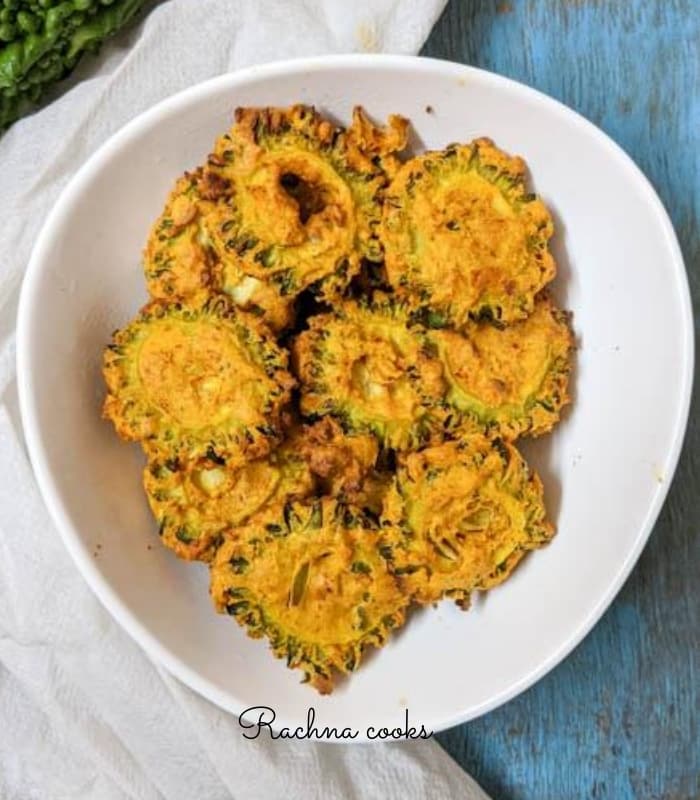
15. Banana Chips or Plantain Chips
Plantains are healthy and have complex carbohydrates that are good for you. This is a recipe for plantain crisps or chips that turn out super tasty in Air fryer.
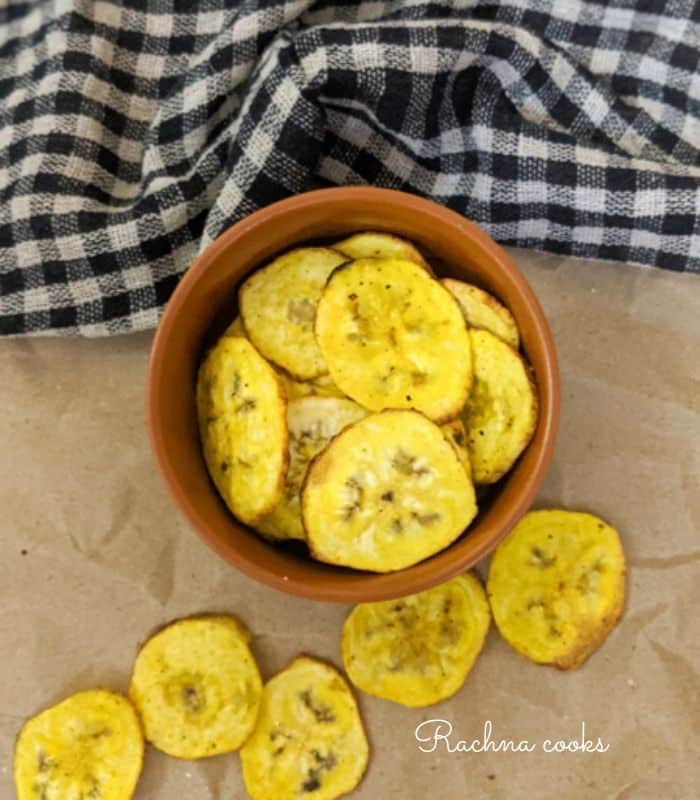
16. Yuca Chips or Tapioca Chips
Tapioca is a high fibre complex carbohydrate. Try this crunchy and delicious tapioca chips recipe as a snack.
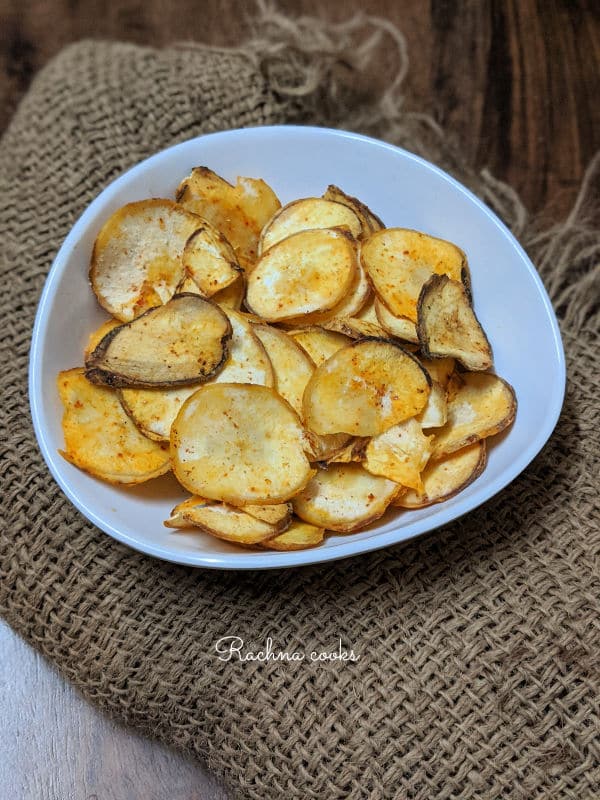
17. Chana Dal Vadas or Masala Vada
This is a delicious and healthy vada made with lentil mash spiced with a few herbs and spices. Perfect with chai.
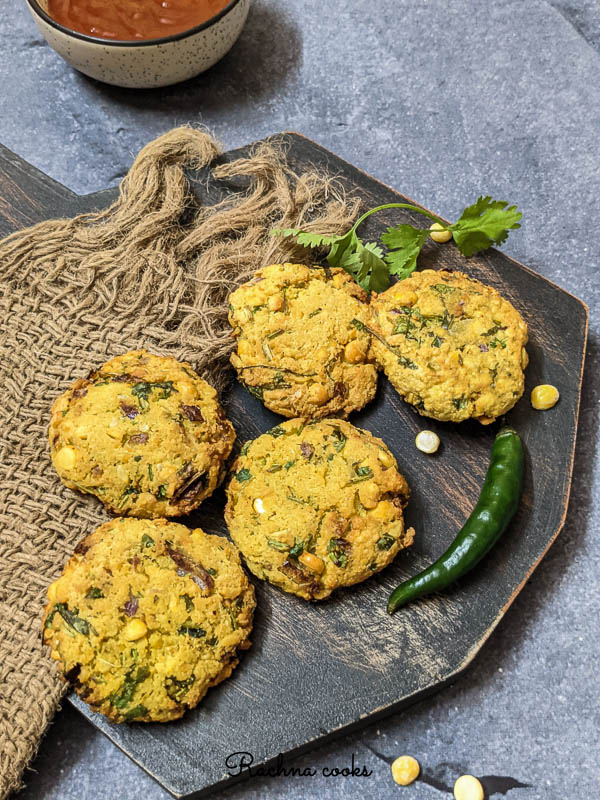
18. French Fries
Not traditionally Indian, this snack is wholeheartedly adopted by us. Sprinkle chaat masala or spice mix of your choice on perfectly crispy french fries made in Air fryer.
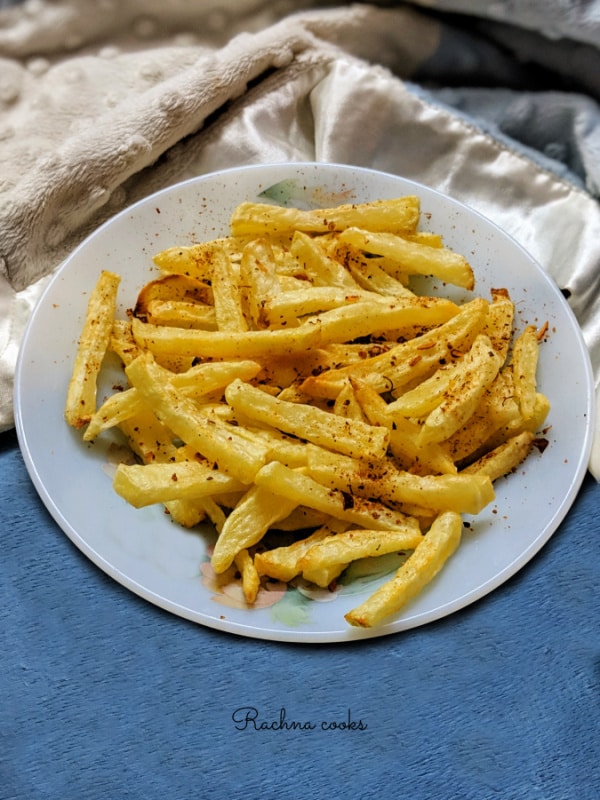
19. Sweet Potato Fries
A delectable and crispy treat, that is especially loved by kids. Try these sweet potato fries today.
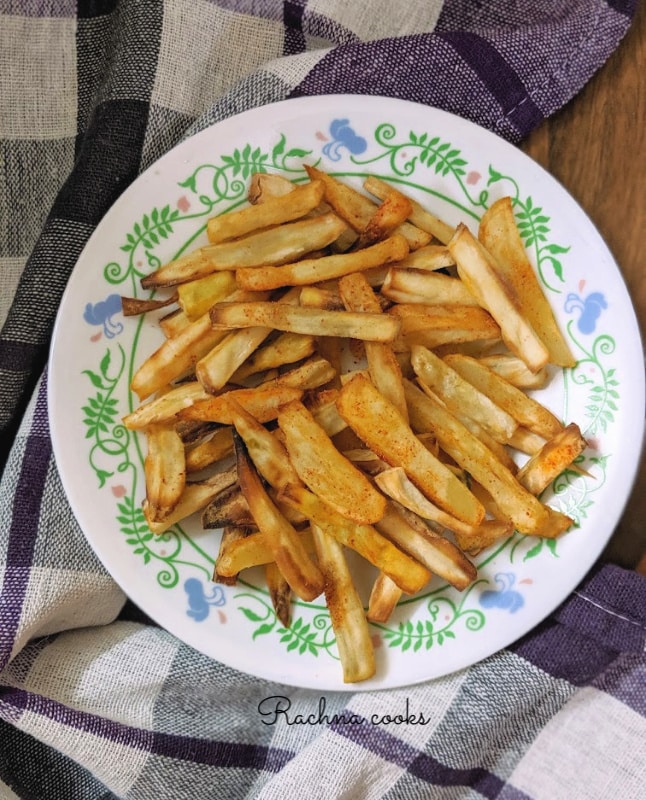
20. Dahi Vada
Fried lentil dumplings are served with spiced yogurt. These dahi vadas turn out great in the Air fryer.
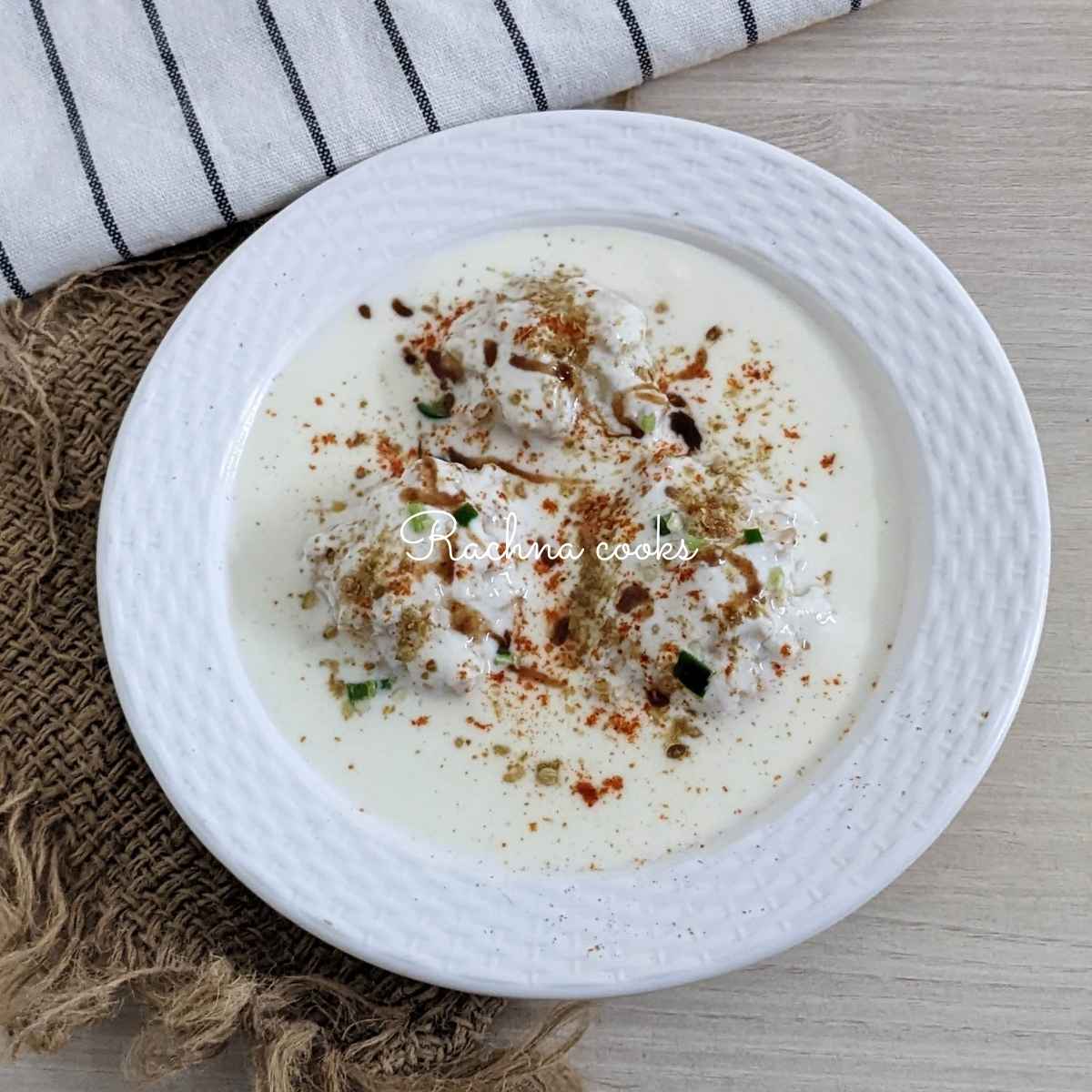
21. Urad Dal Kachori
These khasta kachoris are super flaky and tasty. It is a savoury pastry made with wholewheat flour and a spicy lentil filling. It is had with a spicy potato curry as a filling snack or meal.
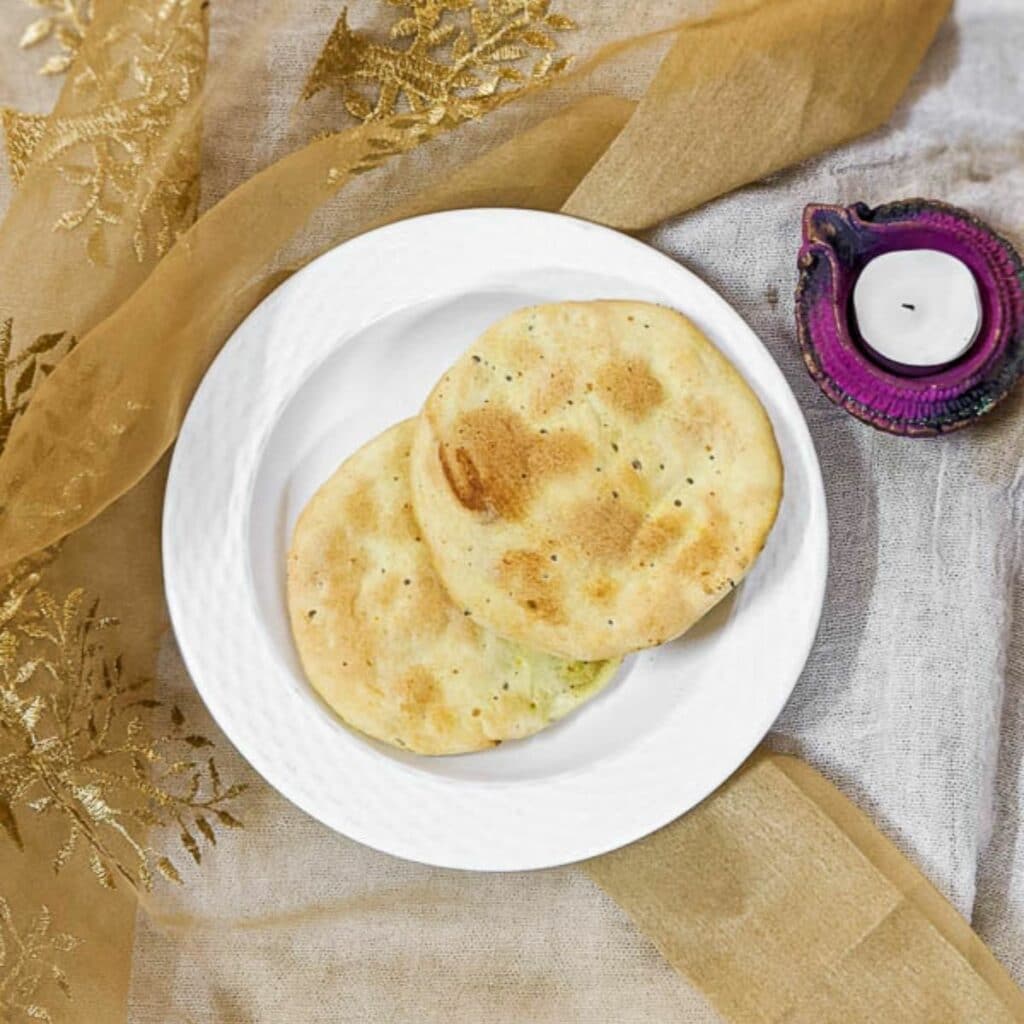
22. Aloo Pakora Recipe
Fritters made with sliced potatoes dipped in a chickpea flour batter. It is delicious.
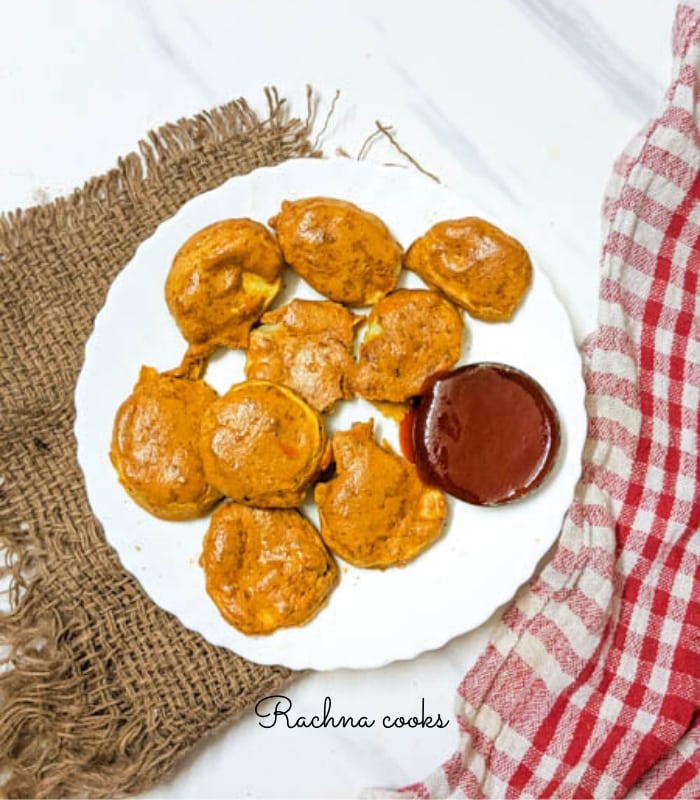
23. Mirchi Bhajji
These mirchi bhajjis are delightfully crunchy and tasty. Air frying them really cuts down the oil used. Super tasty Indian street food snack.
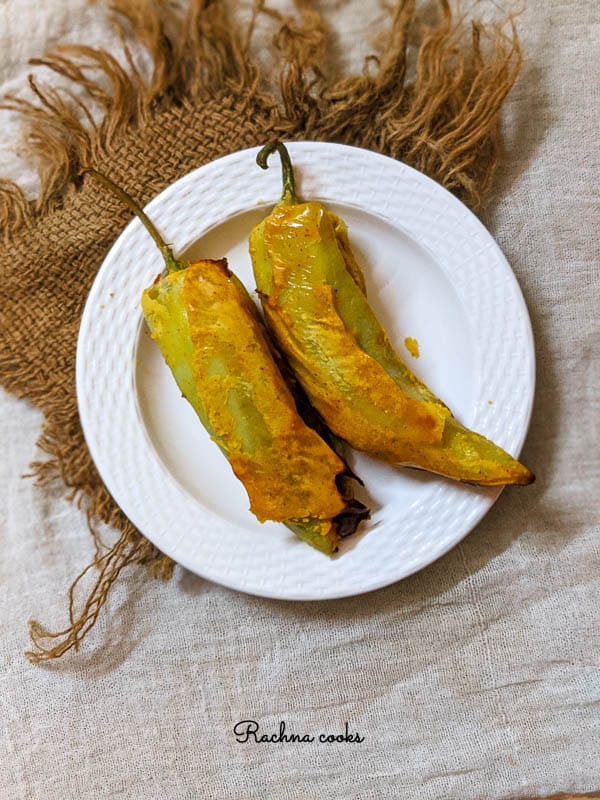
24. Whole Wheat Naan Recipe
This wholewheat naan bread recipe is easy to make and uses no yeast. I have provided skillet and air fryer instructions. Try this restaurant quality garlic naan.
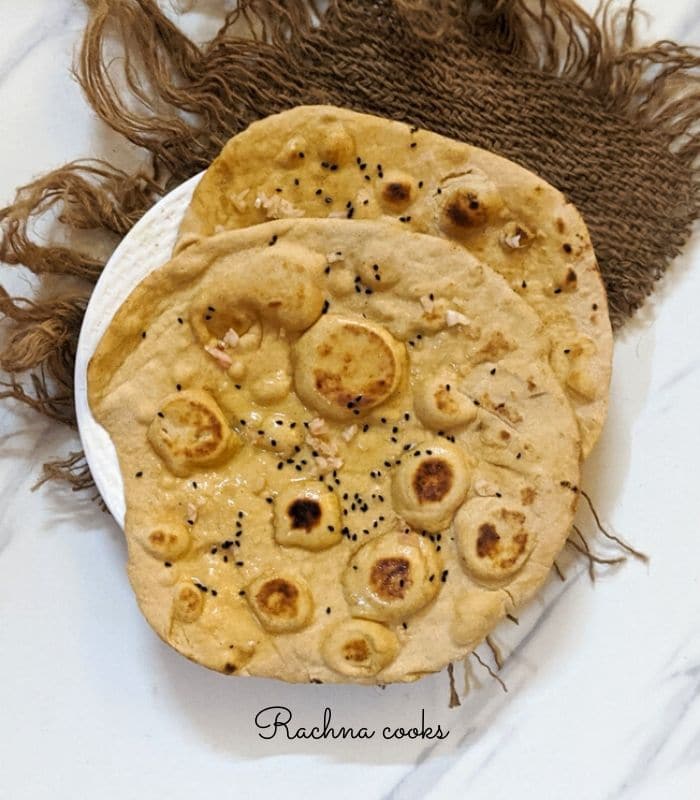
25. Naan Pizza in Air fryer
Making air fryer naan pizza is a true delight. It is done in no time and is a perfect thin crust pizza personal size. The kids love it. Fully customizable for toppings.
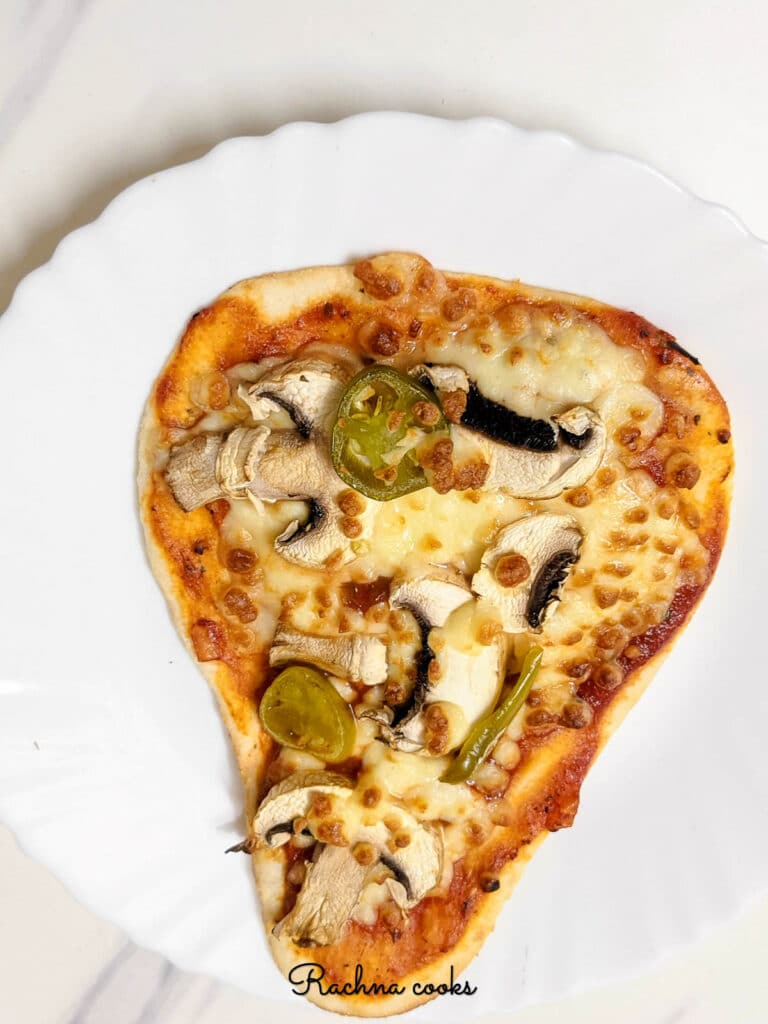
26. Air fryer Moong Dal
Cruchny air fried moong dal is a low-oil take on the fried moong dal snack that is loved by everyone.
Try this easy recipe at home.
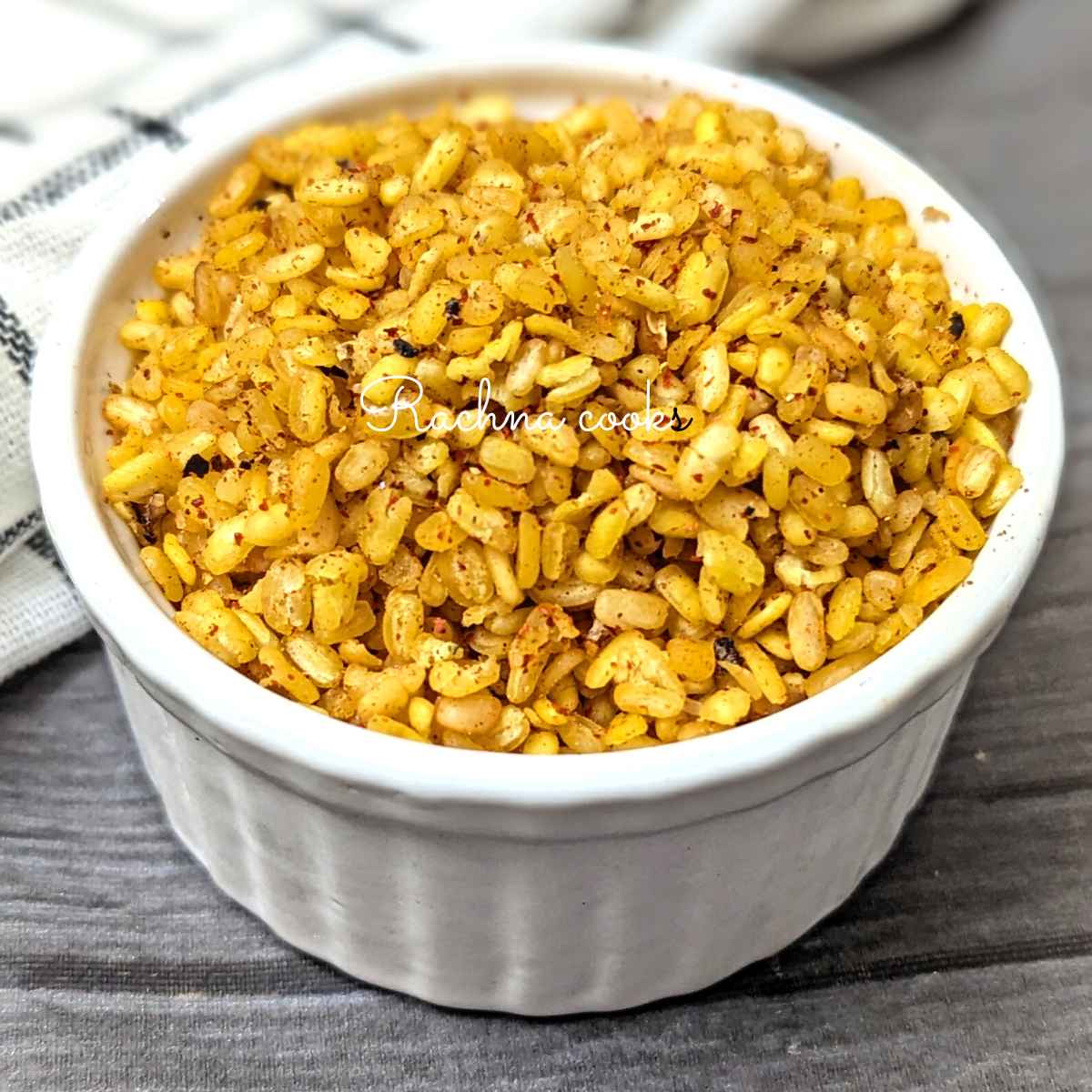
27. Cabbage Pakoda
This cabbage pakoda is surprisingly tasty and is loved by my whole family. Crispy and easy to make. Do try.
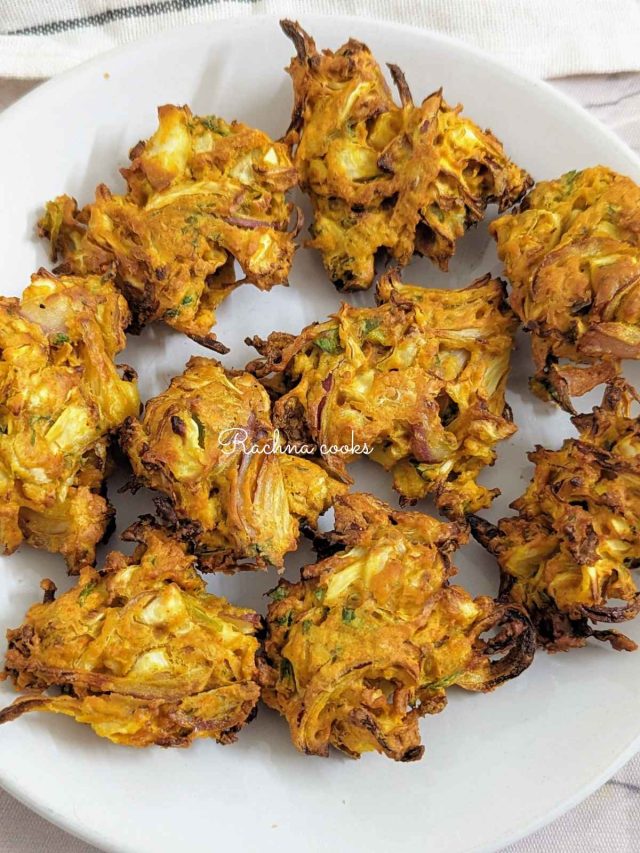
28. Spinach or Palak Pakoda
I love spinach pakoda. It looks pretty and is so healthy too. Very easy recipe.
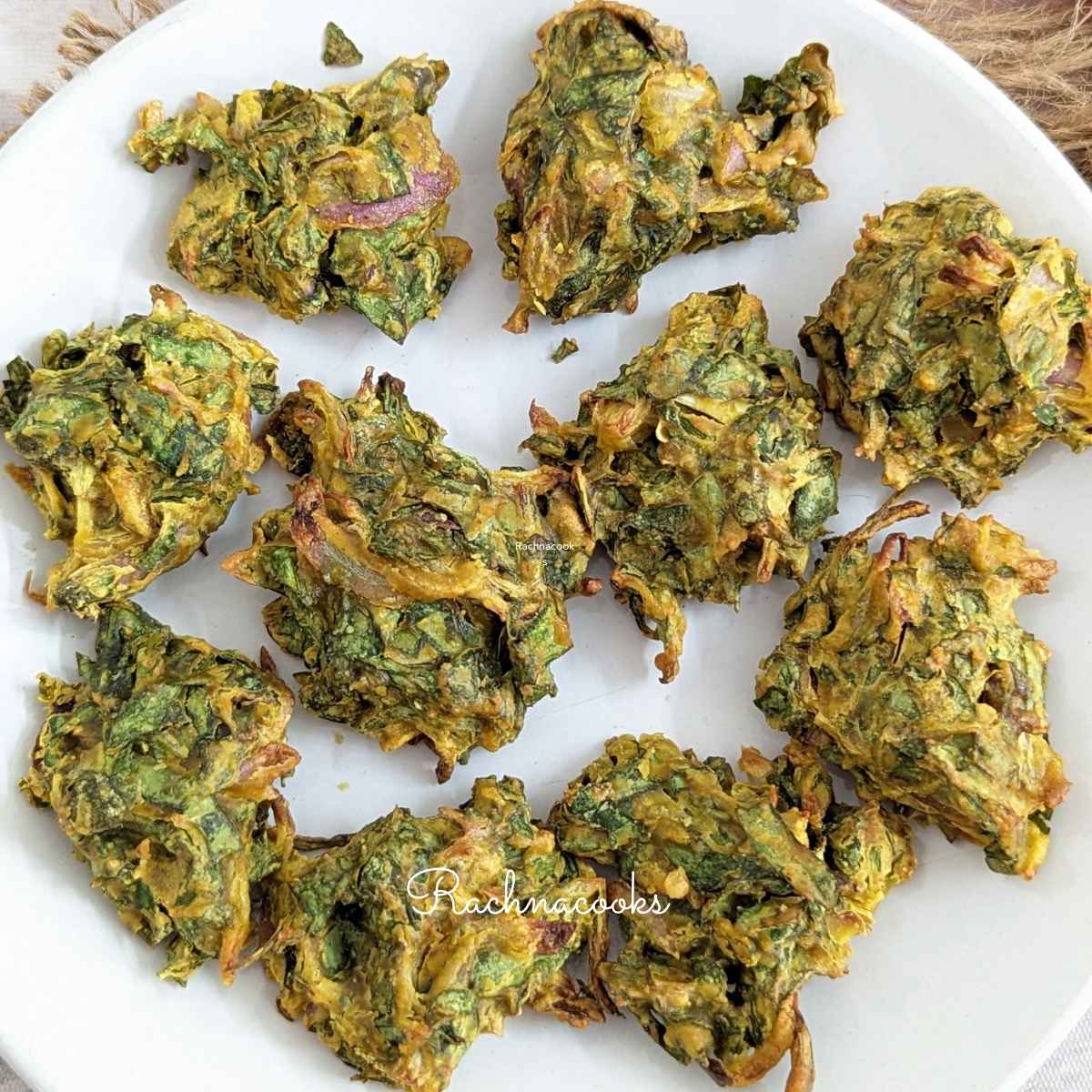
29. Egg Puff Recipe
This Iyengar bakery style egg puff is such a delight to have as a snack. The recipe is super easy with puff pastry sheets and boiled eggs at hand.
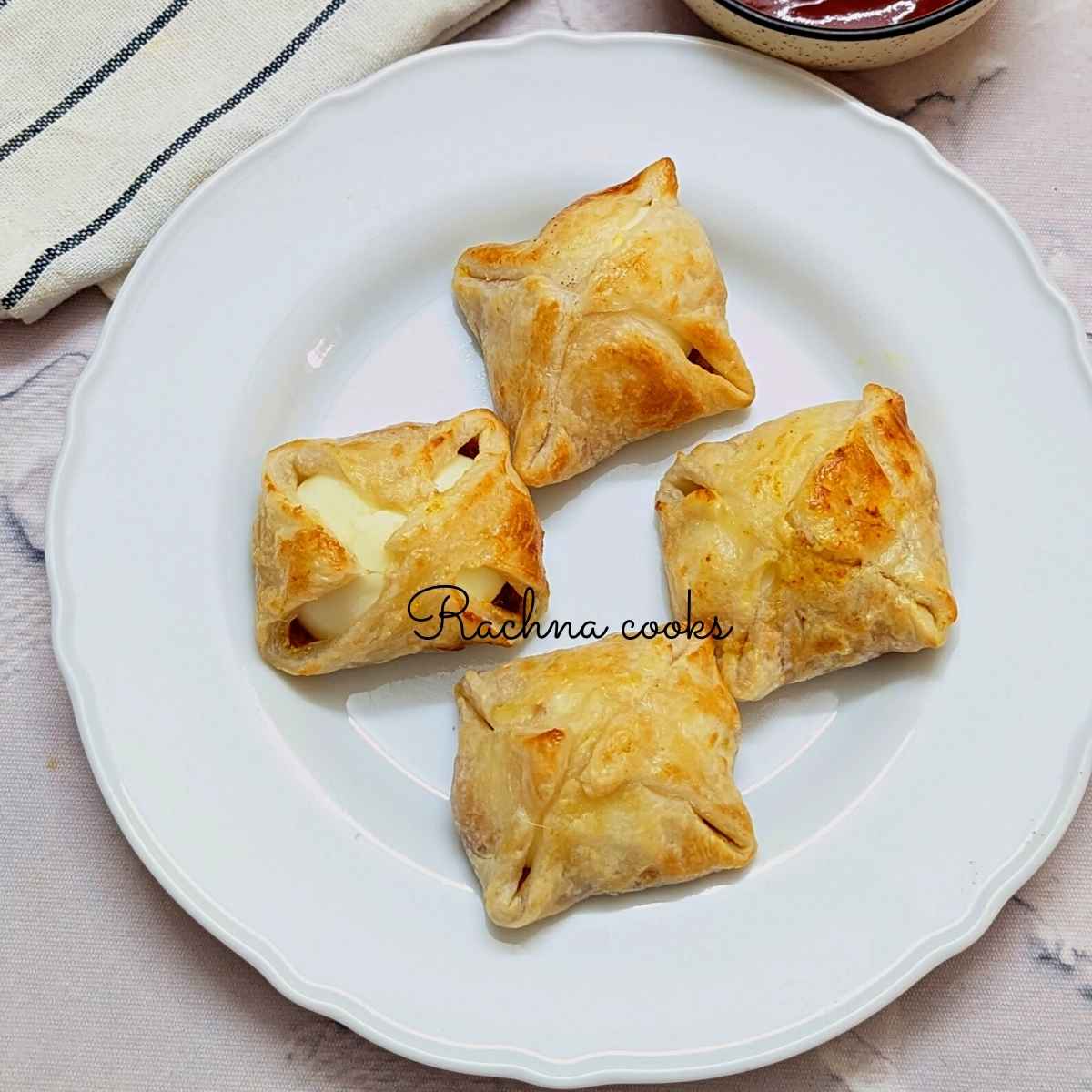
30. Paneer Fingers
If you have eaten this crunchy snack then you will be a fan. Thin paneer strips are coated in a crunchy breading and air fried. So delicious.

31. Tandoori Aloo
These tandoori baby potatoes are such a delightful appetizer or snack. Baby potatoes are marinated in a tandoori marinade and air fried to perfection.
Perfect for your parties.
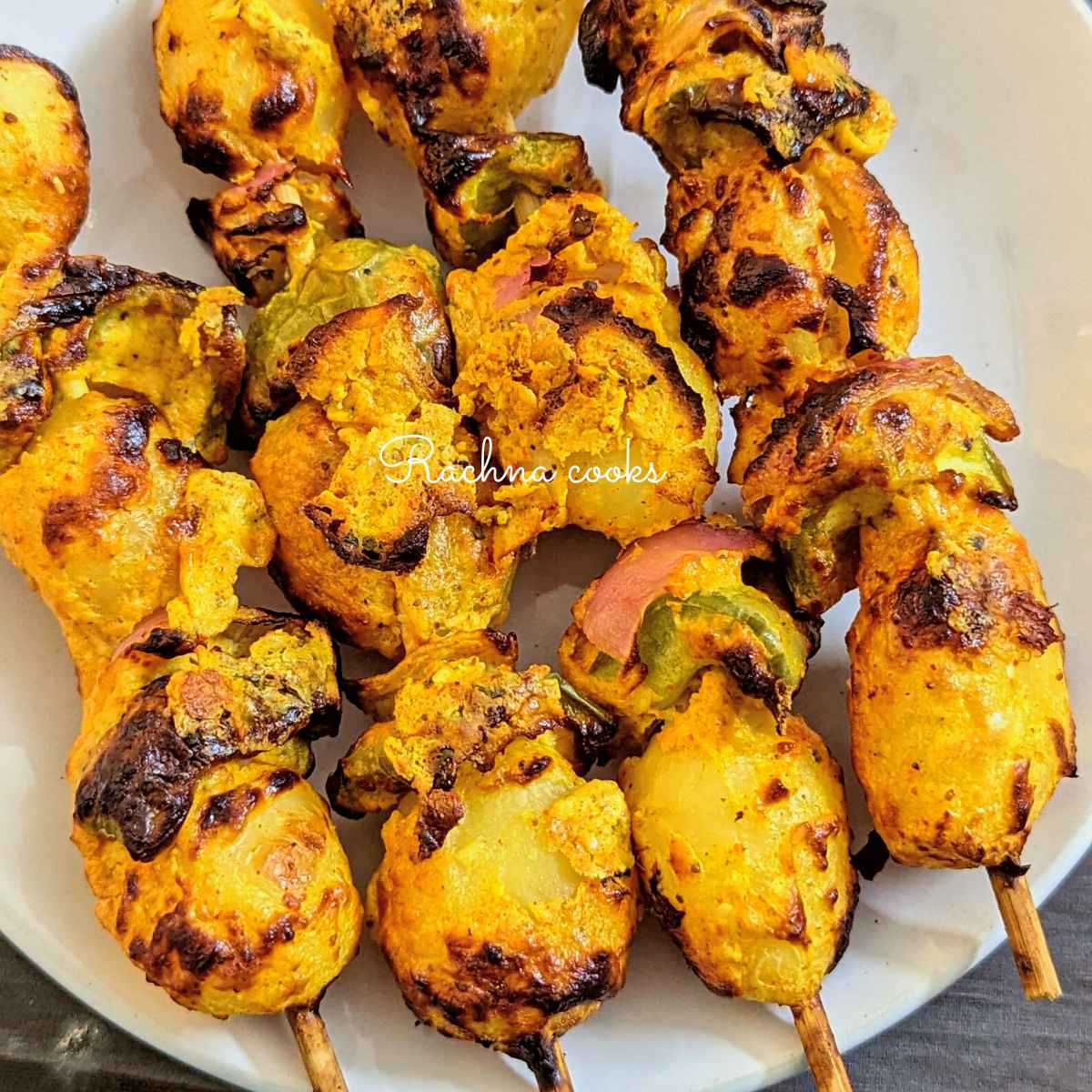
32. Bread Pakora
This is a very popular street side snack. You can make this with a spiced mashed potato filling too.
I have shared a batter coated bread recipe that is so tasty.
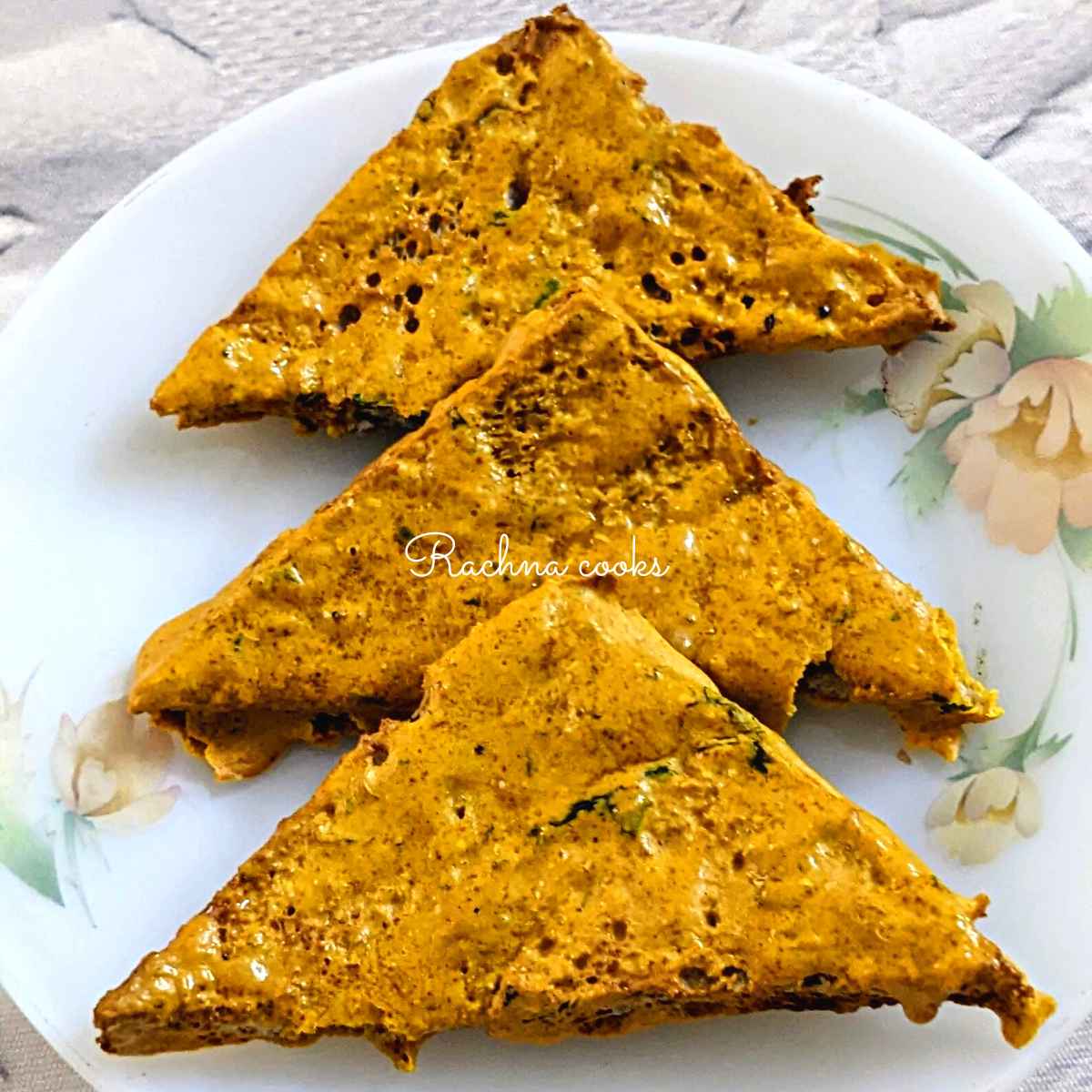
33. Masala Peanuts
These crispy chickpea flour coated masala peanuts are a popular Indian snack. These are nutritious and low oil as they are air fried. Very tasty too.
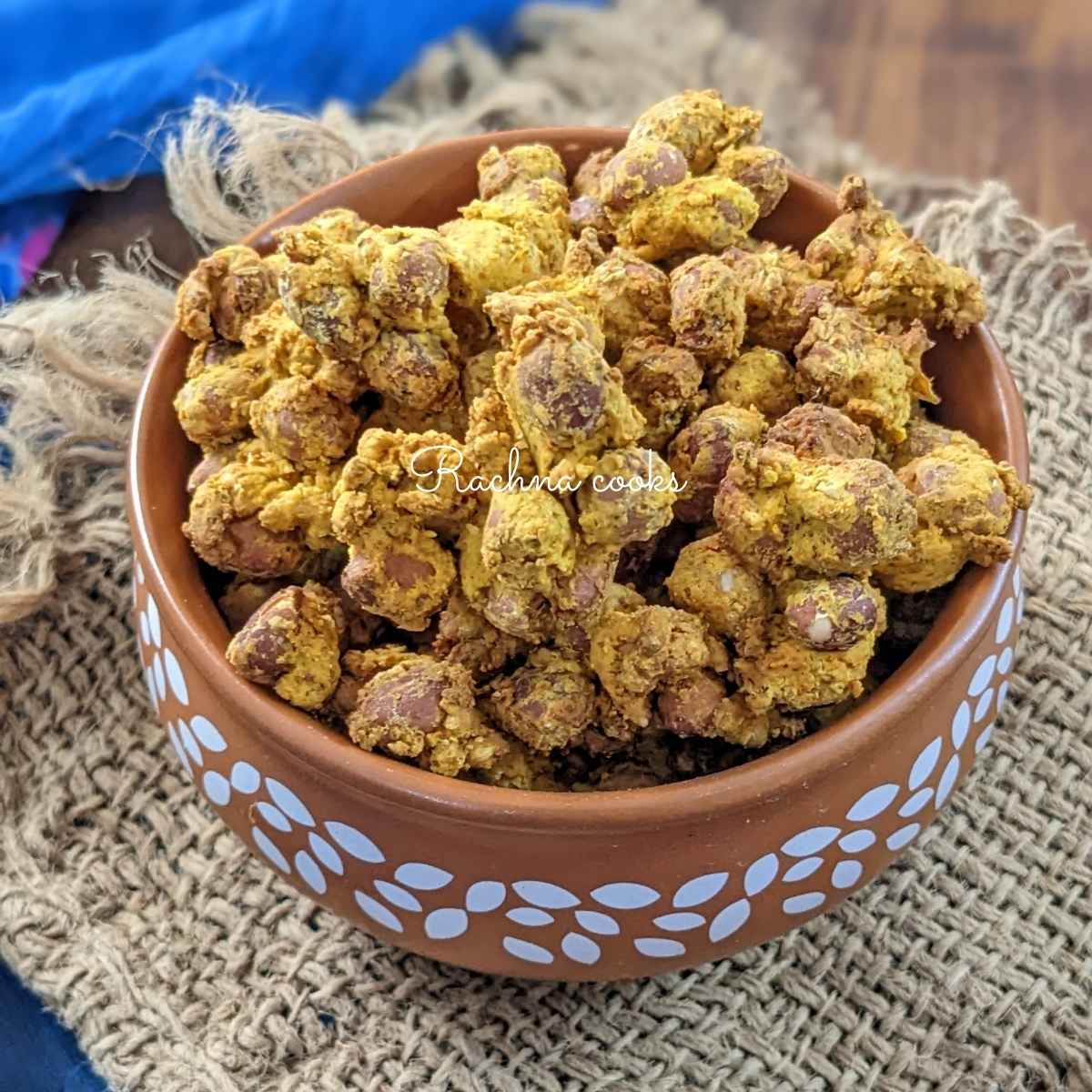
34. Medu Vada
This is a very popular South Indian breakfast that is traditionally deep fried.
Made low oil in air fryer, it is a sure treat.
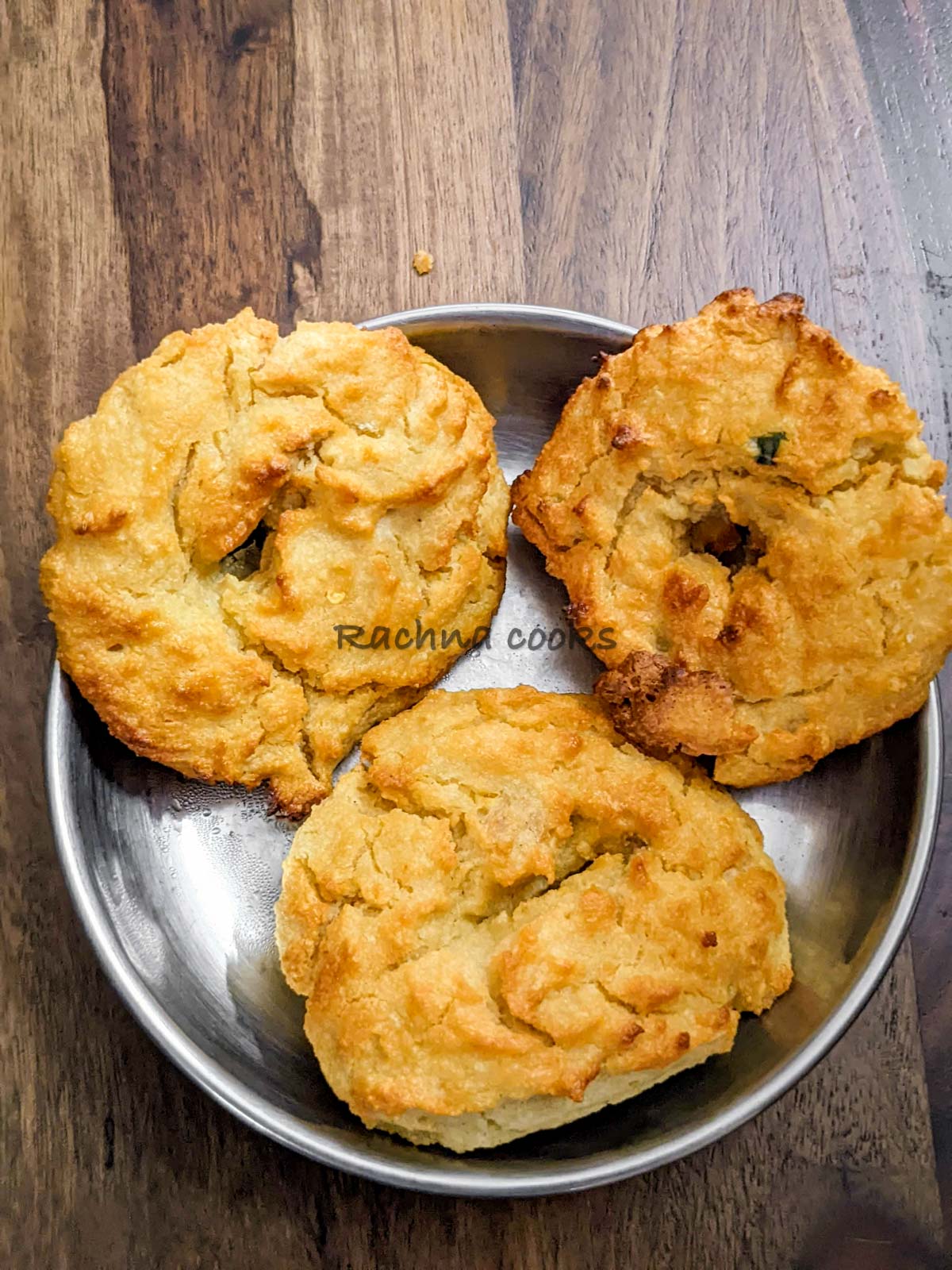
35. Bread Pizza
This is my easiest go-to snack and a favorite of my kids too. Super easy as I always have bread at hand.

Main Courses
Here are some Indian main courses that are super easy to make and use hardly any oil in the air fryer. Pair these with rotis or rice. Who said traditional Indian recipes cannot be made in the Air fryer?
1. Baingan Ka Bharta
This aubergine mash is a delightful North Indian side dish. Roasting the aubergine in air fryer and then tempering it with spices yields a bharta that is super tasty. Try it.
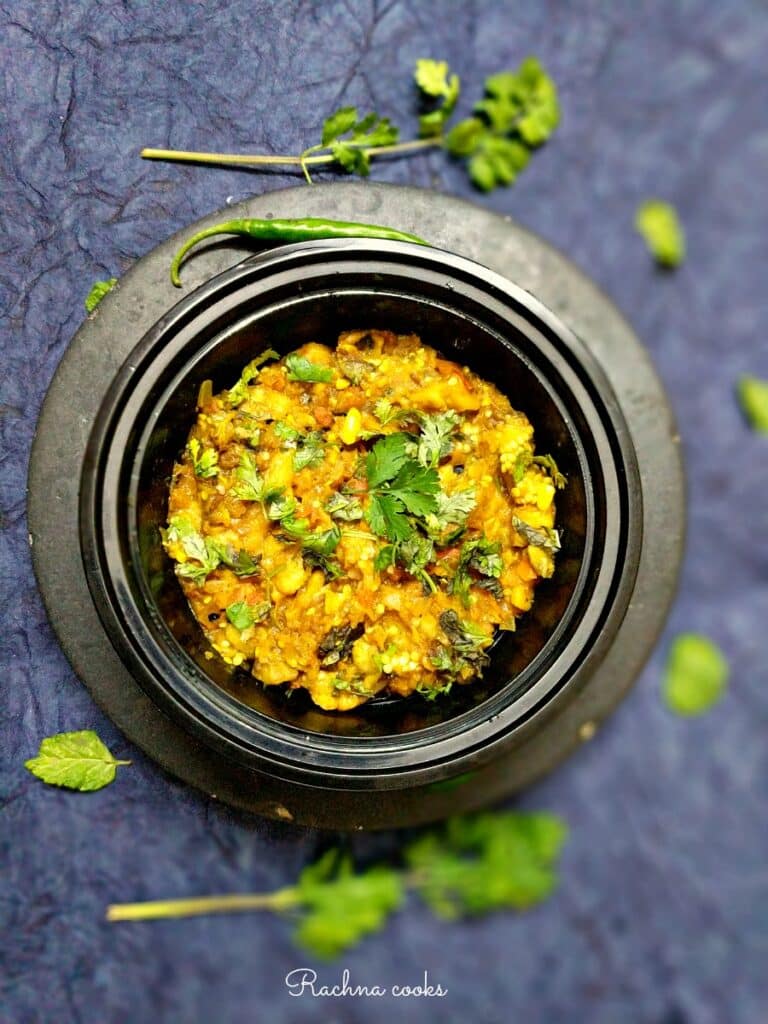
2. Bagara Baingan
Another aubergine delight, this bagara baingan is a specialty dish from South India. Air frying the small aubergines saves both time and money while not compromising the taste. It is a finger-licking aubergine curry recipe.
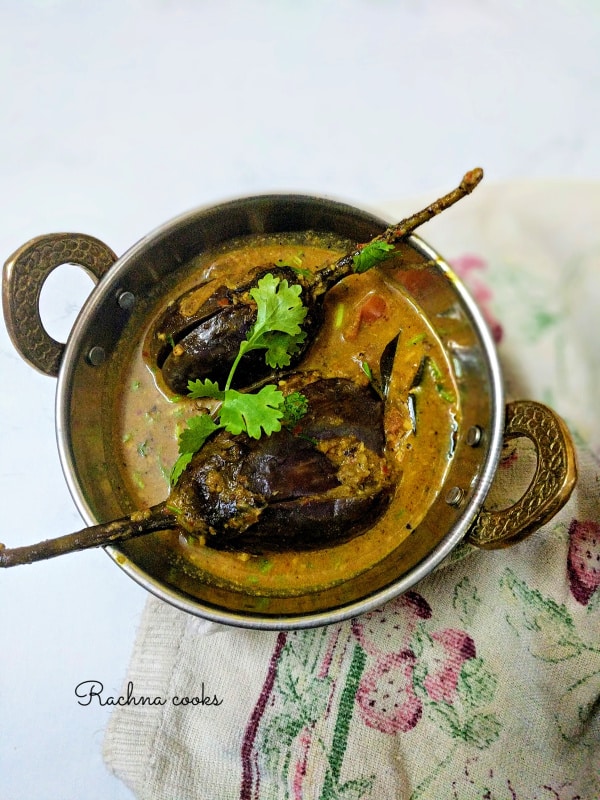
3. Bharwan Karela
Another much loved bitter gourd dish is stuffed bitter gourd or bharwan karela. Karela is filled with a stuffing and air fried to crispy perfection. Serve hot with rotis.
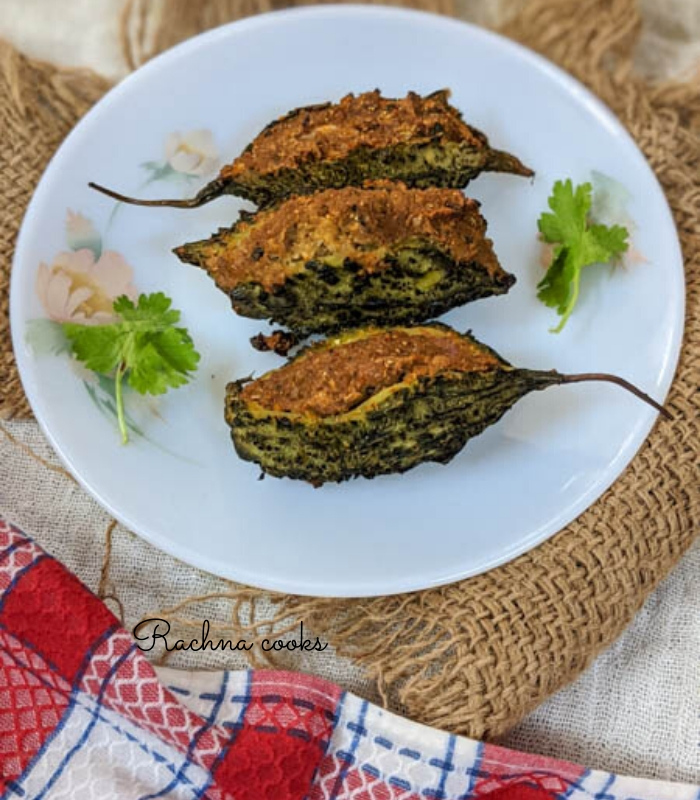
4. Bharwan Bhindi
Okra is kept whole and stuffed with a spice mix to yield a truly crunchy munchy spicy okra that goes so well with rotis.
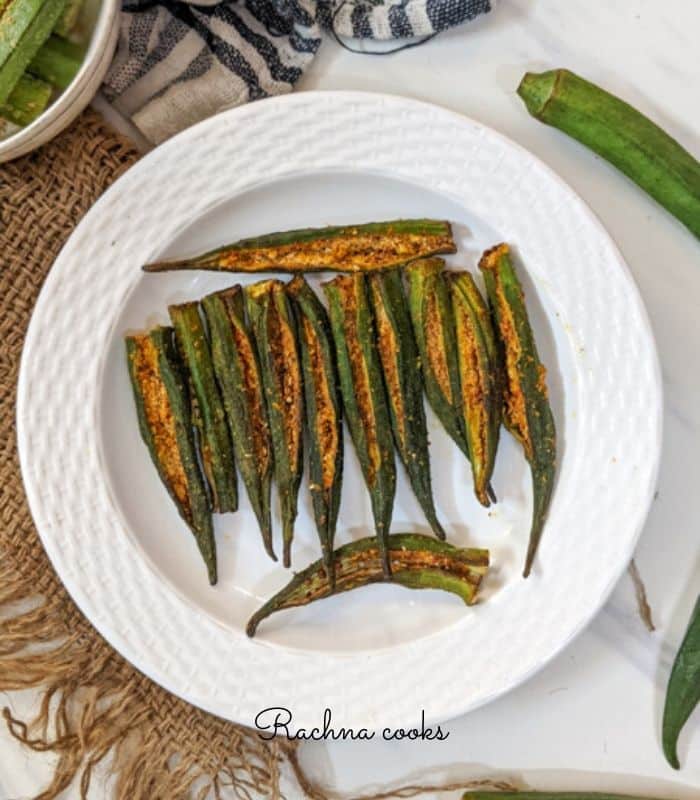
5. Bharwan Tinda
This recipe made with apple gourd is really tasty and very popular too. Try making these tinde in Air fryer for faster cooking and succulent taste.
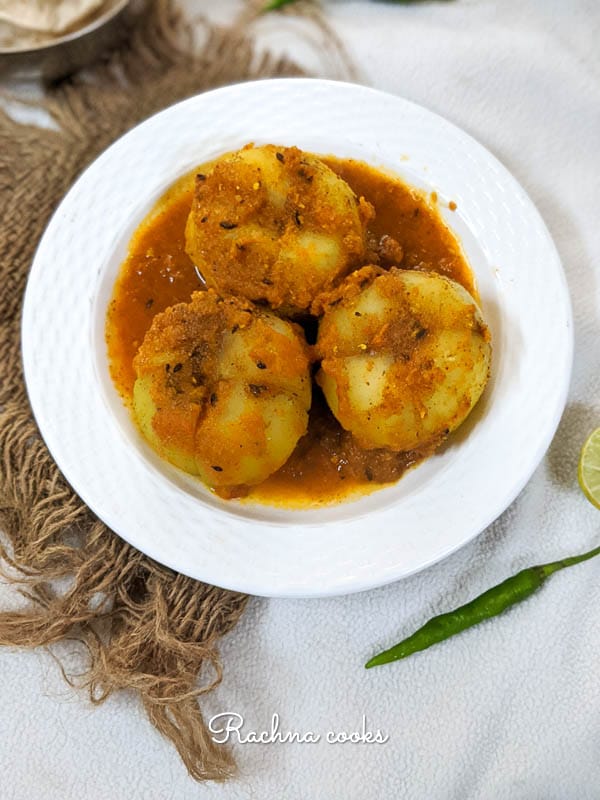
6. Bharwan Capsicum
These Indian style stuffed green peppers turn out superbly crunchy and flavourful in air fryer. Even better than shallow fried in taste.
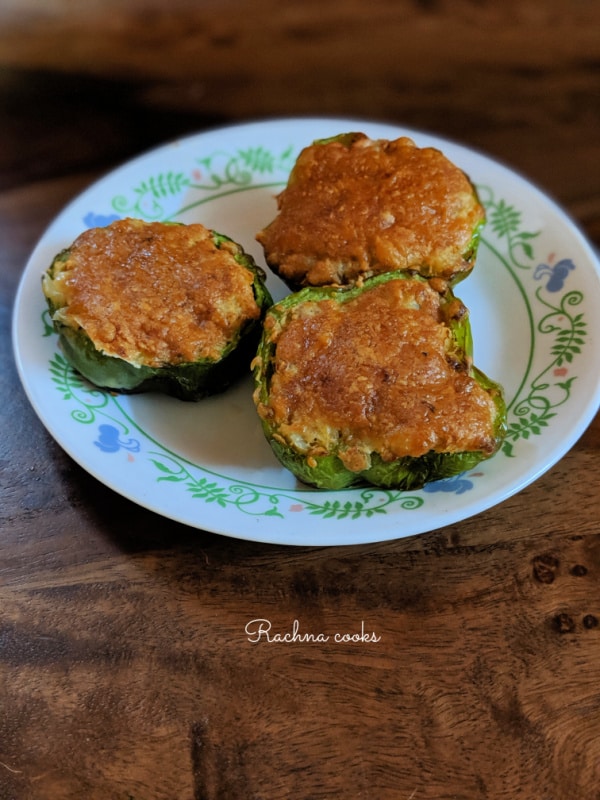
7. Tindora Fry
This ivy gourd comes out crispy and perfectly cooked when made in Air fryer.
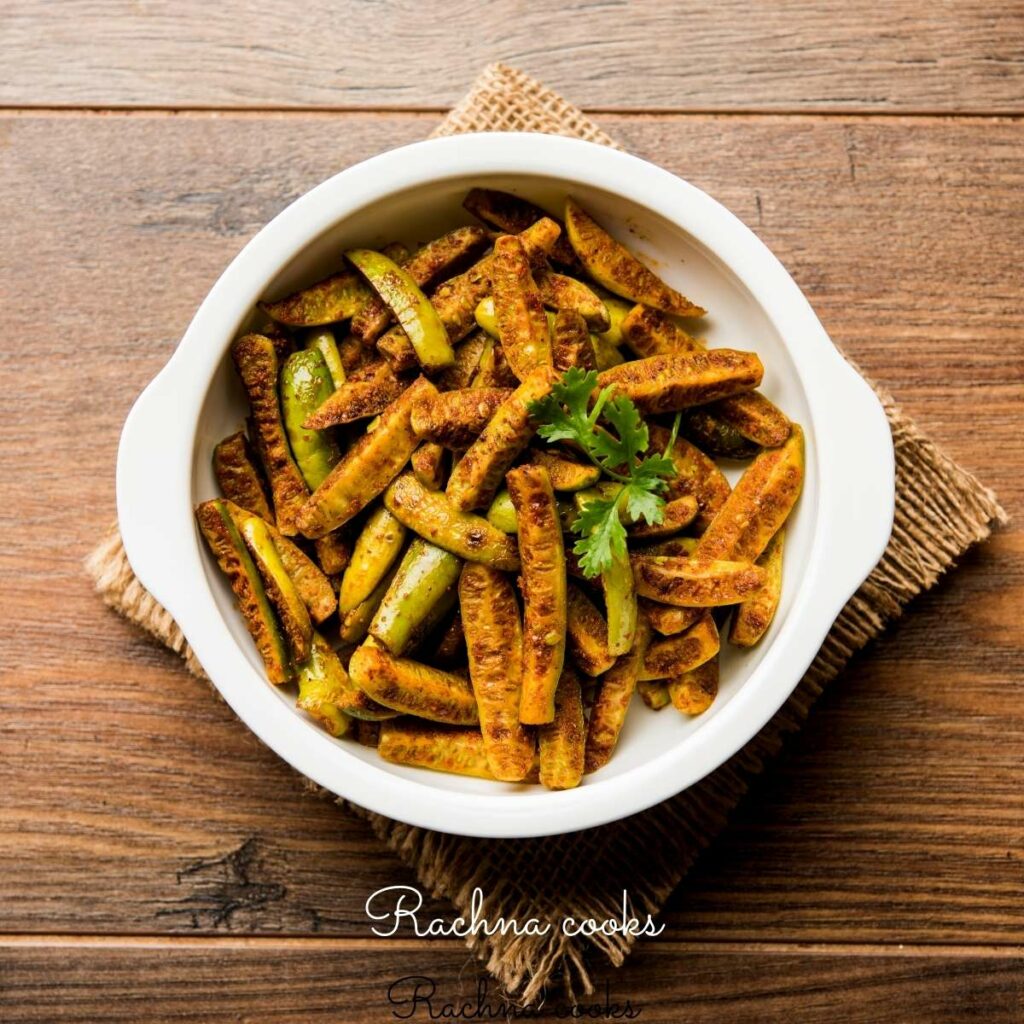
8. Sabudana Khichdi
A very popular Indian breakfast, this delectable khichdi made with tapioca pearls is super healthy and tasty.
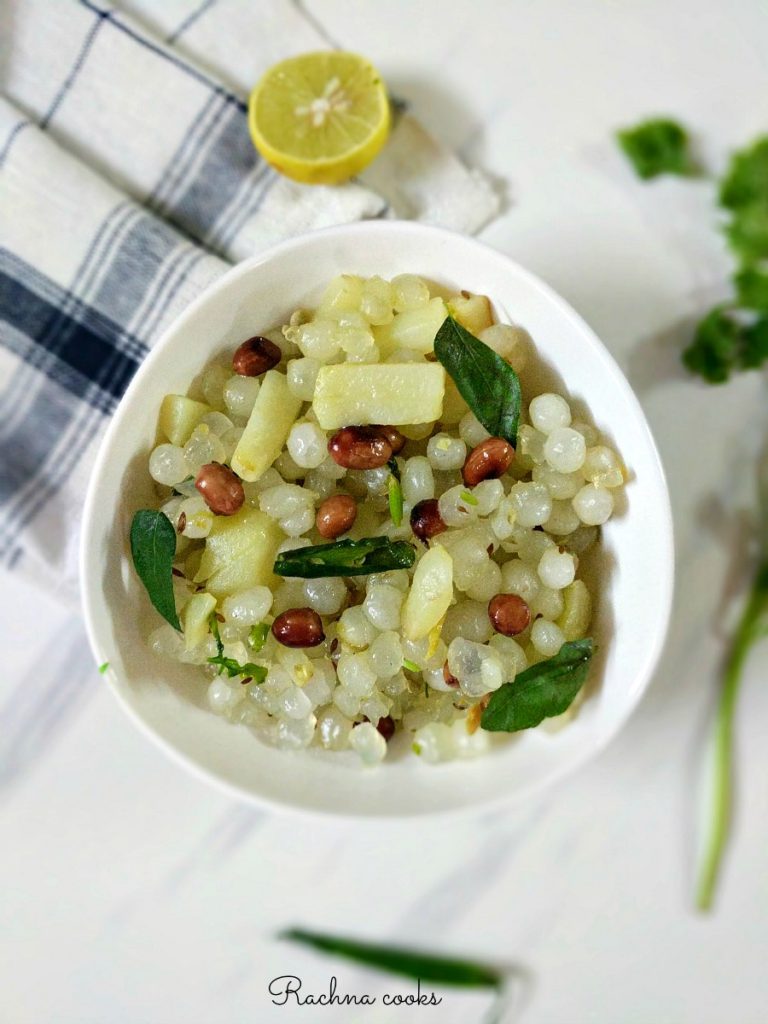
9. Punjabi Kadhi
Made with sour yogurt and chickpea flour dumplings, this Punjabi kadhi is soul food. Cut down the Calories by making the dumplings in Air fryer.
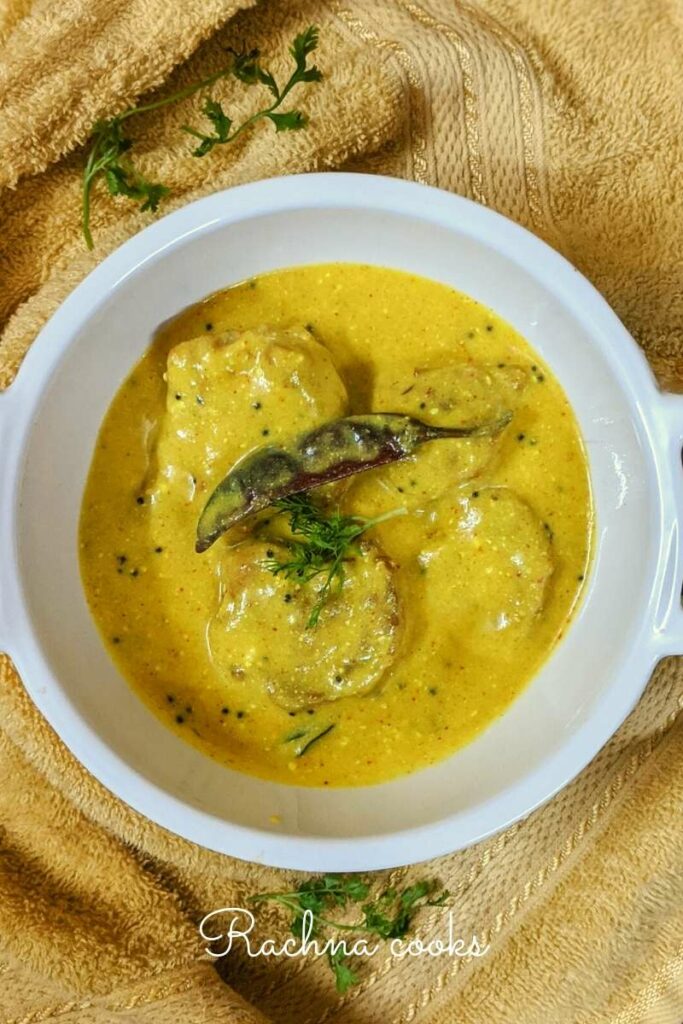
10. Veg Manchurian
This Indo-Chinese curry is a favourite all over India. Make the delicious veg dumplings to perfection in the Air fryer.
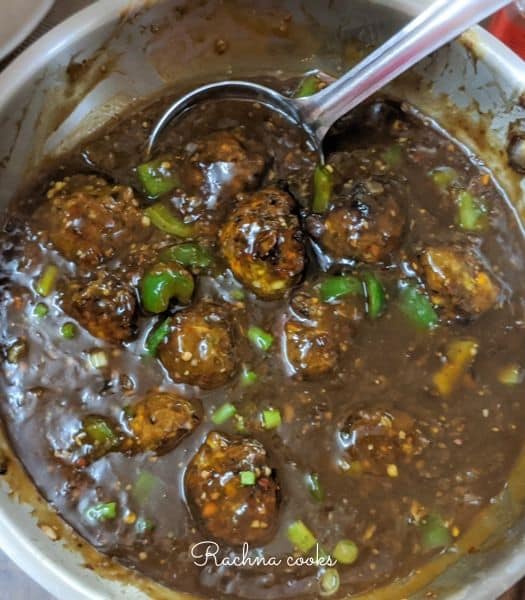
11. Tofu Manchurian
This is a perfect recipe for vegans. Air fried crispy tofu is tossed in a spicy Indo-Chinese Tofu manchurian.
Serve hot with fried rice or noodles.
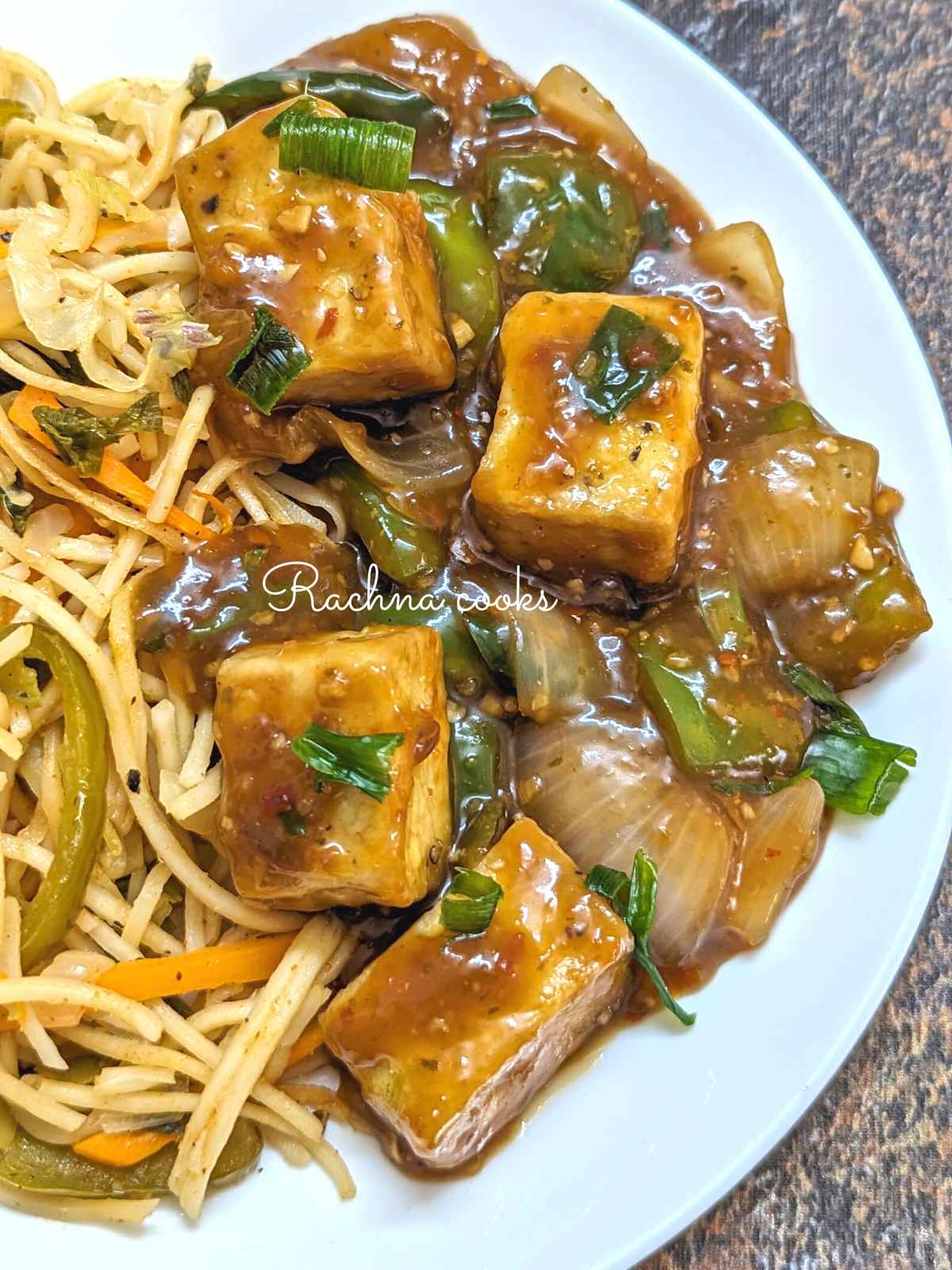
There you have 46 Air fryer vegetarian Indian recipes.
I will keep updating the post with more air fryer Indian recipes as I try out and share more new recipes.
You May Also Like 10 Common Air fryer mistakes that you can avoid
My Philips Air fryer Review
More Air Fryer Indian Recipes
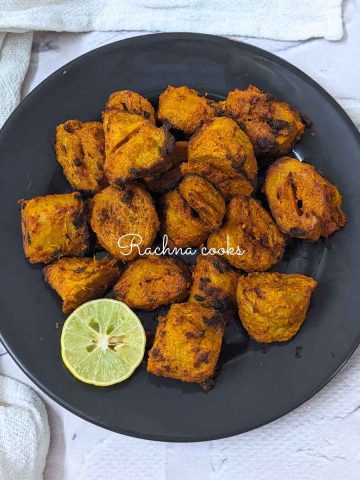
Reader Interactions
Chandra says
March 23, 2021 at 10:13 am
do you sell this book or is it free?
Rachna says
March 23, 2021 at 9:11 pm
This one is a free ebook. I will be writing a more detailed paid one in the coming year. 🙂
Nagesh says
May 29, 2021 at 3:05 pm
Very useful. Can you please include Indian Daal recipes we can make in air fryer ?
June 01, 2021 at 12:58 pm
Sure Nagesh! Glad that you found it useful.
Leave a Reply Cancel reply
Your email address will not be published. Required fields are marked *

The Mynt, Indian restaurant with its masterpiece culinary creations, exemplary hospitality and charismatic ambiance, takes you on a mesmerizing culinary journey through India. The eclectic menu boasts of both traditional and classic favorites, as well as contemporary culinary delights. Acclaimed favorites include Kaffir lime and Mango Bean Sprout Chaat Salad, The Mynt Regal Rack of Lamb, Teen Mirch Sea Bass Tikka , Vegetable Moilee and Shaam Savera Kofta to name just a few. The Mynt also offers a wide selection of hand-picked wines to complement the exhilarating food. A vast collection of gourmet desserts provides a fitting end to a magical meal. Today, The Mynt , with a loyal clientele, its personalized service and vibrant environment, is recognized as one of the finest Indian restaurants in the Bay Area. Special butter chicken, tandoori chicken and indian catering for corporate and weddings.

fresh, authentic, & flavorful Indian food • fast & affordable
Check out our casual, modern space and friendly customer service. We've made it as easy as possible to order great-tasting Indian food, whether you’re enjoying a relaxing meal on our patio, or grabbing take out using our online ordering system.

Top 100 places to eat in the Bay Area
We are proud to be in Yelp’s Top 100 Places to Eat in the Bay Area! Check out the article below!

See us on Destination SF!
Learn more about us and see why you should RUN not walk to enjoy your next meal with us!

Catering orders are subject to a Delivery Fee!
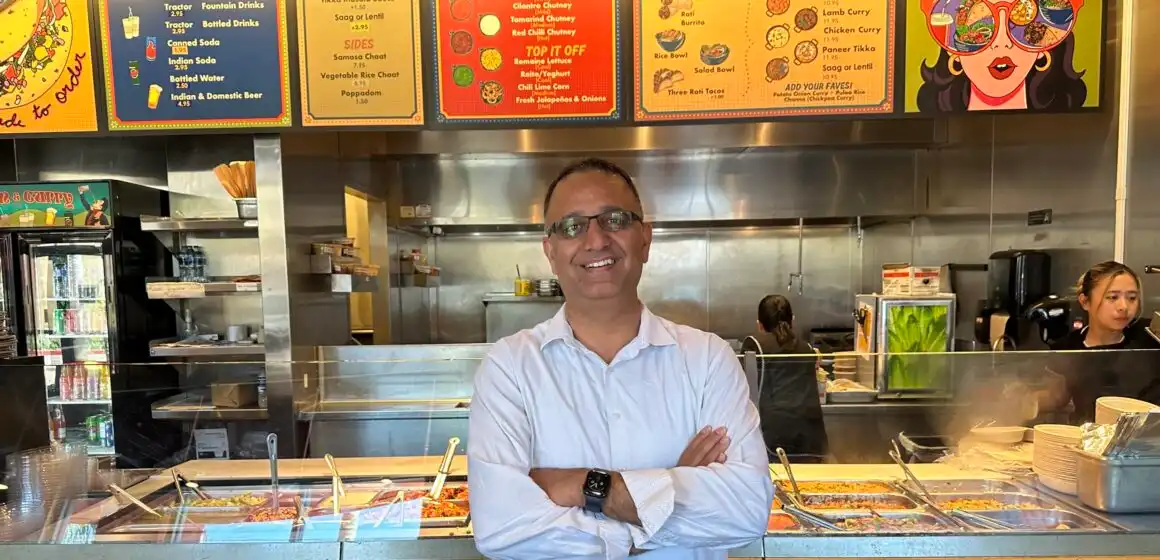
San Jose Spotlight
Sam & Curry was recently featured in The Biz Beat on San Jose Spotlight.
Click here to read the article

You definitely get your veggie fill with a bowl! Loved the different heat levels for sauces. There's definitely a kick on the extra spicy one. Everything was tasty. Great meal. Friendly staff. Clean place. Victoria L.
When I think of traditional Indian food it's either tandoori pizza or AYCE lunch buffet which they are famous for serving generous portion size and Sam & Curry is no exception. Came by this morning and I was greeted by two ladies that were so polite and attentive. Phil I.
We catered with Sam and Curry for a work event. We got rice bowls, samosas and roti. The food was excellent and generous portions. They were easy to work with and responded quickly. Megan K.
I loved their bowls... a good take on Indian food... served chipotle style where you can pick your proteins your SA uses/curries and greens.. food was mild for my taste buds but yet flavorful.. my kids enjoyed the paneer tacos without any curries.. would definitely go again if in the area Kanchan S.
So good! Just tried for the first time and I'll be back. Sauces are great, chicken was good, and it was actually spicy which seems rare. Tons of flavor and a great price! Kelly B.
Sam & Curry Location and Hours
Share this story

- Where to Eat and Drink in Russian Hill
- 14 Actually Worthwhile Places to Eat and Drink on the Embarcadero
- 16 Solid Happy Hours in San Francisco
/cdn.vox-cdn.com/uploads/chorus_image/image/62633289/DSC_6171.13.jpg)
9 Flavorful Indian Restaurants Around the South Bay
Venture beyond butter chicken and explore the decadent side of regional Indian cuisine
- Share this on Facebook
- Share this on Twitter
- Share All sharing options
Share All sharing options for: 9 Flavorful Indian Restaurants Around the South Bay
Like any good urban center, the Bay Area has no dearth of fantastic Indian restaurants. They range from casual to upscale, those with dine-in choices to those strictly geared for take-out. And while the South Bay includes many easily accessible hidden and not-so-hidden gems, many of the region’s best Indian restaurants showcase the complex and varied offerings of flavor-filled and decadent regional Indian cuisine. So whether you crave familiar Indian restaurant fare or dishes that push the envelope, the next time you have a hankering for Indian cuisine, stop in at one of these South Bay Indian restaurants.
Health experts consider dining out to be a high-risk activity for the unvaccinated; it may pose a risk for the vaccinated, especially in areas with substantial COVID transmission.
Ettan opened in 2020 to great fanfare and reviews, including a Michelin nod and acclaim for its social-media worthy, Moorish-inspired ambience . While the restaurant is not yet open for lunch, the brunch and dinner menus offer selections designed to delight those seeking non-traditional Indian cuisine. The menu includes many vegan and gluten-free options and is peppered with gentle nods to Southern India’s many regional homestyle flavors including the heat from Beydgi chilies; the tenderness of a well made mor kulambu; or a kootu, a medley of vegetables and lentils from Southern India — all offering room for inquiry and conversation. If you’re new to these phrases, bringing a friend can help you appreciate these regional Indian flavors more.
- Open in Google Maps
:no_upscale()/cdn.vox-cdn.com/uploads/chorus_image/image/70472221/_PChang_3435.0.jpg)
Also featured in:
/cdn.vox-cdn.com/uploads/chorus_image/image/66221200/2023.08.04_Meyhouse_Pre_Opening_Joseph_Weaver_9821.29.jpg)
19 Fantastic Places to Eat and Drink in Palo Alto
/cdn.vox-cdn.com/uploads/chorus_image/image/70219686/JakobLayman.1221.SeedlipDryJanuary_Whitechapel_007.7.jpeg)
Where to Drink Nonalcoholic Cocktails Around San Francisco
If your heart desires upscale progressive Indian dining, Rooh it is. With multiple locations across the country, the Bay Area boasts two — one in San Francisco and another in Palo Alto. The menu includes familiar dishes like makhani chicken and daal makhani, alongside non-traditional dishes like avocado and green chickpea bhel tostada and tandoori mushroom with a polenta upma. While the Ayurveda-inspired cocktail menu simply borrows rasa concepts without offering substantive guidance to an unsuspecting diner, the buzz-free beverages including teas and tisanes are better suited to provide holistic mind-body-spirit balance. The restaurant is currently operating in limited capacity, so call before your visit.
:no_upscale()/cdn.vox-cdn.com/uploads/chorus_image/image/70472225/Screen_Shot_2020_09_25_at_12.21.07_PM.0.png)
14 Fantastically Flavorful Indian Restaurants in San Francisco
Only the best chefs can boast a tenure at multiple locations of the Taj Group of Hotels, India’s ultimate luxury hospitality group, and Aurum chef Manish Tyagi is among them. Having honed his skills at many top-notch establishments across the country, Tyagi now calls Palo Alto home, and the city is lucky to have his playful yet on-point cuisine. Aurum showcases the diversity of regional India, enriching the dining experience with options like crab varuval, a fried crab dish from the Chettinad region; pithi, a bread from Bihar; and rajathani laal maas, lamb cooked with the regionally preferred Mathania chiles. Go hungry and save room for ghevar, a decadent dessert from Rajasthan.
View this post on Instagram A post shared by Aurum | Indian Restaurant (@aurumlosaltos)
Amber India
A Bay Area institution for decades with several locations around the region, Amber offers a selection of flavor-rich dishes from across India. Classic and familiar dishes from the a la carte menu include Ambers’ signature butter chicken, Peshawari chicken tikka, green pepper lamb curry, and pindi choley, which reside comfortably alongside less common options like olive chicken seekh, wild mushroom biryani, and rum daar boti. The restaurant’s dessert selection satisfies the sweet tooth; enjoy the moong daal halwa while dining in, and pack decadent mithai treats for later. There is truly something for everyone. A variety of dining options are available.
View this post on Instagram A post shared by Amber India Restaurants (@amberindiarestaurants)
Zareen's Mountain View
Another restaurant with multiple locations in the Bay Area, Zareen’s is great if you’ve never had Indian food before. Since its opening in 2014, this restaurant remains easy on the pocketbook even after being included in the 2020 Michelin Guide. Zareen’s menu includes many options including a pre-fixe thali, traditional a la carte Indian meals, as well as Indian flavors in burgers. The flavor-packed dishes are mostly from Northern India and Pakistan. They have a robust capacity to cater to corporate clients, and with a casual ambiance, keep the ‘Indian college canteen’ feel.
:no_upscale()/cdn.vox-cdn.com/uploads/chorus_image/image/70472232/samosa.0.jpeg)
Chaat House
A simple establishment with multiple locations across the Bay Area, Chaat House offers another selection of quick and delightful snacks. Stop in to sample one of many griddle fried breads stuffed with radish greens, paneer, or onions; the seasonal makkai roti made with corn; and sarsoon saag made with mustard greens. The restaurant also offers a pre-fixe style thali to make easy work of picking through the large menu.
:no_upscale()/cdn.vox-cdn.com/uploads/chorus_image/image/70472234/chaat_house.0.jpeg)
Where to Find the Best Halal Dining in Orlando
/cdn.vox-cdn.com/uploads/chorus_image/image/67456160/New_Dehli_pani_puri_2.0.jpg)
6 Must-Visit Chaat Spots in Sunnyvale
Sign up for the newsletter Eater SF
Sign up for our newsletter.
Thanks for signing up!
Check your inbox for a welcome email.
Oops. Something went wrong. Please enter a valid email and try again.
Radhe Chaat
Another small establishment, Radhe Chaat offers a large selection of snacks, along with many staple entrees from Western India. This vegetarian restaurant serves many classic eats from Gujarat including griddle-fried thepla; daal dhokli, daal with wheat noodles; as well as jowar bhakri, a rustic griddle-fried and gluten-free bread made from sorghum flour. plus Kutchi dabeli. If picking a dish or two proves difficult, the restaurant also offers several pre-fixe Thali options — large sampler-like platter with smaller servings of six to eight different dishes, served together as a meal.
:no_upscale()/cdn.vox-cdn.com/uploads/chorus_image/image/70472235/pani_poori.0.jpeg)
Set in an office park complex with an innocuous storefront, Puranpoli delivers flavorful and robust eats from Western India. Two siblings, Roshan and Sheetal, bring the best flavors of heartwarming Maharashtrian comfort foods for an unforgettable feast. As a vegetarian restaurant, Puranpoli offers plenty of choices for diners with dietary restrictions. Plan to include bharli vangi, or stuffed baby eggplants in a rich tamarind-peanut sauce; zunka-bhakar, a classic pairing of rice flour bread with an entree of seasoned steamed chickpea flour; modak, traditional rice dumplings filled with a jaggery-coconut stuffing; and of course, puranpoli, a griddle-fried, stuffed sweet bread. Pick up a side of thecha, a condiment that can perk up any meal. Takeout only.
:no_upscale()/cdn.vox-cdn.com/uploads/chorus_image/image/70472236/puranpoli.0.jpg)
10 Must-Try Restaurants in the San Jose Area
/cdn.vox-cdn.com/uploads/chorus_image/image/71225693/puranpoli.0.jpg)
13 Knockout Vegan and Vegetarian Restaurants in San Jose and the South Bay
Anjappar Chettinad Indian Restaurant
This international restaurant chain, with one location in a shopping mall in Milpitas and another in Santa Clara, serves classic dishes from the Chettinad region of India. While its menu includes dishes from both Northern and Southern India, stop in to sample steamed rice preparations like aapam and idiyappam with your choice of protein; king fish; ceylon porota, an Indian dish with Sri Lankan influence; ennai kathirikkai, or eggplants cooked in sesame oil; and poondu kuzhambu, a side dish made exclusively with garlic cloves. With branches across South East Asia, they have a large selection of Indo-Chinese dishes as well.
View this post on Instagram A post shared by Anjappar Chettinad (@anjapparchettinadofficial)
/cdn.vox-cdn.com/uploads/chorus_image/image/71416041/Cheeni_8_copy.7.jpg)
18 Standout Indian Restaurants in the Triangle
/cdn.vox-cdn.com/uploads/chorus_image/image/72253603/IMG_7966.0.jpg)
The Ultimate Guide to Indian Restaurants in Artesia
More in Maps
Related maps, follow eater sf online:.
- Follow Eater SF on Twitter
- Follow Eater SF on Facebook
- Follow Eater SF on Youtube
- Follow Eater SF on Instagram
Site search
- Los Angeles
- New Orleans
- Philadelphia
- Portland, OR
- San Francisco
- Twin Cities
- Washington DC
- Neighborhoods
- Countries and Their Cultures
- Asian Indian Americans
Asian indian americans
by Tinaz Pavri
India, the most populous country in South Asia, is a peninsula. Bounded by Nepal and the Himalaya mountains to the north, Pakistan to the northwest, the Indian Ocean to the south, the Arabian Sea to the west, and the Bay of Bengal to the east, India occupies about 1,560,000 square miles.
Second in population only to China, India is home to around 900 million people of diverse ethnicity, religion, and language. About 82 percent of all Indians are Hindus. Approximately 12 percent are Muslims, while smaller minorities include Christians, Sikhs, Buddhists, Jains, and Zoroastrians. While official Indian languages include Hindi, which is spoken by about 30 percent of the population, and English, hundreds of dialects are also spoken in India.
India's capital is the modern city of New Delhi in northern India, and its flag is the "tricolor," which boasts three equal stripes of orange, white, and green. The white stripe is in the middle, and has at its center a wheel or chakra. This chakra originates from a design that appears in a temple in Ashoka. It was popularized by its use on Mohandas Gandhi's political party flag during the Indian independence movement.
One of the world's oldest civilizations, the Indus Valley civilization (2500-1700 B.C.), flourished across present-day India, Bangladesh, and Pakistan. Dravidians comprised India's earliest ethnic group. They gradually moved south as migrating Aryan tribes entered the region. These tribes established many empires, including the Nanda and Gupta kingdoms in northern India. Alexander the Great invaded northern India in the fourth century B.C.
The Islamic presence in southern India occurred around the eighth century A.D., via sailors from establishments in Kerala and Tamilnadu. Furthermore, about the tenth century A.D. Islamic raiders began their invasions of India. The earliest invaders were the Turks, followed by members of the Moghuls Dynasty in about 1500 A.D. The Moghul Dynasty established a thriving empire in North India. These Muslim invasions resulted in the conversion of a section of the populace to Islam, establishing forever a significant Muslim society in India.
By 1600 the British established a presence in India through the East India Company, a trading company that exported raw materials like spices out of India to the West. Britain then strengthened its hold over its Indian colony by installing a parliament, courts, and bureaucracy. Several independent Hindu and Muslim kingdoms, however, continued to exist within the broader framework of British rule. The British army existed to maintain internal order and control uprisings against the colonizing government by the Indian people.
In 1885 the British sanctioned the formation of the Indian National Congress, of which an offshoot, the Congress party, remains one of India's most important political parties. The British hoped that this political party would serve to quell growing resistance to British rule by co-opting some of India's most politically aware and educated individuals into working within the bounds of British rule. Instead, the Indian National Congress became the vehicle through which Indians coordinated their struggle for freedom from British rule. An indigenous independence movement spearheaded by men like Mahatma Gandhi and Jawaharlal Nehru—later free India's first prime minister—gained strength in the early twentieth century.
India's movement for independence was marked by nonviolence as hundreds of thousands of Indians responded to Mahatma Gandhi's call for satyagraha, which means to be steadfast in truth. Satyagraha involved nonviolent protest through passive noncooperation with the British at every level. Indians simply refused to participate in any activity over which there was British supervision, thus making it impossible for the British to continue to govern India.
Britain formally relinquished its hold over India in 1947, and two sovereign countries, India and Pakistan, were created out of British India. The partition was a result of irreconcilable differences between Hindu and Muslim leadership. It was decided that India was the land of the Hindus and Pakistan would be the land of the Muslims. Modern India, however, is a secular nation.
Nehru and his political party, the Congress, remained in power until his death in 1964. Leaving a lasting legacy, Nehru molded independent India's economy, society, and polity. Lal Bahadur Shastri became India's second prime minister, and upon his death was succeeded by Nehru's daughter Indira Gandhi, who remained in power until 1977 when, for the first time, the Congress lost in parliamentary elections to the opposition Janata party. Indira's loss was largely due to the increasingly authoritarian tactics she had adopted before she was voted out of power. Morarji Desai, the leader of the Janata party, then became India's fourth prime minister.
Indira Gandhi and the Congress were returned to power in 1980, and upon her assassination in 1984, her son, Rajiv Gandhi, was elected prime minister. In 1994 the Congress, with Narasimha Rao as the prime minister, is once again in office, and is instituting unprecedented and far-reaching economic reforms in the country. The Rao government has succeeded in some measure in dismantling the old Nehruvian, socialist-style restrictions on the economy and on private industry. Today, India's exports have increased significantly, its foreign exchange reserves are at their highest levels in decades, and the economy appears robust.
Economic liberalization, however, has caused widening discrepancies between the wealthy and the poor in India. Moreover, a rising tide of religious fundamentalism and intolerance in recent years are threatening India's otherwise promising future. For the first time in decades, a powerful political party, the Bharatiya Janata Party (Bharateeyah Juntah) or the Indian People's Party, has challenged the prevalent belief in and acceptance of India's secularism, maintaining instead that India is a Hindu state. The party has found widespread support in some areas of India and in some sections of the Asian Indian community in the United States and Europe. Thus far, however, the government has functioned within the parameters of India's democratic institutions.
THE FIRST ASIAN INDIANS IN AMERICA
In many accounts, immigrants to the United States from India, Pakistan, and Bangladesh are referred to as Asian Indians. The first Asian Indians or Indian Americans, as they are also known, arrived in America as early as the middle of the nineteenth century. By the end of the nineteenth century, about 2,000 Indians, most of them Sikhs (a religious minority from India's Punjab region), settled on the west coast of the United States, having come in search of economic opportunity. The majority of Sikhs worked in agriculture and construction. Other Asian Indians came as merchants and traders; many worked in lumber mills and logging camps in the western states of Oregon, Washington, and California, where they rented bunkhouses, acquired knowledge of English, and assumed Western dress. Most of the Sikhs, however, refused to cut their hair or beards or forsake the wearing of the turbans that their religion required. In 1907 about 2,000 Indians, alongside other immigrants from China, Japan, Korea, Norway, and Italy worked on the building of the Western Pacific Railway in California. Other Indians helped build bridges and tunnels for California's other railroad projects.
Between 1910 and 1920, as agricultural work in California began to become more abundant and better paying, many Indian immigrants turned to the fields and orchards for employment. For many of the immigrants who had come from villages in rural India, farming was both familiar and preferable. There is evidence that Indians began to bargain, often successfully, for better wages during this time. Some Indians eventually settled permanently in the California valleys where they worked. Despite the 1913 Alien Land Law, enacted by the California legislature to discourage Japanese immigrants from purchasing land, many Asian Indians bought land as well; by 1920 Asian Indians owned 38,000 acres in California's Imperial Valley and 85,000 acres in the Sacramento Valley. Because there was virtually no immigration by Indian women during this time, it was not unheard of for Indian males to marry Mexican women and raise families.
At the beginning of the twentieth century, about 100 Indian students also studied in universities across America. During the summers, it was not uncommon for Indian students in California to work in the fields and orchards alongside their countrymen. A small group of Indian immigrants also came to America as political refugees from British rule. To them, the United States seemed the ideal place for their revolutionary activities. In fact, many of these revolutionaries returned to India in the early part of the twentieth century to assume important roles in the struggle for India's independence.
The turn of the century also saw increasing violence against Asian Indians in the western states. Expulsions of Indians from the communities in which they worked were occasionally organized by other Euro-American workers. Some Indians who had migrated for economic reasons returned to India after they had saved respectable sums of money in America; others stayed, putting down roots in the West. The immigration of Indians to America was tightly controlled by the American government during this time, and Indians applying for visas to travel to the United States were often rejected by U.S. diplomats in major Indian cities like Bombay and Calcutta. The Asiatic Exclusion League (AEL) was organized in 1907 to encourage the expulsion of Asian workers, including Indians. In addition, several pieces of legislation were introduced in the United States, specifically the congressional exclusion laws of 1917 and 1923, that attempted either to restrict the entry of Indians and other Asians or to deny them residence and citizenship rights in America. Some of these were defeated while others were adopted. For instance, a literacy clause was added to a number of bills, requiring that immigrants pass a literacy test to be considered eligible for citizenship, thus effectively barring many Indians from consideration for citizenship.
SIGNIFICANT IMMIGRATION WAVES
In July 1946, Congress passed a bill allowing naturalization for Indians and, in 1957, the first Asian Indian senator, Dalip Saund, was elected to Congress. Like many early Indian immigrants, Saund came to the United States from Punjab and had worked in the fields and farms of California. He had also earned a doctorate at the University of California, Berkeley. While more educated and professional Indians began to enter America, immigration restrictions and tight quotas ensured that only small numbers of Indians entered the country prior to 1965. Overall, approximately 6,000 Asian Indians immigrated to the United States between 1947 and 1965.
From 1965 onward, a second significant wave of Indian immigration began, spurred by a change in U.S. immigration law that lifted prior quotas and restrictions and allowed significant numbers of Asians to immigrate. Between 1965 and 1974, Indian immigration to the United States increased at a rate greater than that from almost any other country. This wave of immigrants was very different from the earliest Indian immigrants—Indians that emigrated after 1965 were overwhelmingly urban, professional, and highly educated and quickly engaged in gainful employment in many U.S. cities. Many had prior exposure to Western society and education and their transition to the United States was therefore relatively smooth. More than 100,000 such professionals and their families entered the U.S. in the decade after 1965.
Almost 40 percent of all Indian immigrants who entered the United States in the decades after 1965 arrived on student or exchange visitor visas, in some cases with their spouses and dependents. Most of the students pursued graduate degrees in a variety of disciplines. They were often able to find promising jobs and prosper economically, and many became permanent residents and then citizens.
SETTLEMENT PATTERNS
The 1990 U.S. census reports 570,000 Asian Indians in America. About 32 percent are settled in the Northeast, 26 percent in the South, 23 percent in the West, and 19 percent in the midwestern states. New York, California, and New Jersey are the three states with the highest concentrations of Asian Indians. In California, where the first Indian immigrants arrived, the cities of San Francisco and Los Angeles are home to the oldest established Asian Indian communities in the United States.
In general, the Asian Indian community has preferred to settle in the larger American cities rather than smaller towns, especially in New York City, Los Angeles, San Francisco, and Chicago. This appears to be a reflection of both the availability of jobs in larger cities, and the personal preference of being a part of an urban, ethnically diverse environment, one which is evocative of the Indian cities that many of the post-1965 immigrants came from. Still, there are sizeable Asian Indian communities in suburban areas, including Silver Springs (Maryland), San Jose and Fremont (California), and Queens (New York).
Acculturation and Assimilation
Asian Indians have quietly permeated many segments of the American economy and society while still retaining their Indian culture. Most Asian Indian families strive to preserve traditional Indian values and transmit these to their children. Offspring are encouraged to marry within the community and maintain their Indian heritage. The occupational profile presented by the Asian Indian community today is one of increasing diversity. Although a large number of Asian Indians are professionals, others own small businesses or are employed as semi- or nonskilled workers. Asian Indian are sometimes stereotyped in American society as industrious, prosperous, and professionally and educationally advanced.
The Asian Indian community in the United States is an ethnically diverse one. One can distinguish among subgroups who trace their roots to different regions or states within India, who speak different languages, eat different foods, and follow distinct customs. Some of the most populous Indian groups within the United States are Gujaratis, Bengalis, Punjabis, Marathis, and Tamils. They come from a number of the Indian states, or regions, each of which has its own language. It is more likely that these subgroups will interact socially and celebrate important occasions with members of their own subcommunity rather than the larger Indian community. Indians are also encouraged to marry within their subgroups. However, there are occasions, like the celebration of India's day of independence, when the Asian Indian community will come together.
The majority of Asian Indian Americans have retained diets rooted in Indian cuisine. Indian food is prepared with a variety of spices, including cumin, turmeric, chili powder, ginger, and garlic. All Asian Indians eat a variety of dals (lentils), beans, and chaval (rice) dishes. Hindus generally will not eat beef for religious reasons, while Muslims eschew pork. Second-generation Asian Indians are more likely to ignore these religious taboos. (italicized terms are in Hindi, and are not recognized in South India)
Tandoori, clay-baked chicken or fish marinated in yogurt and spices, is a popular North Indian dish. Biryani, or flavored rice with vegetables and meats, is served on festive occasions, often accompanied by a cooling yogurt sauce called raita (rye-tah). Southern Indian dishes like masala, dosai crepes filled with spiced potatoes or idlis (idlees), and steamed rice cakes, are also popular. Indian cuisine is largely dependent on the region of India from which a subcommunity traces its roots. Caste also plays a role.
Green chutneys made of mint or coriander accompany a variety of savory fritters like the triangular, stuffed samosas. Pickled vegetables and fruits like lemons or mangoes are popular accompaniments to meals. A variety of unleavened breads like naans, rotis (roetees), and parathas are also widely eaten. Finally, "sweetmeats" like halva and burfi can often round off a festive meal.
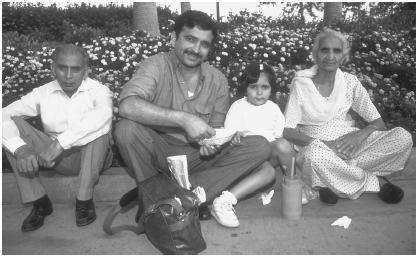
TRADITIONAL COSTUMES AND ACCESSORIES
Many Asian Indian women wear the sari—yards of colorful embroidered or printed silk or cotton wrapped around the body—at community functions and celebrations like weddings. At such occasions, both men and women might also wear the kameez or kurta , also made of silk or fine cotton, a long shirt worn over tight-fitting leggings. Shawls made of silk or wool and elaborately embroidered or woven with gold or silver threads or beads and draped around the shoulders are an added touch to women's costumes. Women might wear a bindi, or ornamental dot, which sometimes indicates they are married, but is also worn as a fashion accessory on their foreheads at celebrations.
Indians are very fond of gold jewelry, and many women wear simple gold ornaments like rings, earrings, bangles, and necklaces daily, and more elaborate ones at special occasions. Jewelry is often passed down through the generations from mother to daughter or daughter-in-law.
DANCES AND MUSIC
Asian Indian preferences in music range from Indian classical music, which might include instruments such as the stringed sitar, the tabla, or drums, and the harmonium, to popular music from Indian films and the West. Indian classical music dates back several thousand years and gained a wider audience after India's independence. Indian film music, often a fusion of Indian and Western rock or pop music, also has a widespread following both in India and within the community in the United States.
Carnatic music, the classical music of south India, commonly employs such musical instruments as the veena, a stringed instrument, and a range of violins. Carnatic music usually accompanies Bharata Natyam, a classical dance in which dancers perform portions of mythological tales, emulating ancient temple carvings of men and women with their body, hand, and eye movements.
Indian folk dances like the exuberant Bhangra from the Punjab region are popular at celebratory gatherings of the community. In this dance, dancers throw their arms in the air and simulate the actions of the farmer at work with his sickle. Traditional Bhangra music is increasingly being fused with elements of hip-hop, rap, and reggae, and bands like Alaap or Toronto's Dhamak are popular with younger members of the community.
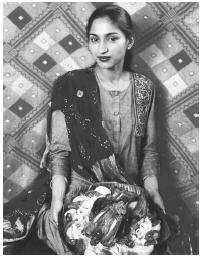
HOLIDAYS AND CELEBRATIONS
In addition to universal celebrations like International New Year's Day, Asian Indians celebrate India's day of independence from the British on August 15 and Republic Day on January 26. Many religious celebrations are also observed, the most important being Diwali (deevalee), the festival of lights celebrating the return home of the Lord Rama, and Holi (hoelee), the Hindu festival of colors celebrating spring. On these days, sweets are distributed among friends and family. Oil lamps, or diyas, are lit on Diwali. The community often organizes a traditional dinner with entertainment to mark the holiday. Major festivals for Muslims include Eid-ul-Fitr, which marks the end of Ramadan, the month of fasting. It is celebrated with prayers and visits with friends. Asian-Indian Christians celebrate Christmas and Easter. The Navaratri ( nava meaning "nine" and ratri meaning "night/s") is one of the most famous and popular festivals in India and is the major festival for diaspora Indians. Tens of thousands of Gujaratis dance the garbha during this Fall celebration.
PHYSICAL AND MENTAL HEALTH ISSUES
Most Asian Indians accept the role of modern medicine and pay careful attention to health matters. Ayurvedic medicine has many adherents within the community. Ayurveda emphasizes spiritual healing as an essential component of physical healing and bases its cures on herbs and natural ingredients such as raw garlic and ginger. Ayurveda also focuses on preventive healing. One of its most famous proponents is Deepak Chopra, an India-born doctor whose book Ageless Body, Timeless Mind makes a case for the practice of Ayurveda and has sold over a million copies in the United States. Homeopathic medicine also has adherents among the community.
Some members of the Asian Indian American community practice yoga. The ancient practice of Yoga dates back several thousand years. It combines a routine of exercise and meditation to maintain the balance between body and mind. Practiced correctly, Yoga is said to enable the individual to relieve him or herself of daily stresses and strains and to achieve his or her full potential as a human being. Various asanas or poses are held by the individual in practicing Yoga.
Asian Indians are less inclined to seek out assistance for mental health problems than they are for physical health problems. This relates to the low levels of consciousness about, and prevailing stigmas attached to mental health issues in India. The traditional Indian belief has been that mental problems will eventually take care of themselves, and that the family rather than outside experts should take care of the mentally ill. This attitude might change as prevailing societal beliefs about mental health are assimilated by the community.
India is a multi-lingual country with over 300 dialects. About 24 of these dialects are spoken by over a million people. This diversity is reflected in the Asian Indian community in America. First-generation Indians continue to speak their native language within the family—with spouses, members of the extended family, and friends within the community. Most also speak English fluently, which has made the transition to American society easier for many Indian immigrants.
Regional differences are prevalent. Hindi is spoken mostly by immigrants from northern India, and is generally not spoken by South Indians. Immigrants from the states of southern India speak regional languages like Tamil, Telegu, or Malayalam. A substantial number of immigrants from western India, particularly those from the state of Gujarat, continue to speak Gujarati, while those from the region of Bengal speak Bengali. Most second- and third-generation Asian Indians understand the language spoken by their parents and extended family, but tend not to speak it themselves. Many Indians are multilingual and speak several Indian languages. Thus, a Gujarati speaker is likely to know Hindi as well.
GREETINGS AND OTHER POPULAR EXPRESSIONS
Common Asian Indian greetings tend to be in Hindi or Hindustani, and include such greetings as Namaste (Namastay), the equivalent of "hello." This greeting is usually accompanied by the palms of one's hands pressed together against the chest among some North Indians. Aap kaise hai is the equivalent of the universal query "How are you?" Theek (fine) is the response. For Muslims, the traditional Islamic greetings of inshallah ("insha-allah")—God willing, or Salaam Aleikum ("sullahm allaykum")—God be with you, are the most common.
Family and Community Dynamics
For the most part, Asian Indians tend to live in nuclear families in the United States, although it is common for members of the extended family, particularly grandparents, to visit for months at a time. It has also been fairly common, particularly from 1965 on, for Asian Indians to encourage their siblings to emigrate from India, and to provide them with financial and emotional support until they are well settled in the United States. Family ties are very strong, and it is considered the responsibility of more prosperous members to look after their less well-to-do relatives. Relatively low percentages of Asian Indian families receive public assistance. This is due to both relative affluence in the community and the tendency for extended family members to provide financial support in times of need.
Dating is not a traditional Indian custom, and Asian Indian parents tend to frown upon the practice, although they are slowly yielding to their offspring's demands to be allowed to date. The preference is still for the selection of a marriage partner from within the subgroup of the larger community and with the full approval and consent of the parents. Family or community members are often involved in the selection of a suitable mate. The family and educational backgrounds of the potential partner are thoroughly examined before introductions are made. Asian Indians believe that their children will be happier if they are married to someone who shares the same history, tradition, religion, and social customs and who will be able to impart these values to their children, thus ensuring the continuity of the community. They believe that such marriages made within the community tend to be more stable and longer lasting than those that cross community borders.
Asian Indians value education highly. A great percentage of all Asian Americans attend college for a minimum of four years. This percentage is much higher than any other ethnic group in America. Many also attend graduate school and pursue such professions as medicine, business administration, and law.
Asian Indian women have made great progress in recent years in both India and the United States. In India Indira Gandhi once held the highest seat in government—that of the prime minister. In the United States, while many women continue to perform the traditional household tasks of cooking and caring for children, a greater number of Asian Indian women, particularly second- and third-generation women, are pursuing their own professional careers and life choices.
Weddings in the North Indian community are often elaborate affairs, sometimes stretching over several days. In traditional Hindu ceremonies the bride and groom exchange garlands of flowers and circle a ceremonial fire three to seven times. The bride often wears a red sari and gold ornaments. She might also have her hands and feet painted in intricate designs with henna, a tradition called mehendi. The groom might wear the traditional North Indian dress of a churidar kameez, or tight leggings made of silk or fine cotton, and a long shirt, or opt for a western-style suit. A Brahman priest conducts the ceremony.
Dancing and music is fairly common at Indian American weddings, a result of the assimilation of American customs. Some weddings might include shehnai music, or a thin, wailing music played on an oboe-like instrument. This music is traditionally played at Hindu weddings in India. Feasts of traditional foods are prepared for guests and traditional Hindu or Muslim rites are observed. Often, family members prepare the feast themselves, although it is increasingly common to engage professional caterers.
Asian Indian families can expect a lot of community support upon the death of a family member. Members of the community provide both comfort and material help in times of bereavement. After priests offer prayers, the Hindu dead are cremated. In India the cremation traditionally takes place on a wooden pyre and the body, which is often dressed in gold-ornamented clothing, burns over several hours. This is in contrast to electric cremation in the United States. Garlands of flowers, incense sticks, and ghee (purified melted butter) are placed on the stretcher along with the body. In India as well as in the United States, it is traditional for the males of the family play the primary roles in the final rites; women play smaller roles during this ceremony. Asian Indian Muslims are buried in cemeteries according to Islamic tradition and Christians in accordance with Christian beliefs.
The earliest Hindu mandir, or temple, the "old temple," existed in San Francisco as early as 1920, but in general the religious needs of Hindu Asian Indians prior to the 1950s were served mainly through ethnic and community organizations like the Hindu Society of India. Since the 1950s, Hindu and Sikh temples have increasingly been built for worship in cities with high concentrations of Asian Indians like New York, Los Angeles, and Chicago, while Asian Muslims worship at mosques and Christians at existing churches. There are now more than a hundred places of worship for Asian Indians around the United States.
All Hindus, regardless of their regional differences and the particular gods they worship, tend to worship at available temples. While Hindus are functionally polytheistic, they are philosophically monotheist. Brahman priests typically lead the service and recite from the scriptures. Services can be conducted in either Sanskrit, Hindi, or the regional languages. Poojas, or religious ceremonies that celebrate auspicious occasions like the birth of a child, are also performed by the priests. While some priests serve full time, others might have a second occupation in addition to performing priestly duties.
While some Asian Indians visit temples regularly, others limit their visits to important religious occasions. Since Hinduism tends to be less formally organized than other religions like Christianity, prayer meetings can also be conducted at individuals' homes. It is also quite common for Asian Indian homes to have a small room or a part of a room reserved for prayer and meditation. Such household shrines are central to a family's religious life.
Many Asian Indians practice Islam, meaning "submission to God." Similar to Christianity, followers of Islam believe in the prophet Muhammad, who was ordered by the angel Gabriel in 610 A.D. to spread God's message. Muhammad recorded the angel's revelations in the Koran, the Muslim holy book. There are five requirements, or Pillars, of Islam: (1) Confession that there is "no god but God" and Muhammad is the messenger of God; (2) Pray five times daily; (3) Giving of alms; (4) Fasting in daylight hours for the Muhammadan month of Ramadan; and (5) Pilgrimage to Mecca at least once in a lifetime. While Muslims regard the message of Islam as eternal and universal, their individual lives have demonstrated a variety of orientations toward traditional and popular patterns.
The Asian Indian community in America also includes small numbers of Buddhists, followers of Gautama Buddha, and Jains, followers of Mahavira. The most unique feature of the Jain religion, which was founded in the sixth century B.C., is its belief in the doctrine of ahimsa, or nonviolence. This belief leads Jains to practice strict vegetarianism, since they cannot condone the killing of animals. The Jains in the United States have their own temples for worship. Buddhists, Jainists, and Hindus all place a great value on personal austerity and are concerned with the final escape from the cycle of birth and rebirth known as reincarnation.
Small but significant Zoroastrian or Parsi communities have settled in cities such as New York and Los Angeles. The Parsees came to India as refugees from Arab-invaded Persia in the ninth and tenth centuries. They are about 100,000 strong in India and have made significant economic and social contributions to the country. Earliest reports of Parsi immigrants to the United States date from the turn of this century, when groups of Parsees entered this country as merchants and traders.
Of all the Asian Indian religious communities, the Sikhs are the oldest and tend to be the most well organized in terms of religious activity. Sikhism is different from Hinduism in its belief in one God. Sikhs follow the teachings of Guru Nanak, the founder of the religion, and worship in temples called Gurudwaras (Gurudwaaras). Services in Gurudwaras are held about once a week as well as on religious occasions. Tenets of the Sikh religion include wearing a turban on the head for males and a symbolic bangle called a Kara around their wrists. In addition, Sikh males are required not to cut their hair or beards. This custom is still followed to by many in the community; others choose to give up the wearing of the turban and cut their hair.
Employment and Economic Traditions
The economic profile of Asian Indians has changed dramatically. While the first immigrants were agricultural and manual laborers, today, significant numbers of Asian Indians are engaged in professions such as medicine, accounting, and engineering. Many Asian Indians who entered the United States as students remained and became respected professors and academics. In fact, a recent study indicates that a higher percentage of Asian Indians is engaged in managerial positions today than any other ethnic group in the United States.
Indian immigrants to the United States sometimes have been unable to practice the profession for which they were trained in India due to either a lack of employment opportunities or the lack of American certification. In such cases, like law, for instance, they have either chosen alternative occupations or have retrained themselves in another field. Doctors and engineers have been among the most successful in finding employment in the field within which they were trained.
Many Asian Indians own small businesses like travel agencies, Indian groceries, and garment stores, particularly in neighborhoods like Flushing, in Queens, New York, where a strong Asian Indian community exists. Asian Indians own or operate about 50 percent of the motels in the United States, and almost 37 percent of all hotels and motels combined. Extended families often help relatives with the initial investment necessary to buy a motel, further strengthening Asian Indians' dominance of this business niche. Around 70 percent of all Indian motel owners share the same surname, Patel, indicating that they are members of the Gujarati Hindu subcaste.
Politics and Government
Indian immigrants were actively involved in the struggle for residence and citizenship rights in the early part of the twentieth century. Inspiring leaders like Dalip Saund, who later became a congressman in 1957, and rebels like Taraknath Das mobilized the Indian community in California to strike back against anti-Indian violence and exclusion. The Ghadar Party, organized by Indians and Sikhs, was formed in San Francisco between 1913 and 1914 to realize the goal of revolution in India; it then organized in the United States around the immigration issue.
Later generations of Asian Indians have tended not to play particularly active roles in modern American politics. Only about 25 percent of the community are registered voters and some Asian Indians continue to identify themselves with the politics of India rather than America. There are signs, however, that this noninvolvement is changing. Since the 1980s, the community has actively raised funds for their candidates of choice. Many young Asian Indians are working on Capitol Hill and in state legislatures gaining valuable experience for the future, and some politicians are now beginning to realize the power of the community to raise capital. During the 1988 presidential campaign, the Asian Indian community raised hundreds of thousands of dollars for candidates in both parties. The Association of Indians in America launched a successful campaign to have Asian Indians included within the "Asian or Pacific Islander" category rather than the "Caucasian/White" category in the census, believing that the conferring of this minority status would bring benefits to the community. Accordingly, Asian Indians are today classified under the "Asian or Pacific Islander" category.
Asian Indians in the United States engaged in unprecedented political activity when armed conflict broke out in 1999 between India and Pakistan over the contested area of Kashmir. Asian Indian immigrants began to lobby Congress and write letters to the editors of American newspapers in support of India's position. In addition, they sent thousands of dollars to aid Asian Indian soldiers and their families. Asian Indian activists have increasingly used the Internet to garner support in the United States for Asian Indian causes. The American division of the Bharatiya Janata Party, for example, has launched an intensive e-mail campaign to urge support for the Hindu nationalist cause.
Geographically dispersed as they are, the residence patterns of Asian Indians has generally prevented them from forming powerful voting blocs. Historically, a greater percentage of Asian Indians has tended to vote for Democratic rather than Republican candidates.
RELATIONS WITH INDIA
Asian Indians have retained close ties to India, maintaining contact with friends and relatives and often travelling to India at regular intervals. They have remained interested in Indian politics because of these ties, and have contributed to the election campaigns of Indian politicians. Contributions from the Asian Indian community to different political parties in India are also quite common, as is the phenomenon of Indian political party leaders travelling to the United States to make their case to the community.
India considers its Indian communities abroad very important. Even though there has been concern over the years of a "brain drain" from India, or a phenomenon where India's best talent moved to America and Europe, the feeling today is that India can still gain both economically and culturally from its emigrants. Indians who have emigrated abroad are viewed as ambassadors for India, and it is hoped that their achievements will make the country proud. Indeed, unique achievements by Asian Indians in America and Europe are often showcased by the Indian media.
In times of natural disaster like floods or earthquakes in India, the Asian Indian American community has sent generous contributions. Second generation Asian Indian students have demonstrated an interest in travelling to India on study projects. In recent times, Asian Indians are watching the liberalizing economic reforms unfurled by the Narasimha Rao government in India with great interest and noting potential avenues for trade and investment. Many Asian Indians maintain nonresident (NRI) savings accounts in India through which they are able to make investments in private businesses in different parts of the country.
Individual and Group Contributions
Asian Indians serve as distinguished faculty members at prestigious universities and colleges all over the United States. The following constitute only a handful of the many Asian Indians who have made names for themselves in academia. Arjun Appaduravi is an anthropologist with the University of Chicago University and editor of Public Culture. Jagdish Bhagwati (1934– ), a renowned economist specializing in the economics of underdevelopment, has also written several books on the subject. He is currently a faculty member at the Massachusetts Institute of Technology. Shyam Bhatiya (1924– ) is a geographer on the faculty of the University of Wisconsin-Oshkosh. Pramod Chandra is an art history professor at Harvard. Kuldeep Prakash Chopra (1932– ), a physicist, teaches at Old Dominion University and has served as a science advisor to the governor of Virginia. Shanti Swarup Gupta (1925– ), a statistician, has taught statistics and mathematics at Stanford and Purdue universities and is the recipient of numerous awards in the field. Jayadev Misra (1947– ), a computer science educator and winner of several national awards in software and hardware design, is a professor of computer science at the University of Texas at Austin. Rustum Ray (1924– ) has been a member of the faculty at Pennsylvania State University since 1950 and has held many visiting positions, including that of science policy fellow at the Brookings Institution during 1982-83. Gayatu Chakravarti Spivak is a respected literary critic and professor at Columbia University. Ramesh Tripathi (1936– ) has been on the ophthalmology faculty at the University of Chicago since 1977 and has earned numerous awards in his field.
Natvar Bhavsar (1934– ) is a painter who has held a number of one-man shows at galleries like the Max Hutchinson Gallery in New York and the Kenmore Gallery in Philadelphia. His work is part of the permanent collections of museums such as the Boston Fine Arts Museum, the Metropolitan Museum of Art, and the Whitney Museum of American Art in New York.
CULINARY ARTS
Madhur Jaffrey is the author of several popular books on Indian cuisine and the broader cuisine of East Asia. She has written, among others, Madhur Jaffrey's World-of-the-East Vegetarian Cooking, An Invitation to Indian Cooking, and A Taste of India. Her book A Taste of the Far East won the James Beard award for cookbook of the year in 1994. She has also appeared on the television series "Indian Cookery and Far Eastern Cookery."
Ismail Merchant is a world-renowned film producer. Along with his partner James Ivory, the Merchant-Ivory team has produced and directed such award-winning films as A Room with a View (1986), Howard's End (1990), and The Remains of the Day (1993). In his own right, Merchant has produced The Courtesans of Bombay and In Custody. Merchant is also a successful cookbook author, having written Ismail Merchant's Indian Cuisine, which was named by the New York Times as one of the best cookbooks of the year, and, more recently, Ismail Merchant's Passionate Meals. Director Mira Nair has directed Mississippi Masala, starring Denzel Washington, and Salaam, Bombay. Both films deal with the adjustments Asian Indians must make while living in the United States.
GOVERNMENT AND POLITICS
Dalip Saund (1899-1973) became a U.S. congressman in 1957. Born in the Punjab region of India, he immigrated to the United States in 1920. He earned a Ph.D. in Mathematics from the University of California, Berkeley and was one of the earliest activists fighting for the citizenship and residence rights of Asian Indians in the United States.
Many Asian Indian Americans have been appointed to administrative positions. Joy Cherian was Equal Employment Opportunities Commissioner from 1990 to 1994. Cherian was first appointed by President Ronald Reagan to the Equal Employment Opportunities Commission in 1987. In 1982 Cherian founded the Indian American Forum for Political Education and today runs a consulting firm. Sambhu Banik, a Bethesda psychologist, was appointed in 1990 as executive director of the President's Committee on Mental Retardation. Kumar Barve (1958– ), a Democrat from Maryland, was elected vice chairman of the Montgomery County's House delegation in 1992. Barve became the first Asian Indian in the country to be elected to a state legislature. Bharat Bhargava was appointed assistant director of Minority Business Development Authority by President George Bush. Dinesh D'Souza, a graduate of Dartmouth and an outspoken conservative, was appointed a domestic policy advisor in the Reagan administration. He is a first generation Asian Indian, having come to the United States as an undergraduate student, and is the author of Illiberal Education: Politics of Sex and Race on Campus. D'Souza is a fellow at the American Enterprise Institute (AEI). T.R. Lakshmanan was head of the Bureau of Statistics in the Transportation Department. Arthur Lall (1911– ) has been involved in numerous international negotiations, has written extensively on diplomacy and negotiations, including the 1966 book Modern International Negotiator, and has taught at Columbia University. President Bush named Gopal S. Pal a member of the board of regents, Uniformed Services University of the Health Sciences under the U.S. Defense Department. Arati Prabhakar served as research director of the National Institute of Standards and Technology, Department of Commerce. Zach Zachariah of Florida was President Bush's 1992 finance committee chairman in that state, and had the distinction of raising the most funds of any one person in that campaign. Three Asian Indians have won elections as mayors: John Abraham in Teaneck, New Jersey, David Dhillon in El Centro, California; and Bala K. Srinivas in Holliwood Park, Texas.
Pranay Gupte was born in India. He has served as a foreign correspondent for the New York Times and is the author of a number of books, including Vengeance (1985), which chronicled the years immediately after the assassination of the Indian Prime Minister Indira Gandhi, and The Crowded Earth: People and the Politics of Population.
Notable nonfiction writers include Dinesh D'Souza, author of the 1991 best-seller Illiberal Education: The Politics of Race and Sex on Campus, and Ravi Batra, an economist whose The Great Depression of 1990 and Surviving the Great Depression of 1990 also attained best-seller status. Deepak Chopra, an endocrinologist turned ayurvedic practitioner, has published a series of highly successful books, including Ageless Body, Timeless Mind: The Quantum Alternative to Growing Old (1993).
Asian Indian American fiction writers include such figures as Bharati Mukherjee (1940–), professor of English at Columbia University, who was awarded the National Book Critics Circle Award for The Middleman and Other Stories (1988), Gita Mehta, whose works include Karma Cola: Marketing the Mystic East (1979) and the novel A River Sutra (1993), Ved Mehta (1934– ) winner of a 1982 McArthur Foundation "genius" award and author of works such as his autobiography Face to Face (1957) and the autobiographical novel Daddyji (1972), and Vikram Seth, whose A Suitable Boy (1993) has been compared to the works of Austen and Tolstoy. Shashi Tharoor wrote Reasons of State (1982) and The Five-Dollar Smile and Other Stories (1993) and Anita Desai's In Custody (1985) was made into a film in 1994. Folklorist and poet A.K. Ramamijan wrote Speaking of Siva. Kirin Narayan is the author of Love, Stars, and All That (1994), a novel about Asian Indian experiences in the United States.
Dhan Gopal Mukerji was one of the first Asian Indian Americans to write for children. His works include both animal fantasies like The Chief of the Herd (1929) and novels, such as Gay Neck: The Story of a Pigeon, which won the Newbery Medal in 1927.
Zubin Mehta (1936– ), musician and conductor, was born in Bombay, India. He was born in the Zoroastrian faith, the religious minority in India that traces its ancestry to ninth-century Persia. He has served as music director of a number of orchestras, including the Los Angeles Philharmonic, the Israel Philharmonic, and the New York Philharmonic. Most recently, he has been engaged in gala productions with the "three tenors," Luciano Pavarotti, José Carerras, and Plácido Domingo. He has won the New York City Mayor's Liberty Award. Several Indian musicians have established schools in the United States to keep Indian culture alive among young Asian Indians. One such musician is Ali Akbar Khan, a North Indian classical musician who formed a school in California's Bay Area.
Prabhupada Bhaktivedanta (1896-1977) was the leader of the Hare Krishna movement, which emerged in the 1970s in North America and Europe. At the age of 69 Bhaktivedanta immigrated to the United States, preaching the worship of Krishna in New York. Hare Krishna is organizationally embodied in the International Society for Krishna Consciousness (ISKCON). While he quickly gained an international following, Bhaktivedanta also experienced the harsh criticism of the anticult movement. Maharishi Mahesh Yogi (1911– ) arrived in the United States in 1959, as a missionary of traditional Indian thought. Mahesh founded the Spiritual Regeneration Movement, whose purpose was to change the world through the practice of Transcendental Mediation.
SCIENCE AND TECHNOLOGY
Asian Indians have made numerous advancements in science and technology. The following individuals only represent a small sample. Hargobind Khorana (1922– ) won the 1968 Nobel Prize in Medicine for the United States. He has held professorships at many distinguished universities worldwide. Vijay Prabhakar practiced medicine for many years with the Indian Health Service, a branch of the U.S. Department of Health and Human Services, which provides health care to Native Americans. He is the recipient of numerous awards, including the Public Service Health Award. Subrahmanyam Chandrasekhar (1910– ), a theoretical astrophysicist, won the 1983 Nobel Prize in Physics. He has also held professorships at many prestigious institutions. Amar Bose (1929– ) is the founder, chairman of the board and technical director of the Bose Corporation, known for its innovative stereo speaker systems. Bose is also a professor at the Massachusetts Institute of Technology.
ELECTRONIC NEWSGROUPS
The following newsgroups are available on the Internet: The newsgroup alt.india.progressive provides information on events in the United States geared toward promoting ethnic and religious harmony within the Indian community in the United States and in India; the newsgroup soc.culture.indian.info provides information on cultural and social events of interest to Asian Indians; the newsgroup clari.world.asia.india provides up-to-date news on events in India.
India Abroad.
This weekly newspaper was first published in 1970, making it the oldest Asian Indian newspaper in the United States. It focuses on news about the community in the United States, on issues and problems unique to the community, and on news from India.
Contact: Gopal Raju, Editor and Publisher.
Address: 43 West 24th Street, New York, New York 10010.
Telephone: (212) 929-1727.
India Currents.
This is a monthly newsmagazine focusing on issues of interest to the Asian Indian community.
Contact: Arvind Kumar, Editor.
Address: P.O. Box 71785, San Jose, California 95151.
Telephone: (408) 774-6966.
News India.
This weekly newspaper features articles and news on India and the Asian Indian community.
Contact: John Perry, Editor.
Address: Hannah Worldwide Publishing, 244 Fifth Avenue, New York, New York 10001.
Telephone: (212)-481-3110.
Fax: (212) 889-5774.
There are many FM and AM radio programs broadcast in Hindi across the United States. In addition, there are some programs that are broadcast in other regional Indian languages like Gujarati, Marathi, or Tamil. Most of these originate in cities with significant Asian Indian populations. Some Hindi radio programs include KESTAM in San Francisco, California; WSBC-AM in Chicago, Illinois; WEEF-AM in Highland Park, Illinois; WAIF-FM in Cincinnati, Ohio; and KPFT-FM in Houston, Texas.
Asian Indian programs are common on cable channels in U.S. cities with large communities like New York, Los Angeles, and Chicago. In addition, TV Asia telecasts news and feature programs of interest to the Indian community nationally on the International Channel.
Address: TV Asia, c/o The International Channel, 12401 West Olympic Boulevard, Bethesda, Maryland 20814.
Telephone: (310) 826-2426.
Organizations and Associations
A distinction must be made between organizations that base membership upon an encompassing Asian Indian identity and those that are linked more closely to different regions and states within India, such as the Maharashtrian or Tamil organizations in different U.S. states. In addition, religion-based groups like the Sikh or Zoroastrian organizations also exist. The following is a list of organizations that serve all Asian Indians without distinction of religion, language, or region.
Association of Indians in America.
Immigrants of Asian Indian ancestry living in the United States. Seeks to continue Indian cultural activities in the United States and to encourage full Asian Indian participation as citizens and residents of America.
Contact: Dr. Nirmal Matoo, President.
Address: 68-15 Central Avenue, Glendale, New York 11385.
Telephone: (718) 697-3285.
Fax: (718) 497-5320.
Network of Indian Professionals (NetIP).
Nonprofit group seeking to help Asian Indian Americans advance personally and professionally. Also works to improve the community.
Address: 268 Bush Street, #2707, San Francisco, California 94104.
Online: http://www.netip.org .
National Association of Americans of Asian Indian Descent (NAAAID).
Primary membership is business and professional Asian Indians. Protects and promotes economic, social, and political rights and interests of Asian Indians.
Contact: Dr. Sridltart Kazil, President.
Address: 3320 Avenue A, Kearney, Nebraska 68847-1666.
Telephone: (308) 865-2263.
Fax: (308) 865-2263.
National Federation of Indian American Associations (NFIAA).
Represents interests of Asian Indians in the United States and promotes Indian culture and values. Attempts to influence legislation in favor of the community.
Contact: Thomas Abraham, Chair.
Address: P.O. Box 1413, Stamford, Connecticut 06904.
Telephone: (516) 421-2699.
Museums and Research Centers
Dharam Hinduja India Research Center.
Autonomous center within Columbia University Department of Religion that studies Indian traditions of knowledge from the Vedas to modern times with a focus on practical application.
Contact: Mary McGee, Director.
Address: 1102 International Affairs Building, 420 West 118 Street, MC 3367, New York, New York 10027.
Telephone: (212) 854-5300.
Fax: (212) 854-2802.
E-mail: [email protected].
Online: http://www.columbia.edu/cu/dhirc .
Sources for Additional Study
An Immigrant Success Story: East Indians in America, edited by Arthur Helwig and Usha Helwig. Philadelphia: University of Pennsylvania Press, 1990.
Eck, Diana L. Darsán, Seeing the Divine Image in India. New York: Columbia University Press, 1996.
Jensen, Joan. Passage from India: Asian Indian Immigrants in North America. Princeton: Yale University Press, 1988.
Leonard, Karen. Making Ethnic Choices: California's Punjabi Mexican Americans. Philadelphia: Temple University Press, 1992.
——. The South Asian Americans. Westport, Connecticut: Greenwood Press, 1997.
Melendy, H. Brett. Asians in America: Filipinos, Koreans and East Indians. Boston: Twayne, 1977.
The New Ethnics: Asian Indians in the United States, edited by Parmatma Saran and Edwin Eames. New York: Praeger, 1990.
Takaki, Ronald. India in the West: South Asians in America. New York: Chelsea House, 1995.
User Contributions:
Comment about this article, ask questions, or add new information about this topic:.
We've detected unusual activity from your computer network
To continue, please click the box below to let us know you're not a robot.
Why did this happen?
Please make sure your browser supports JavaScript and cookies and that you are not blocking them from loading. For more information you can review our Terms of Service and Cookie Policy .
For inquiries related to this message please contact our support team and provide the reference ID below.

- The Star ePaper
- Subscriptions
- Manage Profile
- Change Password
- Manage Logins
- Manage Subscription
- Transaction History
- Manage Billing Info
- Manage For You
- Manage Bookmarks
- Package & Pricing
US food regulator gathering info on spices after alleged contamination
Monday, 29 Apr 2024
Related News

Cricket - New Delhi's pride Rishabh Pant back in India squad for T20 World Cup; KL Rahul dropped
Cricket-pant included in india's t20 world cup squad, rahul misses out, india’s influencers still struggle years after tiktok ban.
The US Food and Drug Administration (FDA) is gathering information on products of Indian spice makers MDH and Everest after Hong Kong halted sales of some of their products for allegedly containing high levels of a cancer-causing pesticide.
“The FDA is aware of the reports and is gathering additional information about the situation,” an FDA spokesperson said on Friday.
Hong Kong this month suspended sales of three MDH spice blends and an Everest spice mix for fish curries.
Singapore ordered a recall of the Everest spice mix as well, saying it contains high levels of ethylene oxide, which is unfit for human consumption and a cancer risk with long exposure.Reuters is the first to report the US FDA’s review of alleged contamination of Indian spice products.MDH and Everest did not immediately respond to Reuters requests for comment on this matter.
Everest has previously said its spices are safe for consumption. MDH has not responded to queries about its products so far.MDH and Everest spices are among the most popular in India and are also sold in Europe, Asia and North America.
India’s food regulator, the Food Safety and Standards Authority of India, is now checking the quality standards of the two companies, following the moves in Hong Kong and Singapore.
India’s Spices Board, the government’s regulator for spice exports, said on Wednesday it had sought data on MDH and Everest exports from authorities in Hong Kong and Singapore.
The board added that it is working with the companies to find the “root cause” of the quality issues as inspections started at their plants.
In 2019, a few batches of MDH’s products were recalled in the US for salmonella contamination. — Reuters
Found a mistake in this article?
Report it to us.
Thank you for your report!

Exploring green careers
Next in aseanplus news.

Trending in AseanPlus
Air pollutant index, highest api readings, select state and location to view the latest api reading.
- Select Location
Source: Department of Environment, Malaysia
Others Also Read
Best viewed on Chrome browsers.

We would love to keep you posted on the latest promotion. Kindly fill the form below
Thank you for downloading.
We hope you enjoy this feature!
Your browser is outdated
Please upgrade to a more modern version to fully experience JapanToday site and for security reasons

- Real estate
- Classifieds

ANA and Air India to launch codeshare partnership
All Nippon Airways (ANA) and Air India, the national flag carrier of India, have entered into a commercial agreement marking the beginning of a codeshare partnership that will connect Japan and India.
Beginning May 23, this partnership between the two Star Alliance members will enhance flight selection options for travelers, allowing passengers to more easily fly to their desired destinations by combining flights across the two airlines into a single ticket. In addition, both travelers flying on codeshare flights can enjoy premium services such as lounge access and priority boarding that Star Alliance offers to its premium members.
ANA will apply its "NH" code to Air India's flights between Narita and Delhi and Air India will add its "AI" code to ANA's flights between Haneda and New Delhi as well as Narita and Mumbai.
"We look forward to building this strategic partnership with Air India, as it is a significant step towards furthering stronger air connectivity and enhancing customer experience between Japan and India," said Katsuya Goto, Executive Vice President of Alliances and International Affairs. "This collaboration is a testament to ANA's commitment to improving the air travel experience for all of its travelers and we hope this will lead to a seamless travel environment between our two nations."
The two airlines are considering expanding its cooperation by adding additional destinations in the near future. This agreement will contribute to expanding the economic and commercial relations between India and Japan, by offering travelers from both countries new opportunities to discover the wonders of both countries.
Codeshare flights will be available for sale through the airlines' respective websites, reservation systems and travel agencies.
"This codeshare agreement with All Nippon Airways marks an important step forward in connecting India and Japan," said Nipun Aggarwal, Chief Commercial & Transformation Officer, Air India. "This collaboration broadens our network connectivity and offers our guests seamless travel experiences and a wider choice of flights between the two countries. We look forward to a successful collaboration with ANA and exploring further avenues for cooperation in the future."
Source: ANA

Superfast SIMs for expats & tourists
Explore Japan without limits with Mobal. Stay connected with reliable SIMs and eSIMs, with solutions for both expats and tourists. Get a real Japanese phone number from the best Japan SIM service for English-Speakers - it’s easy to use, there are no contracts, and delivery is free! Join Mobal today.
3 Comments Login to comment
alex Apr. 28 08:25 am JST
In no other industry is this kind of bait-and-switch marketing acceptable. Imagine booking a comparatively expensive flight on ANA, with its exemplary service and excellent safety record, only to be herded onto a dirty old Air India airplane, with its poor service and notorious time-keeping.
/dev/random Apr. 28 12:14 pm JST
Imagine booking a comparatively expensive flight on ANA, with its exemplary service and excellent safety record, only to be herded onto a dirty old Air India airplane
Then you didn't pay attention. Airlines are, by regulations and consumer protection laws, required to state the operating carrier(s) when a codeshare is sold.
EvilBuddha Apr. 28 12:30 pm JST
Imagine booking a comparatively expensive flight on ANA, with its exemplary service and excellent safety record, only to be herded onto a dirty old Air India airplane, with its poor service and notorious time-keeping.
Air India was privatized a couple of years ago, and it is undergoing merger with another airline in which Singapore Airlines has a 49% stake. Post merger, SIA will have 25% stake in Air India.
Also I am assuming that the maximum flyers on this route will be Indian nationals who are already aware of the kind of service that the (old state-owned) Air India used to give, so any improvement from those depths will be welcome.
Login to leave a comment
Facebook users.
Use your Facebook account to login or register with JapanToday. By doing so, you will also receive an email inviting you to receive our news alerts.
Login with your JapanToday account
Articles, offers & useful resources.
A mix of what's trending on our other sites

Top 10 Nighttime Sakura Spots in Japan
GaijinPot Blog

How to Visit Onsen With Tattoos in Japan for 2024

The 10 Best Things To Do in Kobe

The 10 Best Things To Do in Hiroshima

The 10 Best Things To Do in Kawagoe

The 10 Best Things To Do in Shinjuku

Overtourism in Japan and What It Means for Visitors

Understanding Mount Fuji’s New Fees and Rules

The 10 Best Things To Do in Saga

The Best 10 Things To Do In Kyoto

See Where Cherry Blossoms Are Blooming Now in Japan on GaijinPot Travel

25 Things to Do in Yokohama
Air Canada apologizes after removing AFN National Chief's headdress from cabin
'Our headdresses don’t belong in garbage bags,' National Chief of the Assembly of First Nations Cindy Woodhouse Nepinak wrote on Facebook
You can save this article by registering for free here . Or sign-in if you have an account.
Article content
Air Canada has apologized for a “regrettable” incident involving the National Chief of the Assembly of First Nations, Cindy Woodhouse Nepinak.
Air Canada apologizes after removing AFN National Chief's headdress from cabin Back to video
Woodhouse Nepinak was flying from Montreal to Fredericton, N.B., Thursday, when her headdress, which was in a case, was removed from the cabin and placed in a plastic bag by airline staff.
Woodhouse Nepinak shared the incident in a Facebook post. “I won’t be letting anyone take away my headdress or case again,” she wrote. “Air Canada needs a protocol for First Peoples so that we are not harassed for our sacred items. Our headdresses don’t belong in garbage bags by airlines.”
She says the airline responded to her complaints by offering her a 15 per cent discount on her next flight.
“It must have been a generic response,” Woodhouse Nepinak said in an interview, calling the entire experience “humiliating” and “unbelievable.”
Photos in the post show the case being carried by airline staff on the tarmac, while wrapped in a plastic bag.
The post quickly gained traction on social media.
Alvin Fiddler, grand chief of Nishnawbe Aski Nation, called the incident “shameful.”
“I believe you owe our National Chief an apology,” Fiddler posted to X, formerly Twitter, and tagged Air Canada. “And please ensure all members of your team are aware and follow all protocols on handling of sacred items. Miigwetch.”
Enjoy the latest local, national and international news.
- Exclusive articles by Conrad Black, Barbara Kay, Rex Murphy and others. Plus, special edition NP Platformed and First Reading newsletters and virtual events.
- Unlimited online access to National Post and 15 news sites with one account.
- National Post ePaper, an electronic replica of the print edition to view on any device, share and comment on.
- Daily puzzles including the New York Times Crossword.
- Support local journalism.
Create an account or sign in to continue with your reading experience.
- Access articles from across Canada with one account.
- Share your thoughts and join the conversation in the comments.
- Enjoy additional articles per month.
- Get email updates from your favourite authors.
Don't have an account? Create Account
@AirCanada , this is shameful. I believe you owe our National Chief an apology. And please ensure all members of your team are aware and follow all protocols on handling of sacred items. Miigwetch. https://t.co/MrCVsGZgCv — Alvin Fiddler (@gcfiddler) April 25, 2024
In media reports, the airline said it had followed up with the national chief to apologize and better understand the situation, while adding it’s also reviewing its policies and following up on the matter internally.
“Air Canada understands the importance of accommodating customers with items and symbols of sacred cultural significance, and in the past the chiefs have been able to travel while transporting their headdresses in the cabin,” the statement said.
Prime Minister Justin Trudeau called the incident “unacceptable” and a “mistake” on the part of Air Canada.
Trudeau said the Truth and Reconciliation Commission’s 94 calls to action are not just about the federal government, but for industry and Canadians to be responsible partners who have a sense of understanding about the cultural importance of items like this.
Perry Bellegarde, a former AFN national chief, told the Globe and Mail that it’s “essential for (Air Canada) to greatly strengthen their anti-racism training for all personnel from the flight attendants to the CEO.”
He added that he has travelled “very often” with a headdress in its case and “never experienced any difficulties transporting it as carry-on luggage.”
Get a dash of perspective along with the trending news of the day in a very readable format.
- There was an error, please provide a valid email address.
By signing up you consent to receive the above newsletter from Postmedia Network Inc.
A welcome email is on its way. If you don't see it, please check your junk folder.
The next issue of NP Posted will soon be in your inbox.
We encountered an issue signing you up. Please try again
“I’d be pleased to advise Air Canada on a good path forward,” he added.
The federal minister of Crown-Indigenous Relations, Gary Anandasangaree, said the airline must “make things right” with the national chief.
Anandasangaree told The Canadian Press he is “outraged” that the incident occurred and added it isn’t the first time ceremonial items have been “treated improperly.”
Woodhouse Nepinak, who is from Pinaymootang First Nation, Manitoba, was elected national chief in December 2023. She previously served as the AFN’s Manitoba Regional Chief.
On New Year’s Day, Woodhouse Nepinak received the headdress in a transfer ceremony by the Blackfoot Confederacy of the Piikani Nation in Alberta. The Assembly of First Nations called the headdress transfer “one of the highest honours among First Nations ceremonies for leadership.”
“It validates and celebrates Chiefs’ achievements, as the eagle feathers that make up the headdress are sacred and have been blessed to help support leadership in their travels and challenges,” the Assembly noted in a news release.
Former justice minister David Lametti told CBC that “there aren’t many chiefs across Canada who would have that kind of headdress.”
“It is critically important that it be treated as a sacred object, and I don’t understand why this would have been treated with anything less than the appropriate amount of dignity that it deserves,” he said.
In a follow up Facebook post, Woodhouse Nepinak showed the headdress and its case had been returned to the cabin and was being stored above her seat.
“Megwetch for prayers,” she wrote. “Made it home to my family.”
With additional reporting by The Canadian Press
Our website is the place for the latest breaking news, exclusive scoops, longreads and provocative commentary. Please bookmark nationalpost.com and sign up for our newsletters here .
Postmedia is committed to maintaining a lively but civil forum for discussion. Please keep comments relevant and respectful. Comments may take up to an hour to appear on the site. You will receive an email if there is a reply to your comment, an update to a thread you follow or if a user you follow comments. Visit our Community Guidelines for more information.
Subscriber only. John Ivison: The decline and fall of Canada
First reading: scorned by canada, trudeau pitches his agenda to the americans, suspect flees deadly highway crash with four fatalities, including infant, in whitby, ont., michael higgins: chrystia freeland vows to find the real killer of middle class dreams.

'What the hell are they thinking?': Poilievre blames Trudeau Liberals for B.C.'s drug decriminalization chaos
The new wave of luxury pools and backyards.
Find out what’s in, what’s out and what’s next
Thoughtful and useful gifts under $75
Not a knick-knack in sight
Advertisement 2 Story continues below This advertisement has not loaded yet, but your article continues below.
Badgley Mischka founders bring celebrity-approved designs to Vancouver
Fashion brand Badgley Mischka has been worn by Beyoncé, Taylor Swift, Helen Mirren and many more.
Phil Rosenthal of Netflix's "Somebody Feed Phil" on his love of travel, food, discovering the unknown
Plus his can't-live-without travel essentials
Walmart makes patio furniture from recycled materials
Stylish and affordable sets for your outdoor space
This website uses cookies to personalize your content (including ads), and allows us to analyze our traffic. Read more about cookies here . By continuing to use our site, you agree to our Terms of Service and Privacy Policy .
You've reached the 20 article limit.
You can manage saved articles in your account.
and save up to 100 articles!
Looks like you've reached your saved article limit!
You can manage your saved articles in your account and clicking the X located at the bottom right of the article.
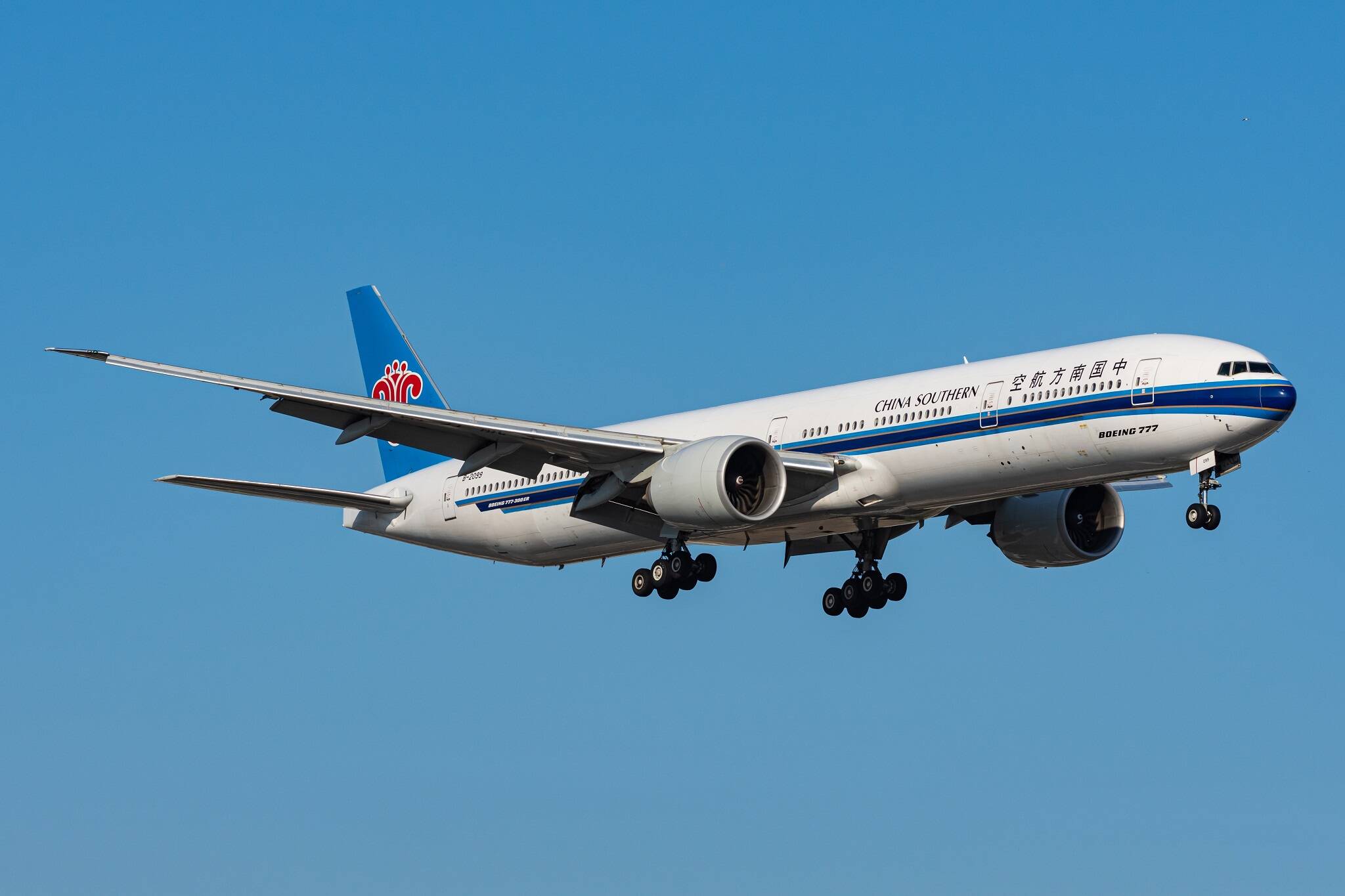
These are the 5 longest flights you can take from Toronto
Latest Videos
The longest flights you can take out of Toronto Pearson International Airport will eat up as much as 16 hours of travel time, a price many are willing to pay to see the world or visit relatives back home.
The busy spring travel season has arrived at the airport, and travellers are flocking to the hub for flights to far-off destinations, including some that will keep you stuck in an airplane seat for the better part of a day.
So bring that travel pillow, because, excluding flights with connecting layovers, these are the five longest routes travelling out of Toronto.
Philippine Airlines flight PR119 to Manila
The hands-down longest direct flight out of Toronto takes to the skies three times per week bound for the Philippines capital, Manila. blogTO highlighted the flight experience on this lengthy voyage , covering everything from the pre-flight process to the in-flight meals.
EVA Air/Air Canada flight BR 35 to Taipei
Flights serving the Toronto-Taipei route are just 20 minutes shorter than the longest flight departing Pearson. However, this flight to Taiwan is indeed the longest daily scheduled flight out of Canada's busiest airport. But not by much.
Cathay Pacific flight CX 829/CX 825 to Hong Kong
Despite being hundreds of kilometres longer than the Taipei route, flights serving Hong Kong actually last five minutes shorter in flight duration. Still, the route earns the title of the longest daily scheduled flight departing Pearson by distance travelled.
China Southern Airlines flight CZ312 to Guangzhou
This flight departing Toronto once a week is the fourth longest route out of Pearson, but only 35 minutes travel time separates it from the longest overall on this list.
Air Canada flight AC42/Air India flight AI188 to Delhi
It may not be among the top four longest flights out of Toronto, but two routes serving Delhi, India, clocking in at over 15 hours of travel time, will give you more than enough of a window to binge that series you've been meaning to start.
Honourable mention:
Air canada flight ac61/korean air flight ke74.
While the flight time is practically identical to the Toronto-Delhi routes, these two Toronto-Seoul routes clock in at just 27 km shorter — and are more or less tied as the fifth-longest flights you can take out of Toronto.
Minh K Tran / Shutterstock.com
Join the conversation Load comments
Latest in Travel
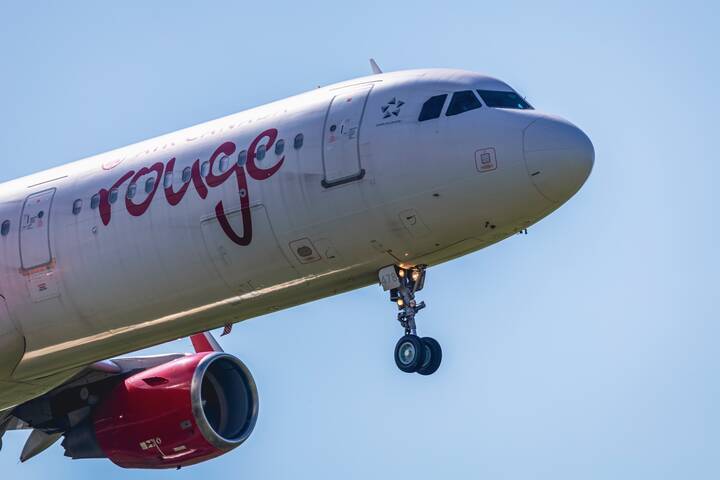
Flight with 164 passengers returns to Toronto after 'control issues' with plane
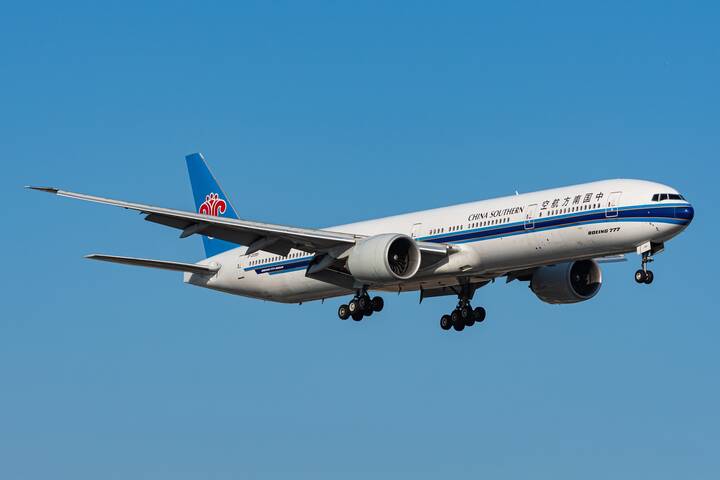
Toronto will soon have a new direct flight to an ancient European city

Canadian explains why she prefers being back home after 11 years living abroad

This spooky abandoned tunnel in Ontario is an epic photoshoot destination

Romantic bridge is one of only two covered bridges in Ontario

Historic site in Ontario has a 'whispering' dam that's almost 200 years old
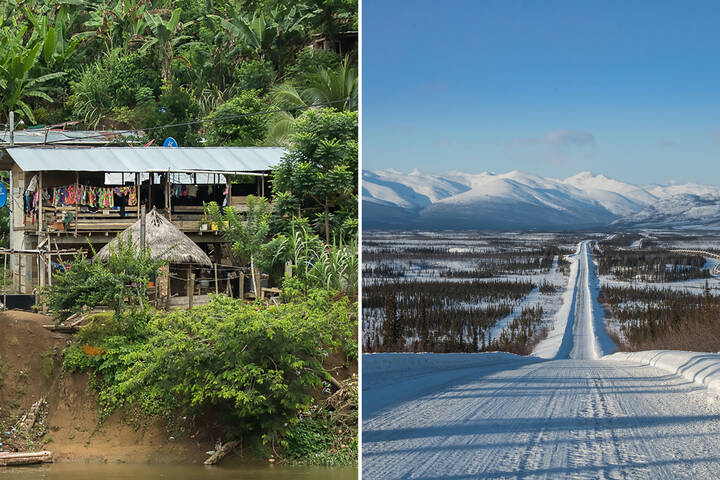
These are the furthest places you can travel to from Toronto by car

IMAGES
VIDEO
COMMENTS
Broccoli paratha is an Indian style paratha with the addition of mixed herbs for a flavourful touch.This unique broccoli paratha has the brilliant flavour of mixed herbs, chilli flakes and pepper. So, on some days, you can serve this hot and fresh for breakfast or after school, while on some days you can pack it as a tiffin treat or a travel food! ! Also pack refreshing Minty Nimbu Paani in a ...
In case you're a vegetarian and don't eat eggs, you can always go for butter toast instead. Besides being simple and healthy, this is very affordable food for train journeys. 4. Idli And Vada - The Long Laster. If you're fond of South Indian food, idli and vada are among the best long-lasting Indian food for travel on trains.
Two major meals and one minor meal. Types of major meals: Breakfast, lunch, dinner, refreshment, supper. Types of minor meals: Continental breakfast, hand-helds (wraps/rolls) Note: The type of major meal depends on your flight's departure time. Liquor will be served for all major meals except breakfast.
Go to your pantry and put together a mixture of different types of nuts and seeds. It includes seeds such as flaxseeds, sunflower, and pumpkin. Add nuts such as walnuts, almonds, and so on. When it comes to something to nib on, trail mix makes for the best food for travelling in car.
This helps the thepla survive for longer. It is popular and hails from the same region as the Khakhra and is also available in multiple flavors (such as masala, methi and curd paratha). When packed properly this too is easy to transport. 3. Mathri. Mathri - Indian Food To Carry While Traveling Abroad.
Garlic Bread. Aloo Palak Pakora. Bread Pakora. Vegetable Pulao with pickle. Sweet Corn Pulao. Puri - Aloo : This is one of the best liked and relished travel food of all time. You can pack some mango pickle or tomato thokku along. Curd Rice with tomato thokku. Tamarind Rice.
15 The Savoury Cake, Dhokla. Originally from Gujarat, dhoklas are healthy Indian snacks that are most often consumed in the evening. These light and fluffy cube-shaped snacks are made from a fermented batter of gram flour ( besan) and mild spices and can be had at any time during the day.
Meat and Indian bread are the main features of north Indian food. It's hearty and commonly cooked in a tandoor (clay oven fired by charcoal). North Indian curries usually have thick, moderately spicy and creamy gravies. Popular dishes: Roti, naan, seekh kebab (minced meat on iron skewers), chicken tikka (small chunks of marinated and grilled ...
Lunch/Dinner - Palak paneer with rice; chana masala with chapati; chicken curry with naan. Dessert - Gulab jamun; rasmalai; fruit salad. Beverages - Chai tea, coffee, juices, beer, wine, spirits. With Air India's extensive meal service, economy flyers can enjoy Indian comfort food at 35,000 feet.
Breakfast is served between 0730-1000 while lunch is served from 1230-1500 and dinner at 1930-2200. For all other times, you still will be served a meal it may just be a snack or a smaller meal. Flights of up to 5 hours: Passengers will be served one major meal. Flights of 5 to 9 hours: Passengers will be served one major meal and one minor meal.
The airline made a big announcement about the upgrade to economy class meals earlier this year. While it was a good PR move, the actual changes were minimal, with the addition of a small salad to the meal tray and a slightly larger dessert. In between meals, passengers could help themselves to drinks in the galley.
Air India's transformation continues with new inflight menus being rolled out in all travel cabins on international flights from India to USA and other countries. The baby steps that the airline had started taking right after its comeback to the Tatas have become strides guided by CEO Campbell Wilson, such as the 470-aircraft deal, the […]
Air India, which recently introduced a new menu on its domestic and international flights, has repackaged its in-flight meals to bring together quintessential Indian classics with flavours that appeal to the global palate. As part of its massive overhaul, the gourmet meals will be curated keeping health and wellness of the passengers in mind.
1 / 9. Pesto Pasta with Lemon, Spinach, Edamame & Toasted Almonds. Use smaller, bite-sized pasta. Go to Recipe. 2 / 9. Broccoli and Feta Pasta Salad. A recipe for pasta salad filled with broccoli, feta, and Kalamata olives, which can be made ahead. Go to Recipe. 3 / 9.
Vegetarian Vegan Meal. Contains all types of fruits and vegetables. Does not contain any Dairy products, meat, fish, fowl, egg, animal fat. 6. Moslem Meal. Meals are suitable for Muslims and are prepared in accordance with Halal method. May contain lamb, chicken, fish, eggs, fruits & dairy products.
1. Kurkuri Bhindi or Indian-style Air fried Okra. This is a delightful, crunchy okra recipe where the okra is marinated in Indian spices and air fried. It is great as a snack or a side with rotis. 2. Air fryer Samosa. A popular Indian street food, samosa is a crunchy food that is often had with evening chai or tea.
The Mynt, Indian restaurant with its masterpiece culinary creations, exemplary hospitality and charismatic ambiance, takes you on a mesmerizing culinary journey through India. The eclectic menu boasts of both traditional and classic favorites, as well as contemporary culinary delights. Acclaimed favorites include Kaffir lime and Mango Bean Sprout Chaat Salad, The Mynt Regal Rack of Lamb, Teen ...
Meals in the Air. Inspired by the joy of discovery that travel and new experiences bring, we have curated a tour de force for the tastebuds. Welcome to Gourmair, a gastronomic gourmet experience, featuring a unique melange of master chef specials, lite bites, innovative desserts and global and regional favourites, served oven hot 36,000 feet in the sky.
1 / 5. (669) 242-7956. 1751 North First Street, San Jose, CA 95112. Fast Casual Indian Restaurant With Chicken Curry/ Lamb Curry/ Chicken Tikka/ Paneer/ Saag - Burritos, Poori Tacos, Rice Bowls, Salad Bowls and Samosa Chaat.
Go hungry and save room for ghevar, a decadent dessert from Rajasthan. Open in Google Maps. Foursquare. 132 State St, Los Altos, CA 94022. (650) 383-5221. Visit Website. View this post on ...
Overall, approximately 6,000 Asian Indians immigrated to the United States between 1947 and 1965. From 1965 onward, a second significant wave of Indian immigration began, spurred by a change in U.S. immigration law that lifted prior quotas and restrictions and allowed significant numbers of Asians to immigrate.
Technicians at a company that repairs and maintains Air India Ltd. aircraft have called off a strike planned for Tuesday, easing concerns that the industrial action could spark a renewed bout of ...
The US Food and Drug Administration (FDA) is gathering information on products of Indian spice makers MDH and Everest after Hong Kong halted sales of some of their products for al
All Nippon Airways (ANA) and Air India, the national flag carrier of India, have entered into a commercial agreement marking the beginning of a codeshare partnership that will connect Japan and India. Beginning May 23, this partnership between the two Star Alliance members will enhance flight selection options for travelers,…
Phil Rosenthal of Netflix's "Somebody Feed Phil" on his love of travel, food, discovering the unknown Plus his can't-live-without travel essentials 1 day ago Shopping Essentials
Air Canada flight AC42/Air India flight AI188 to Delhi. 15h 10m; 11,701 km; ... but two routes serving Delhi, India, clocking in at over 15 hours of travel time, will give you more than enough of ...